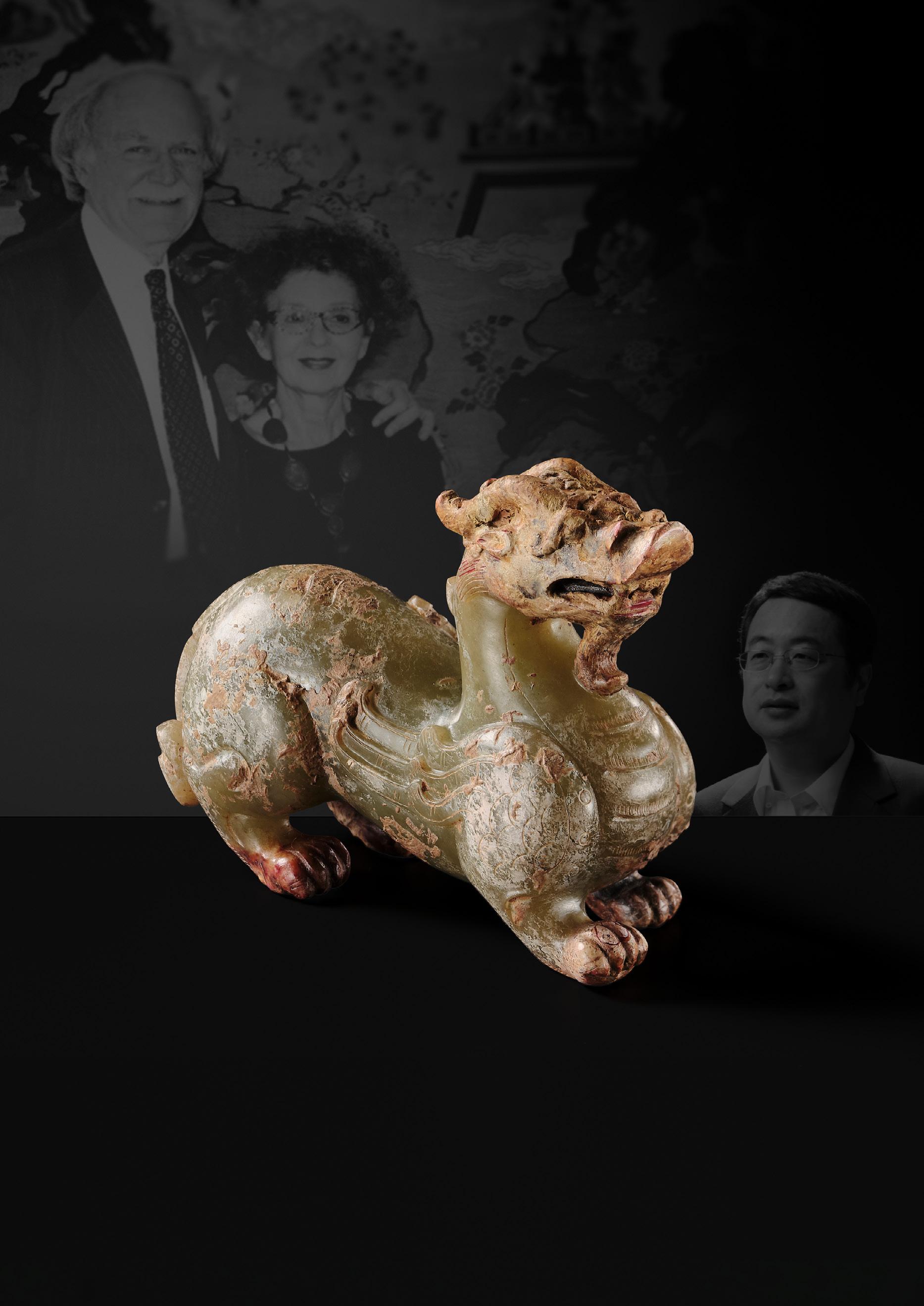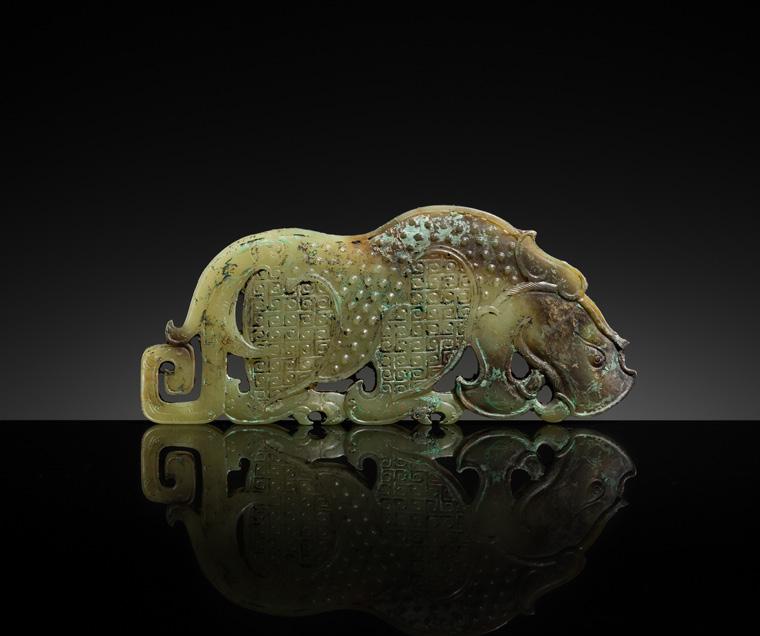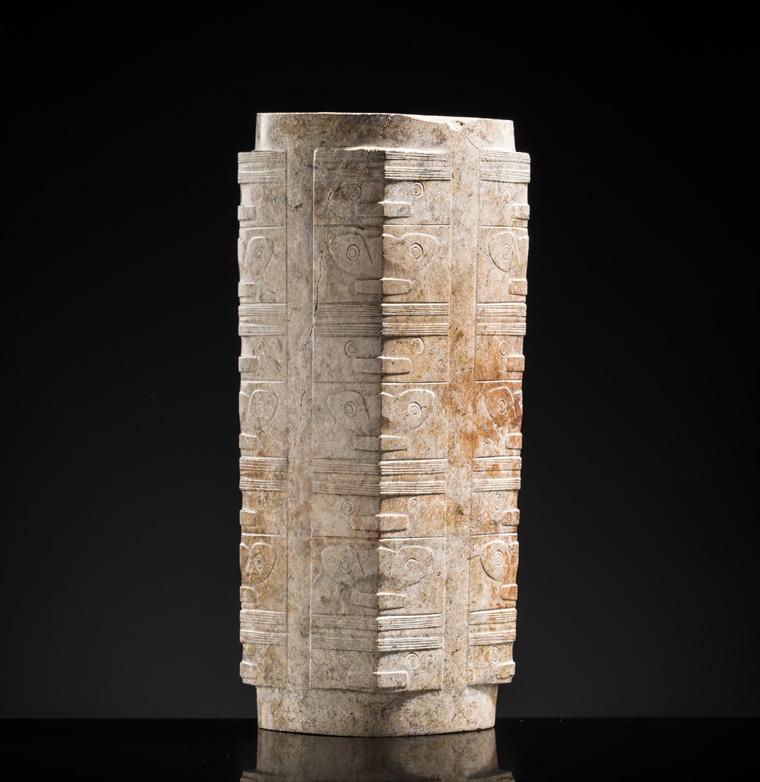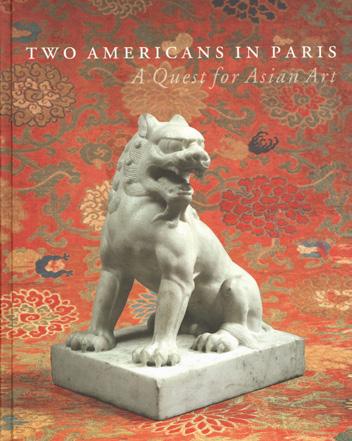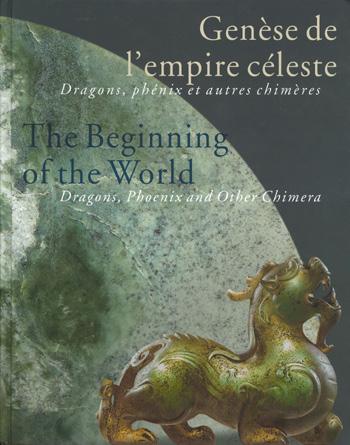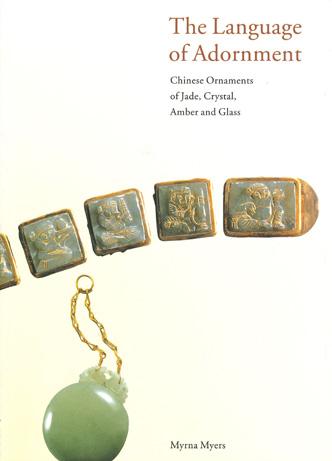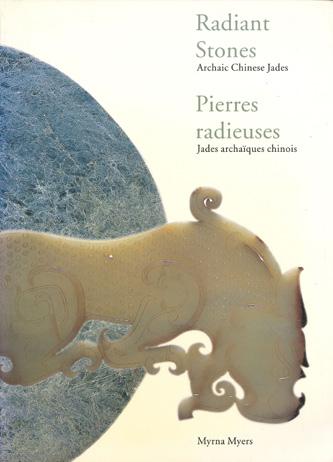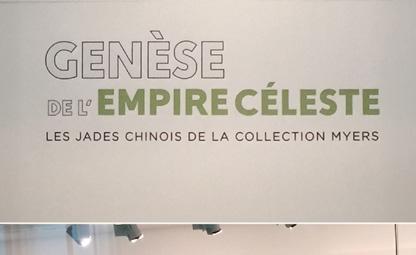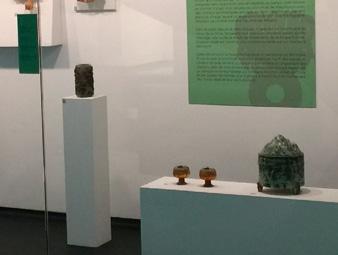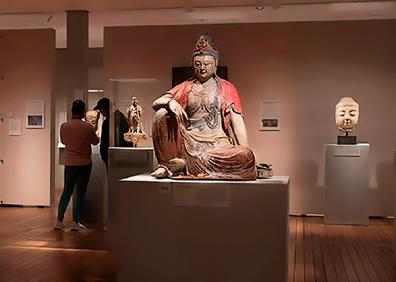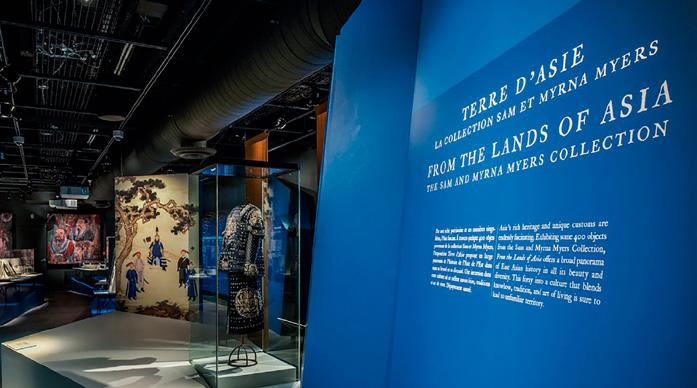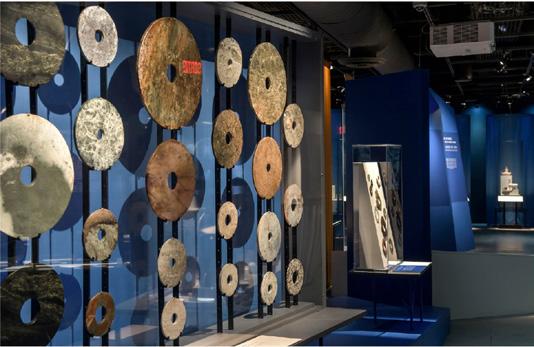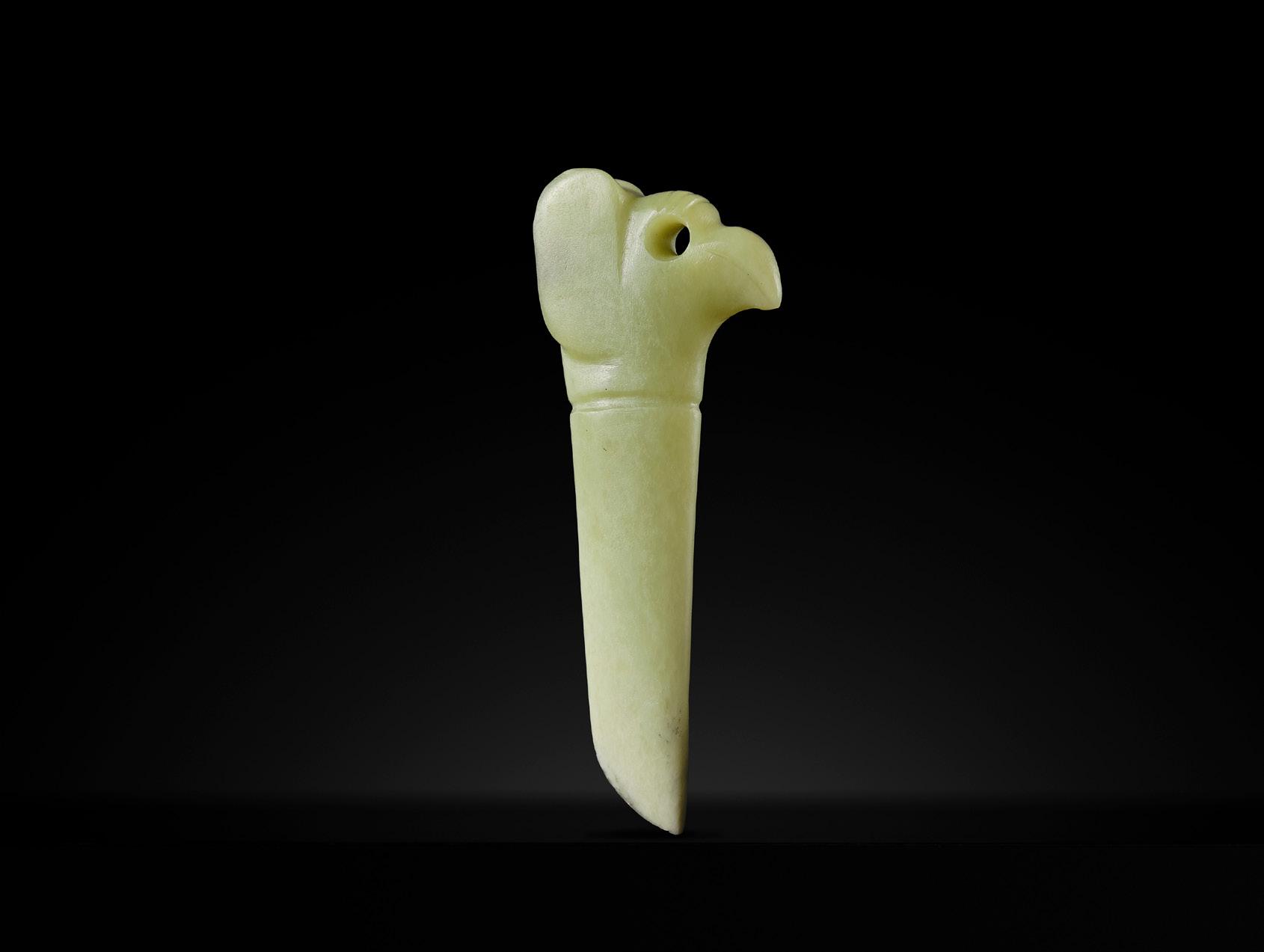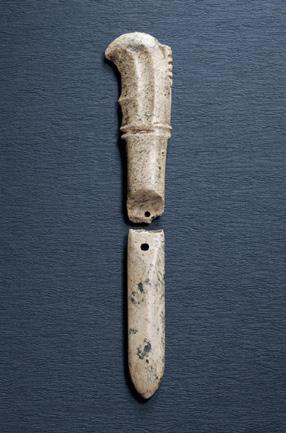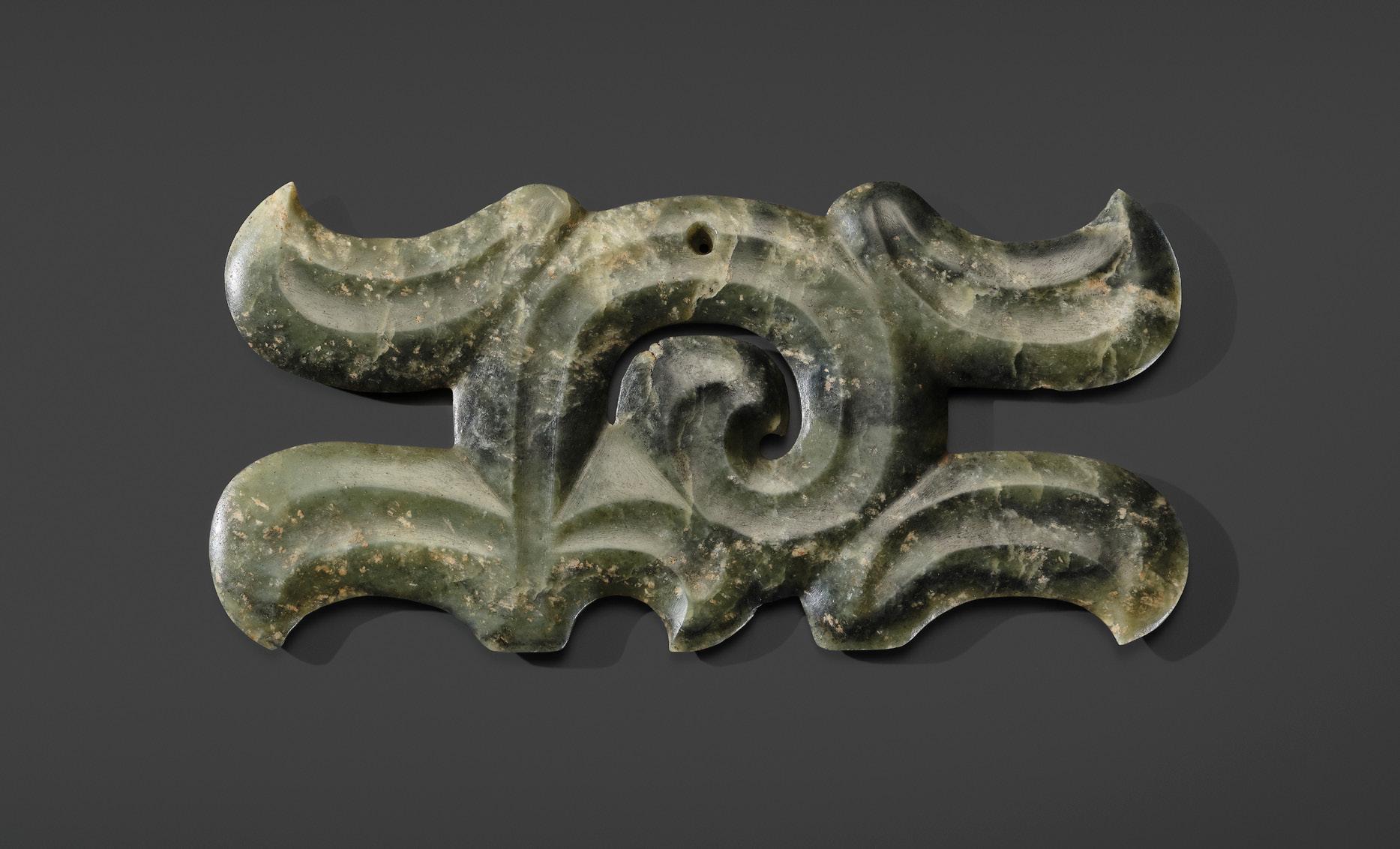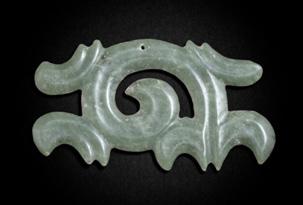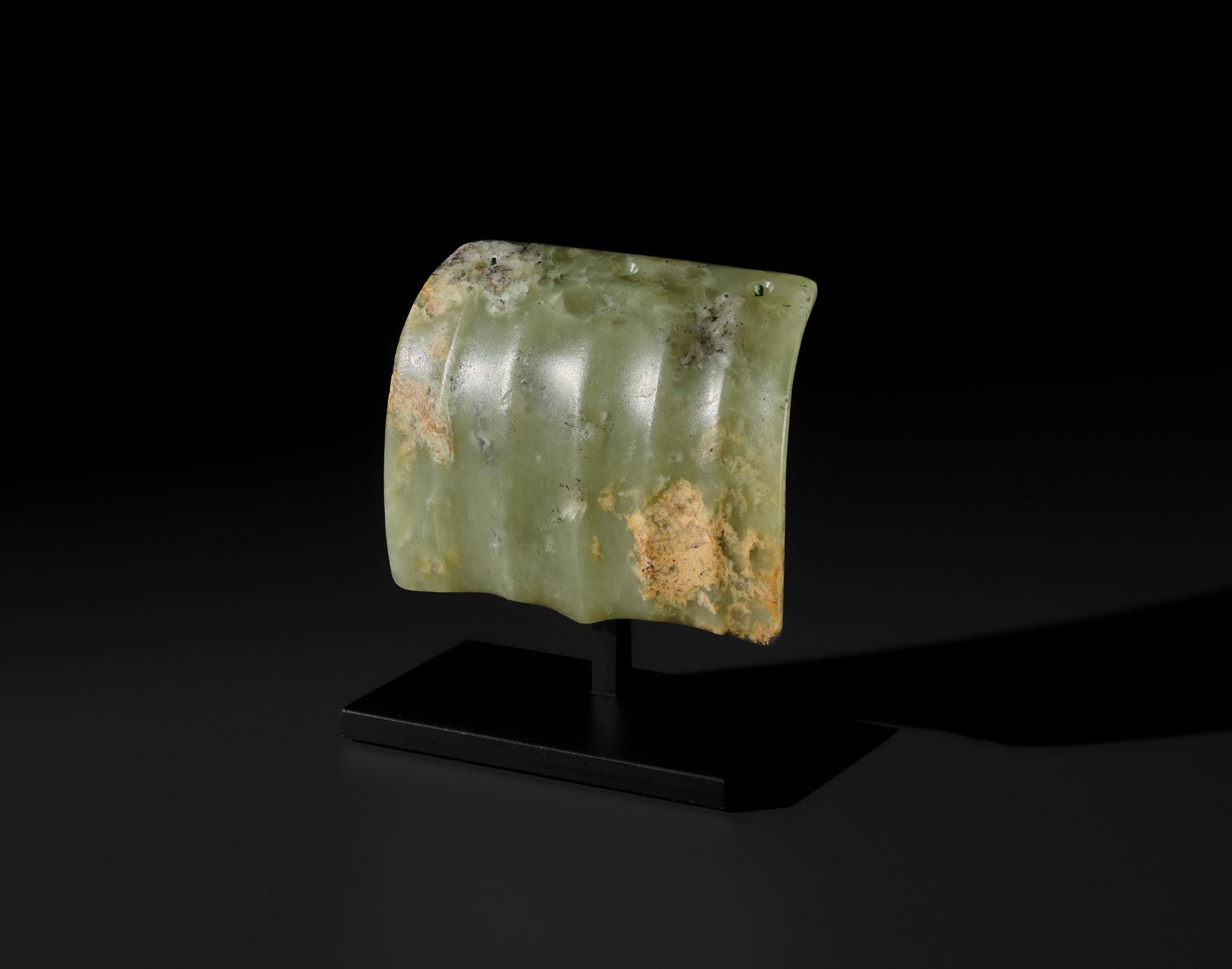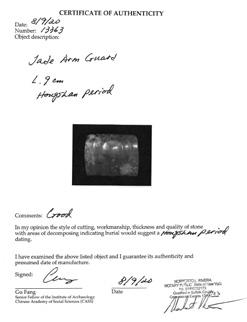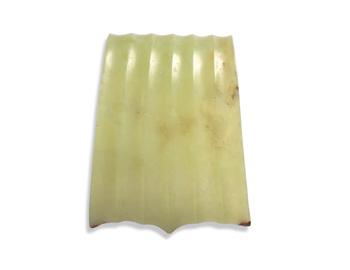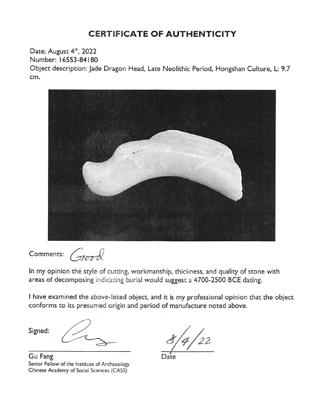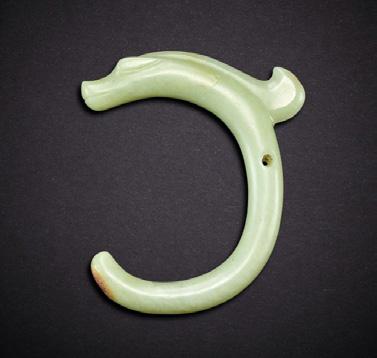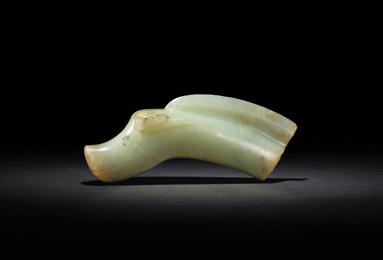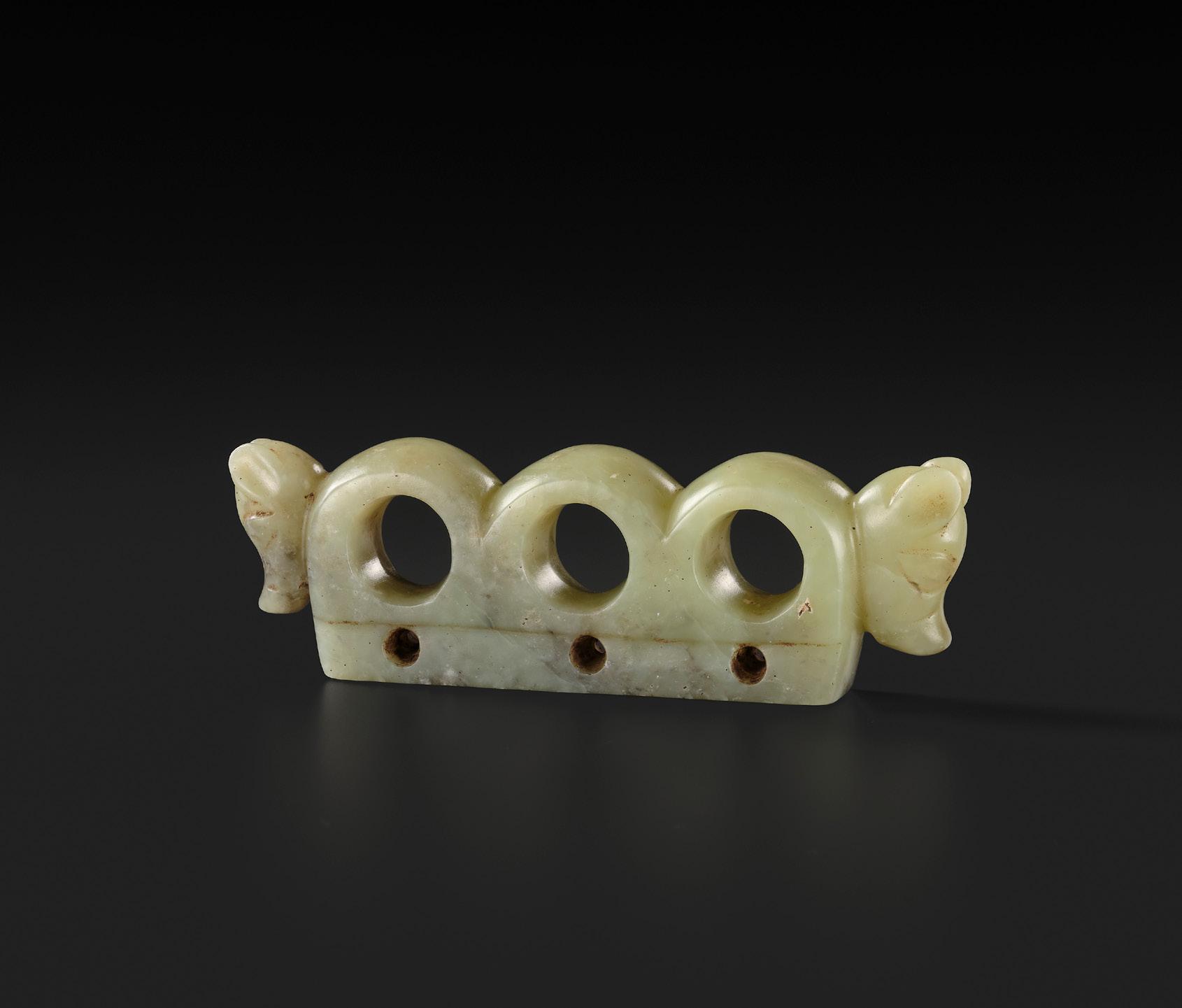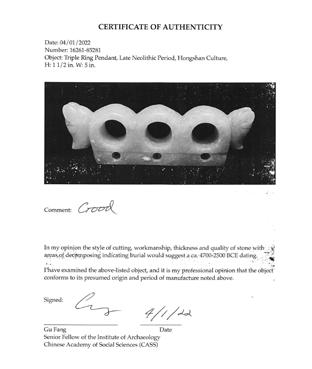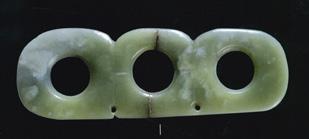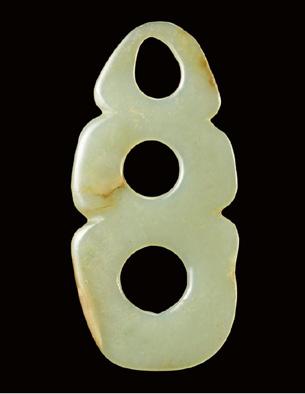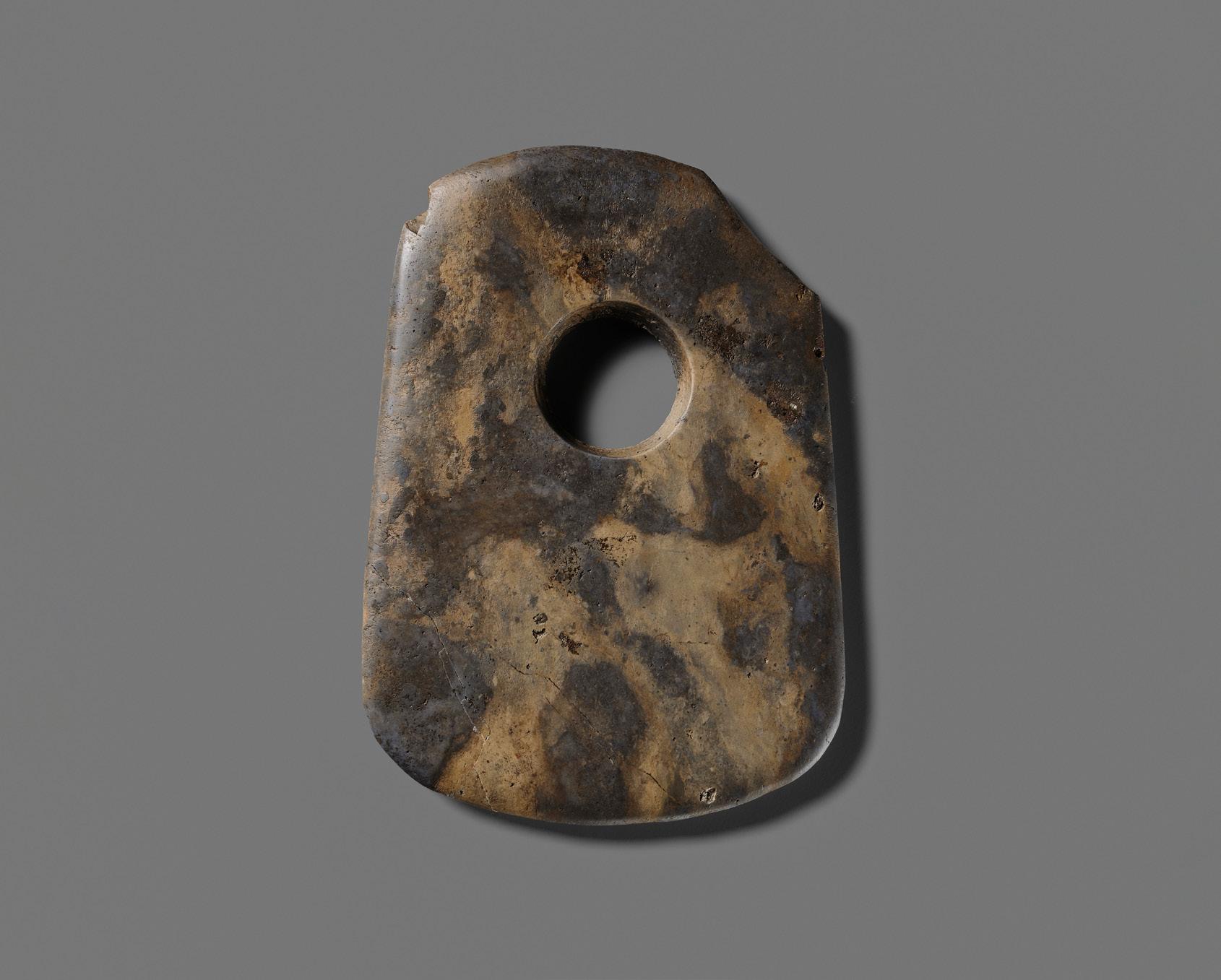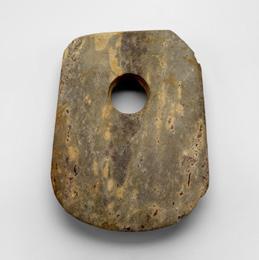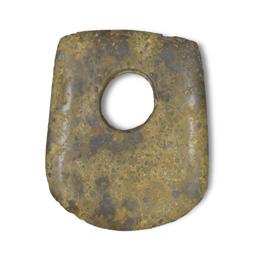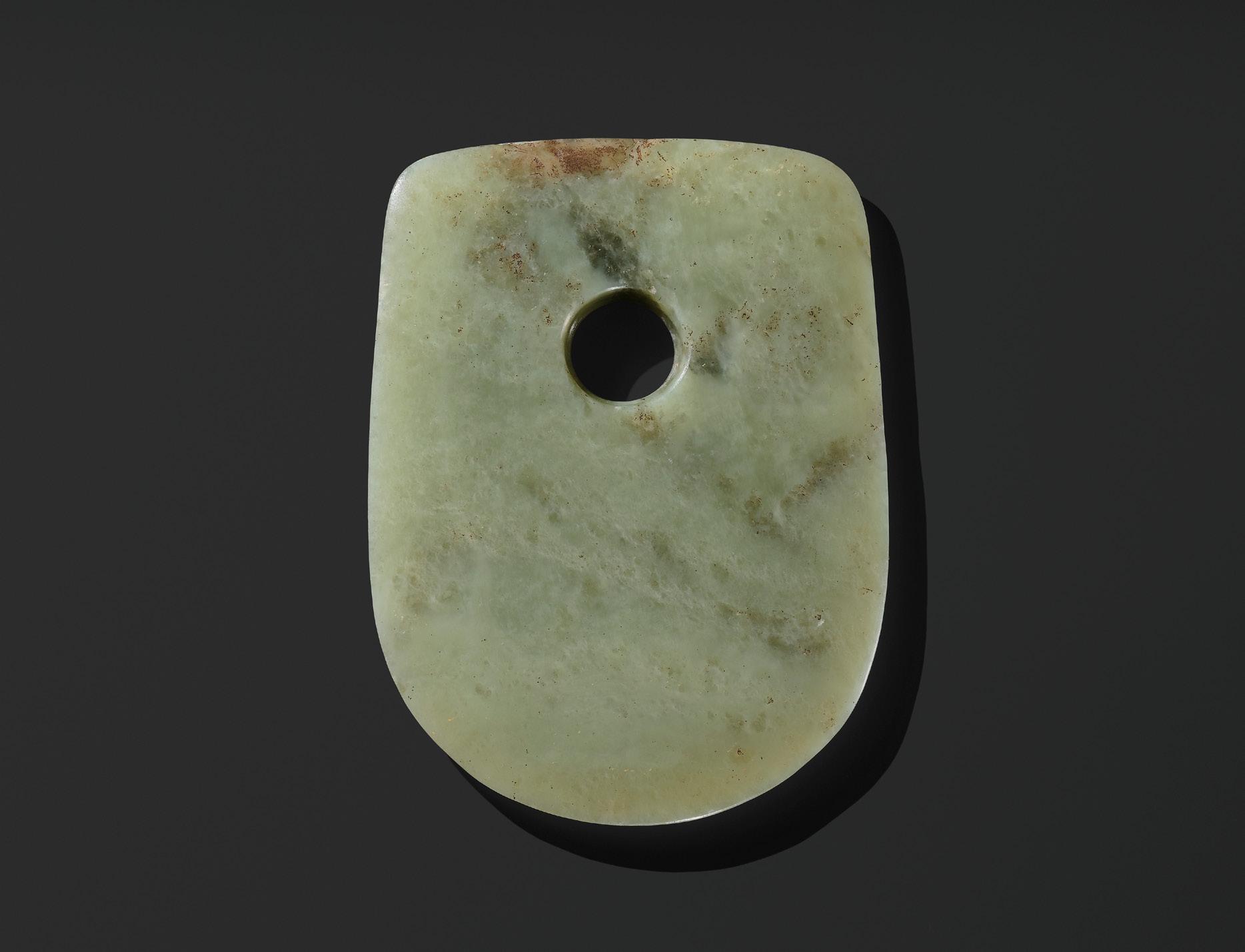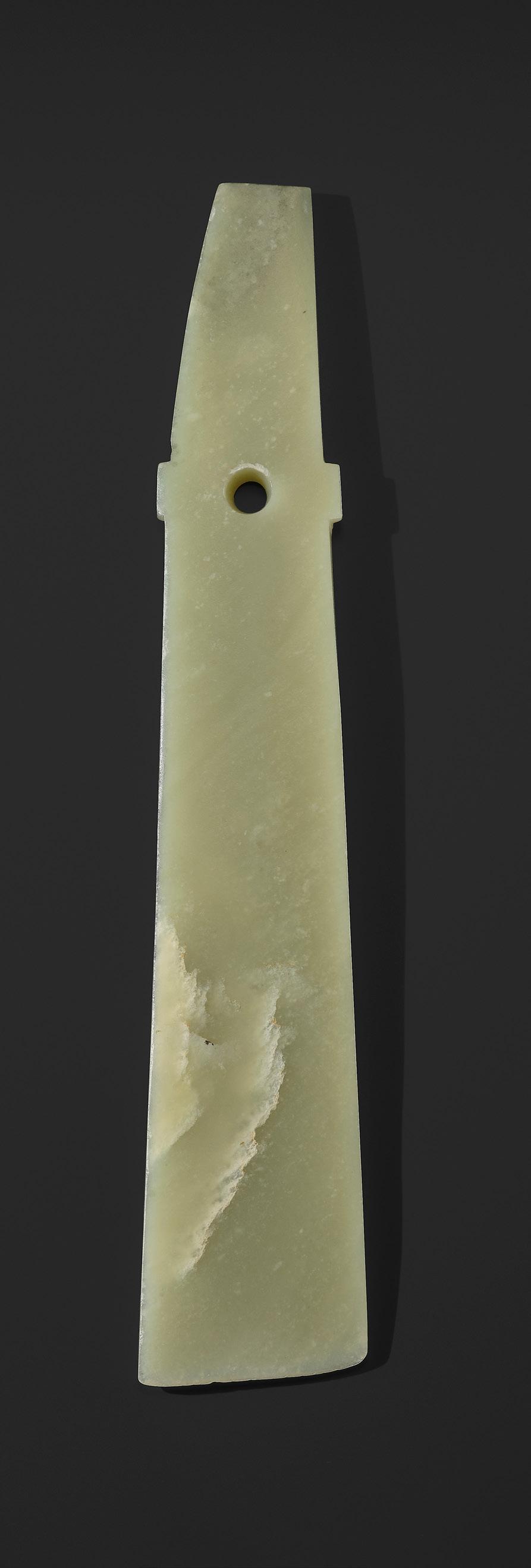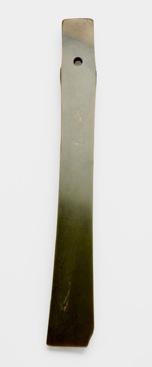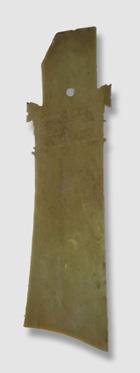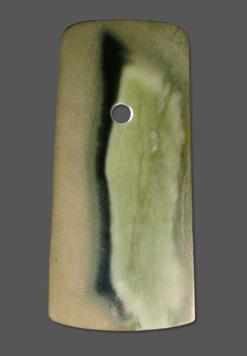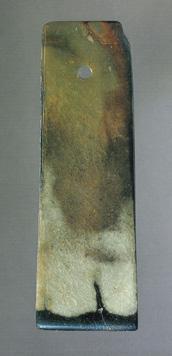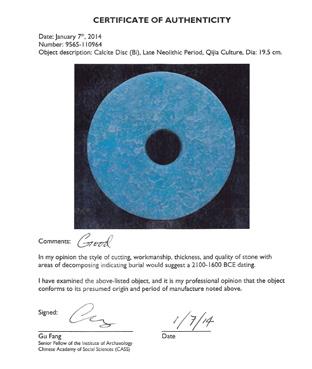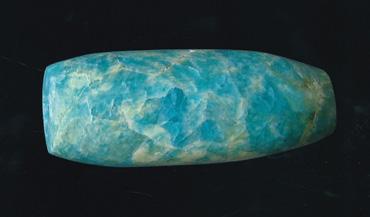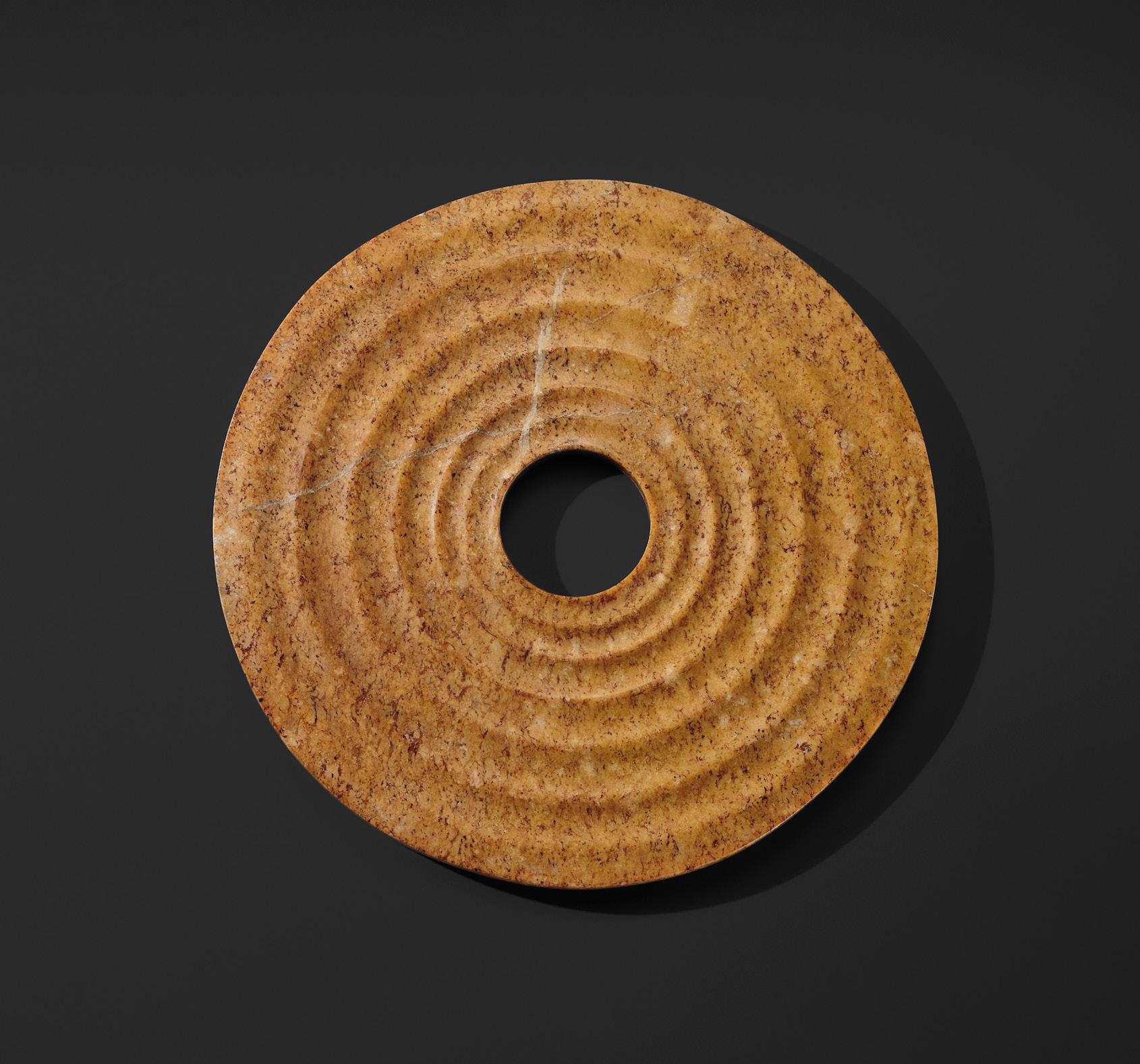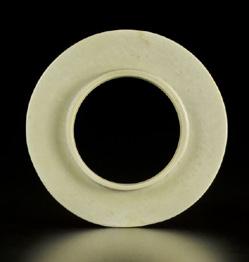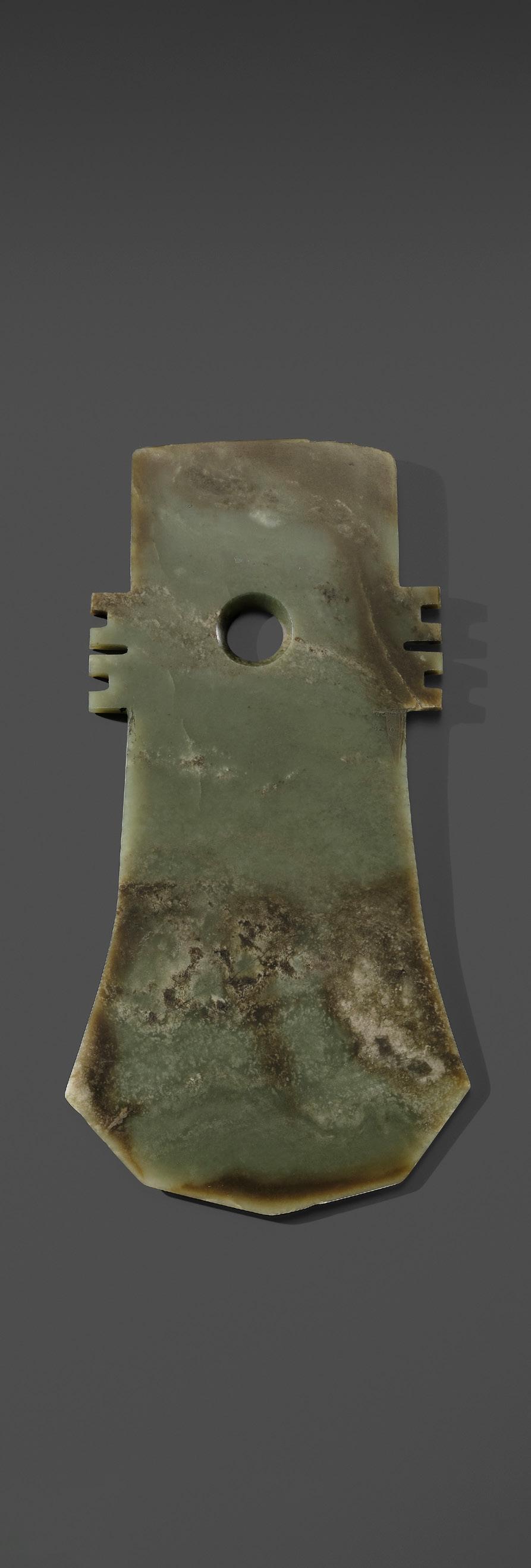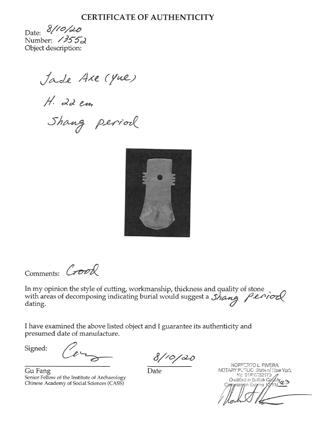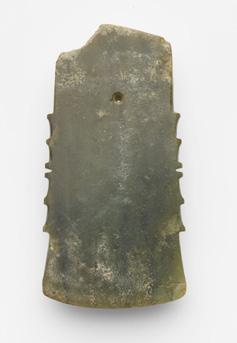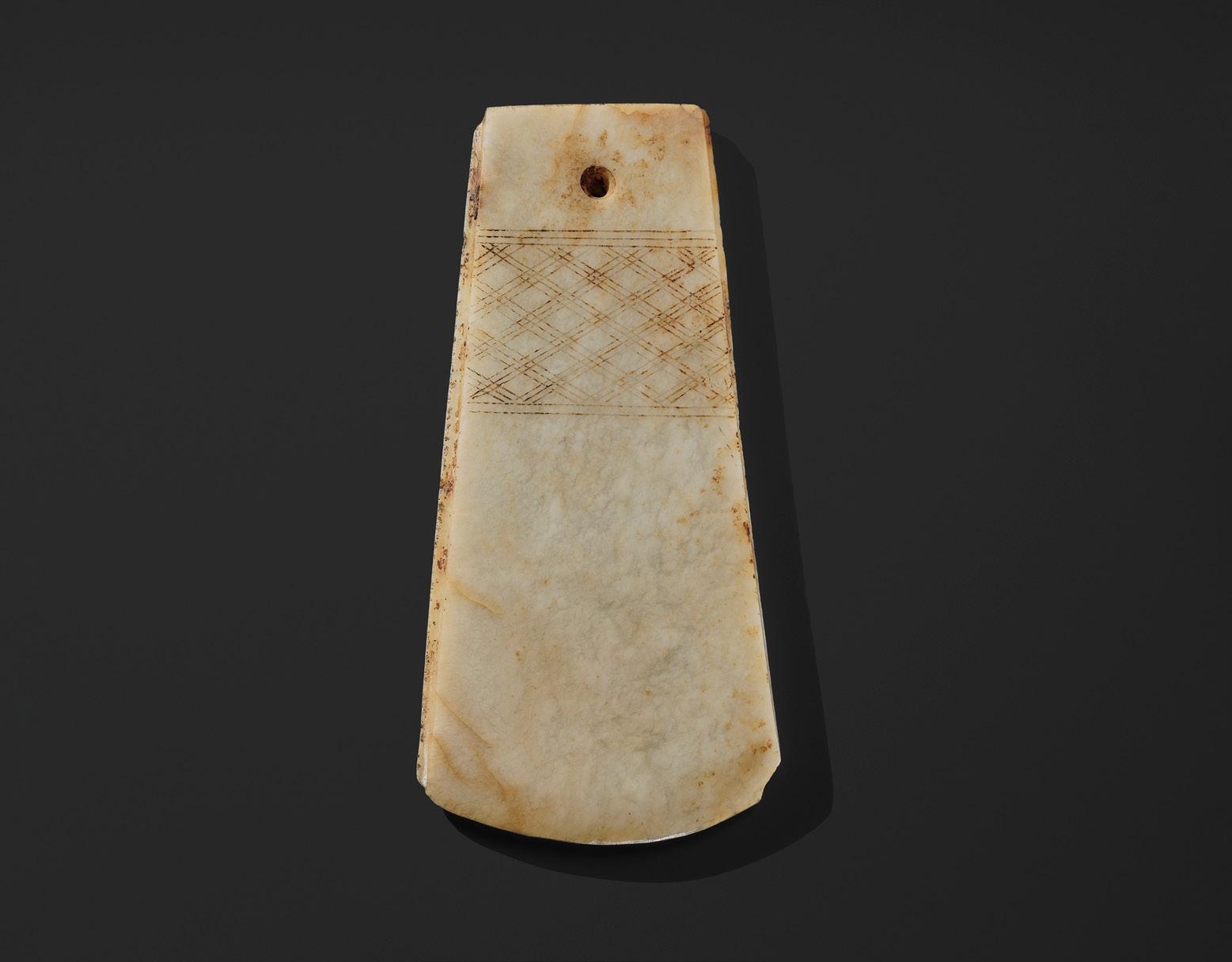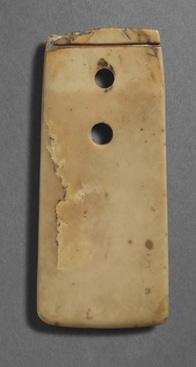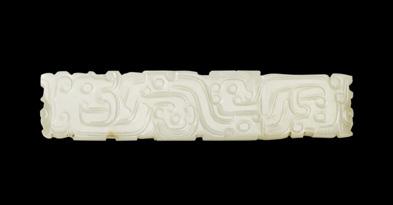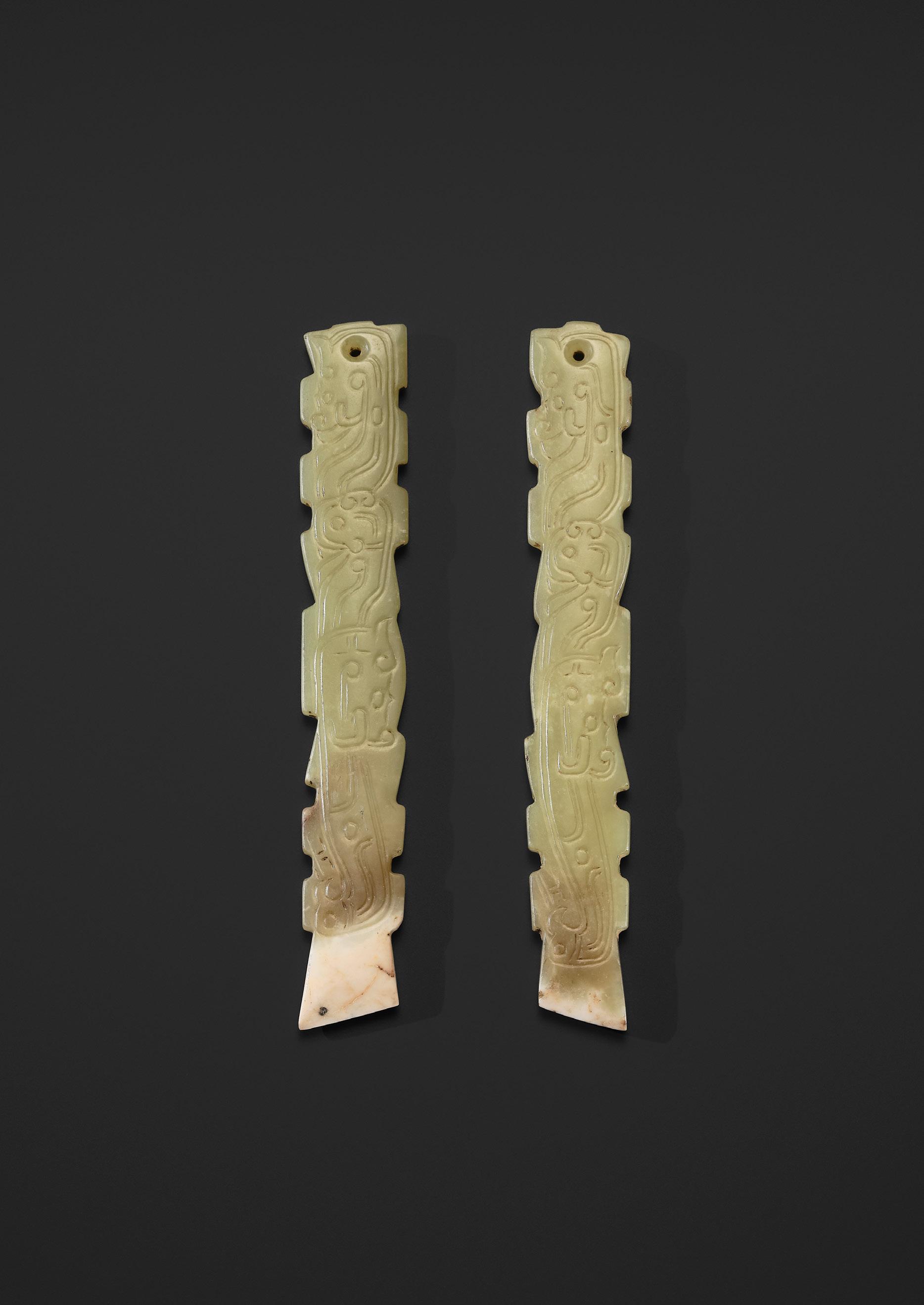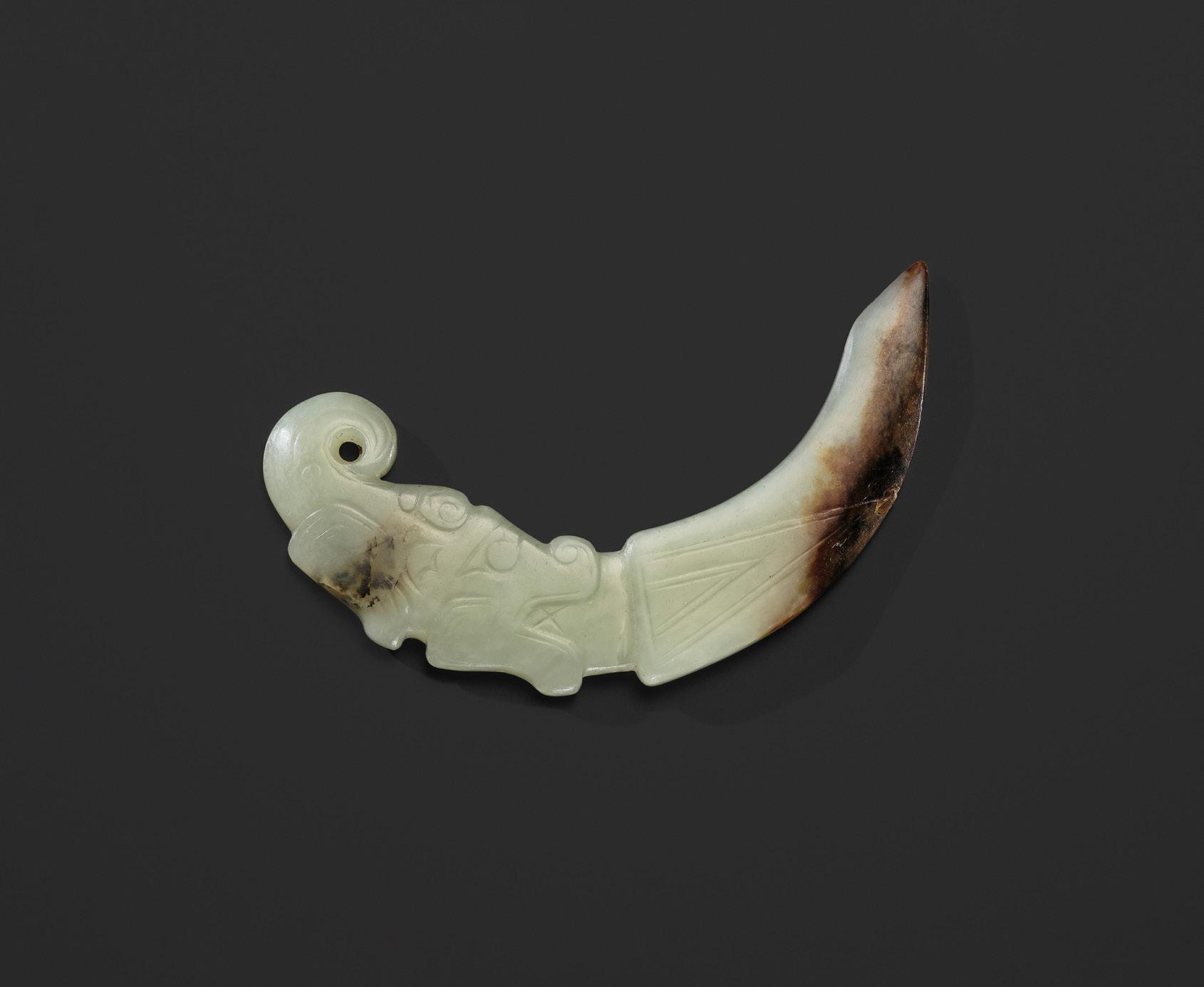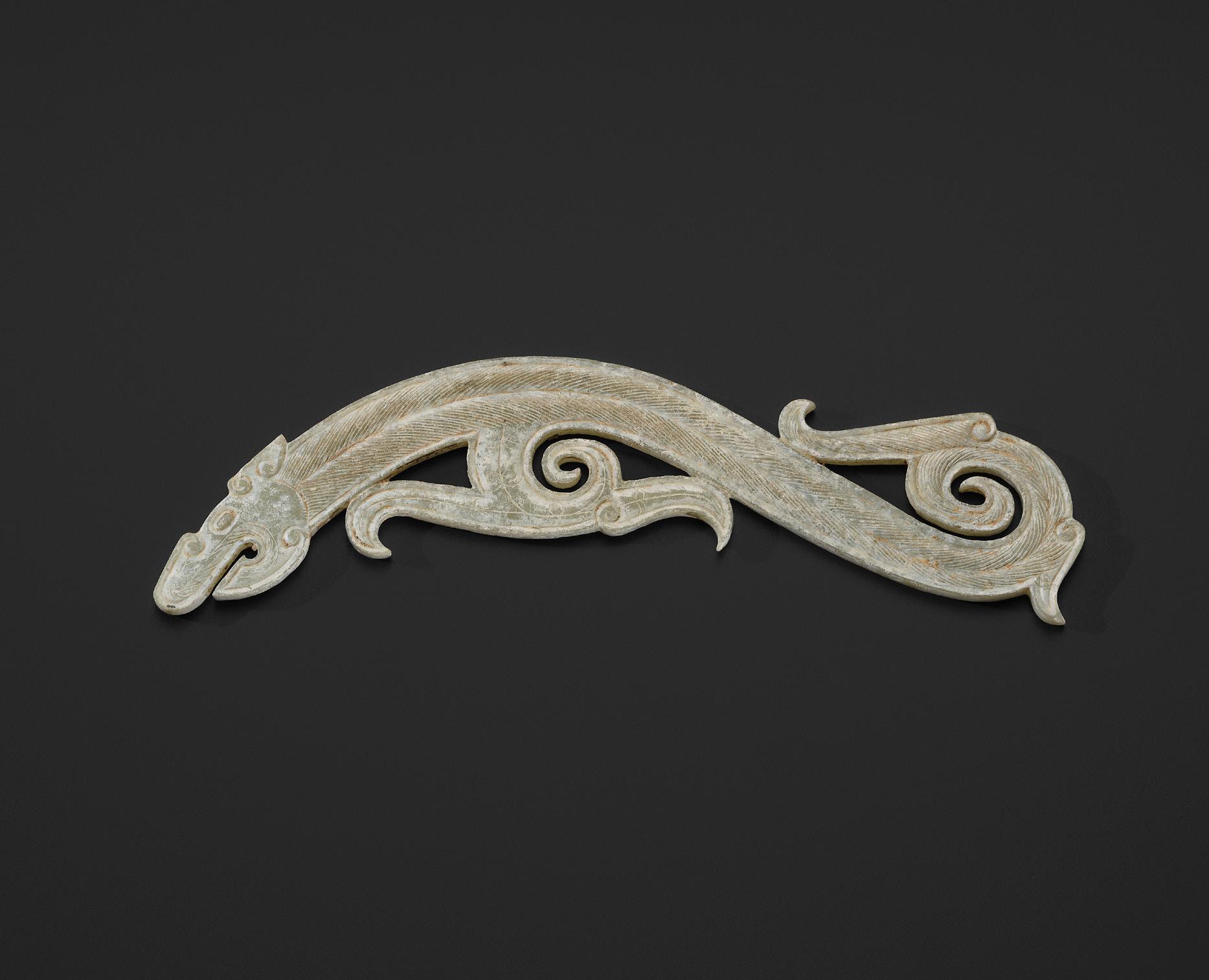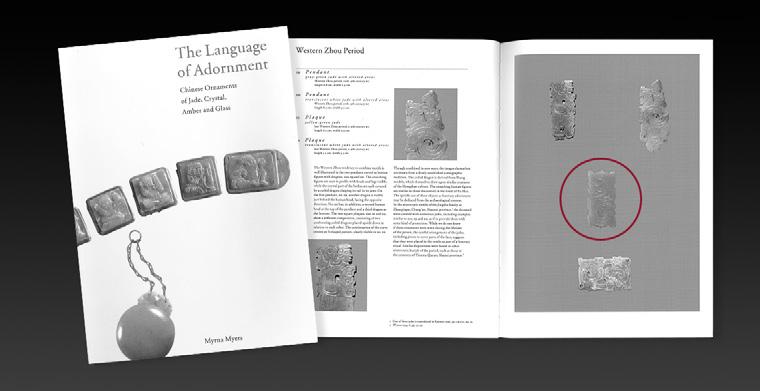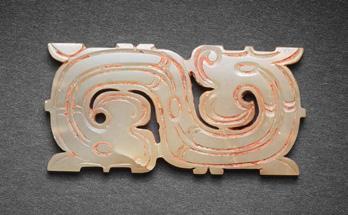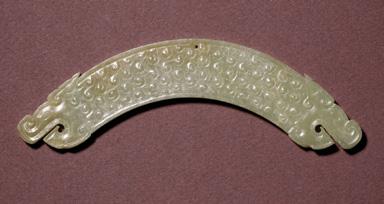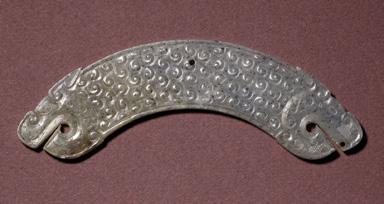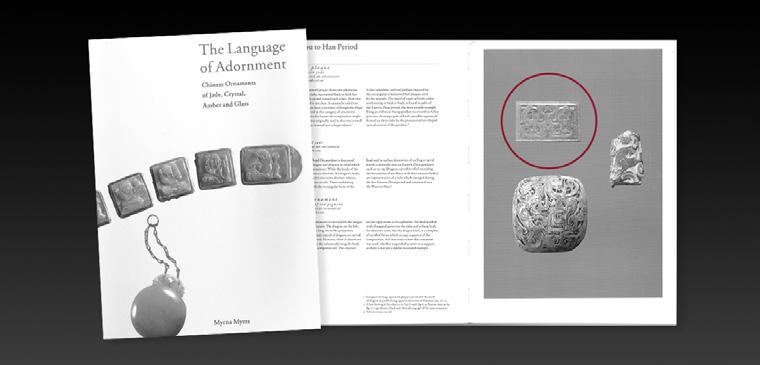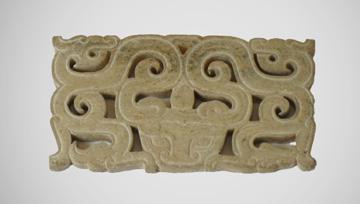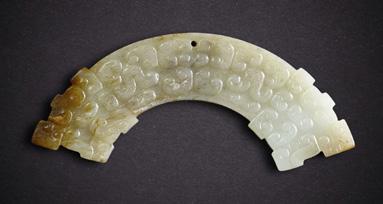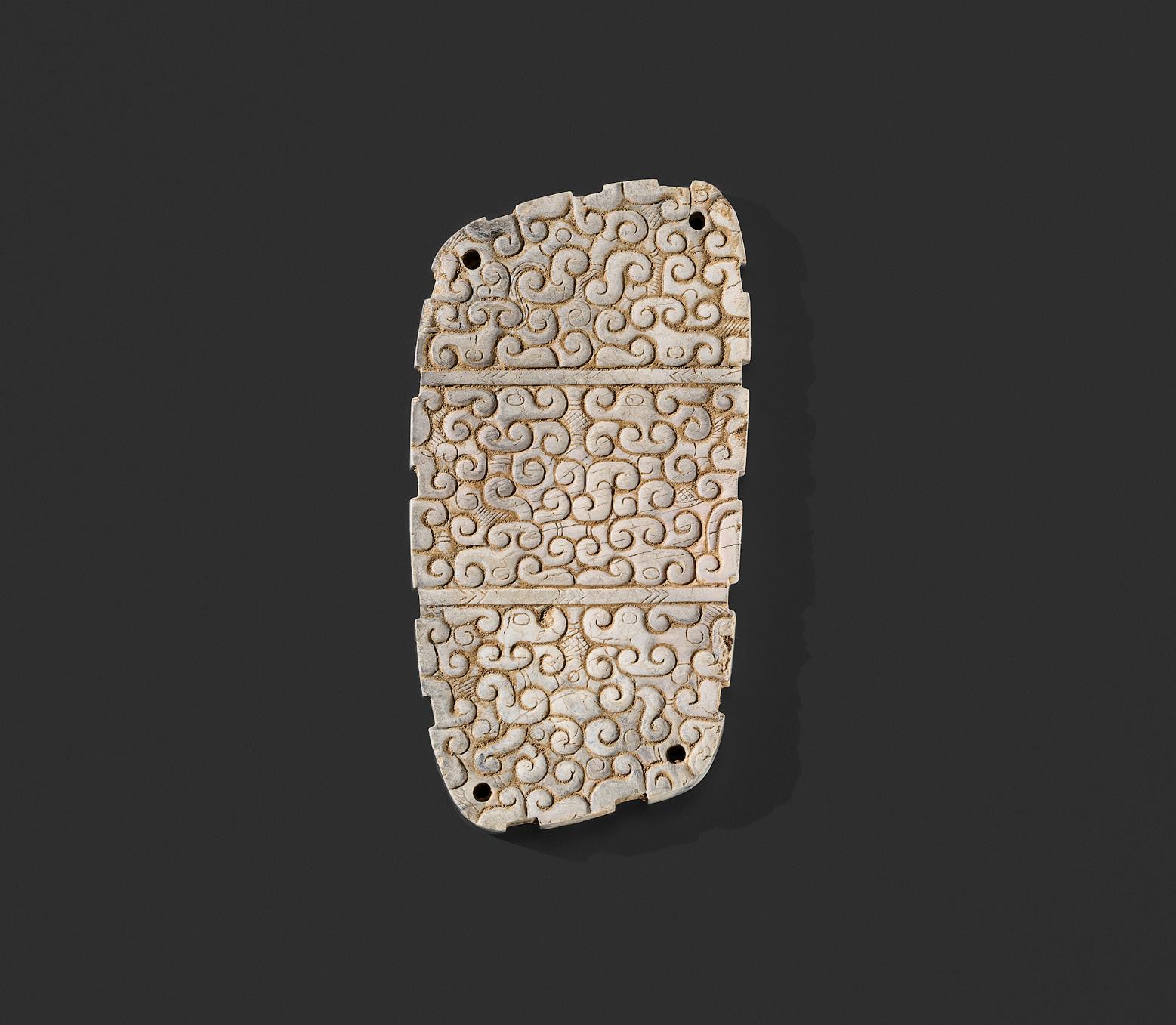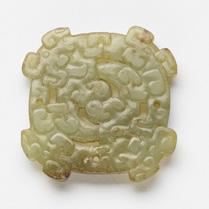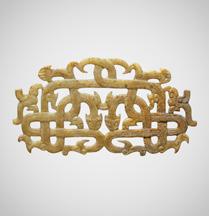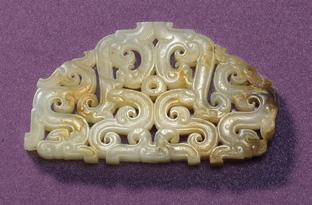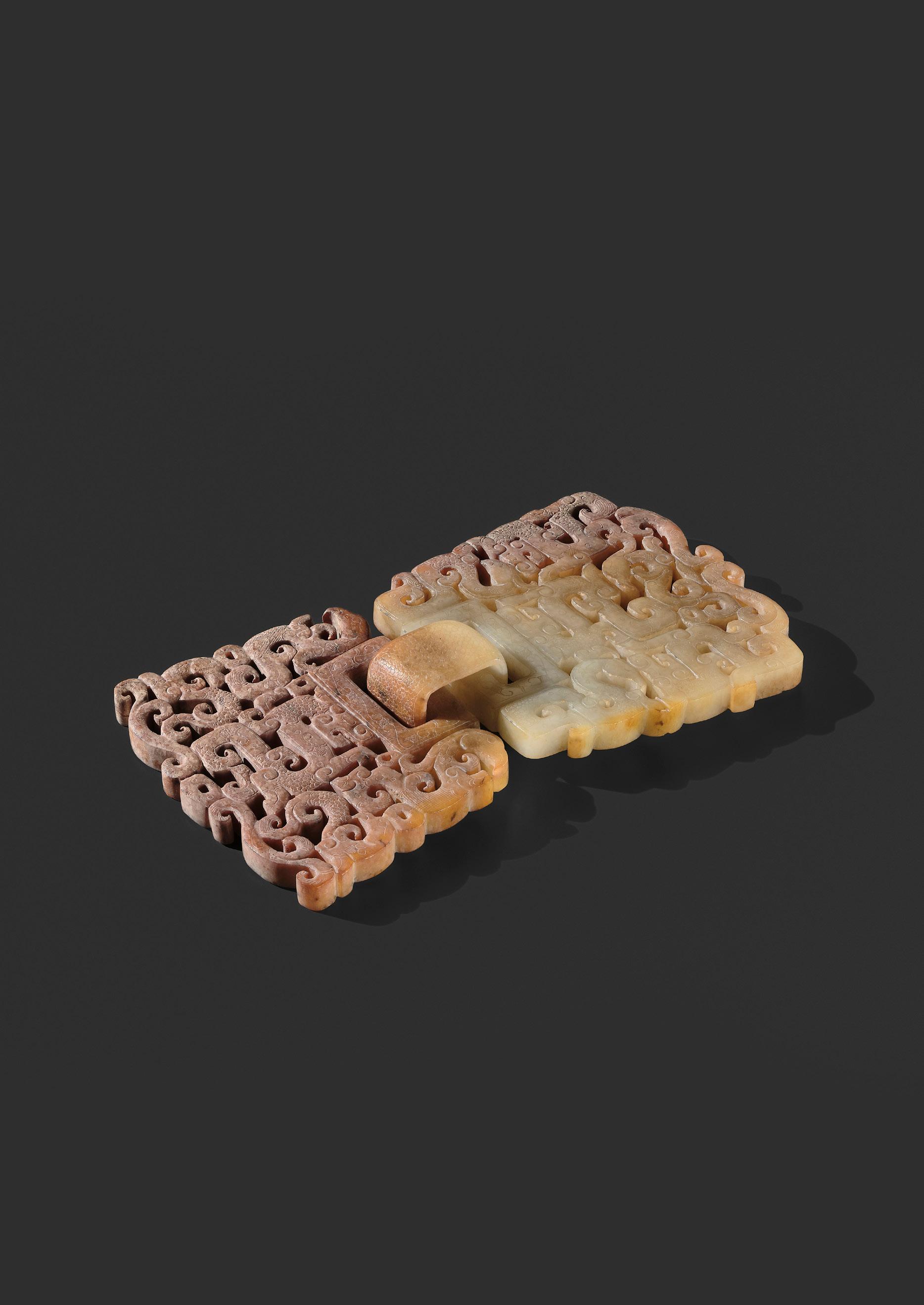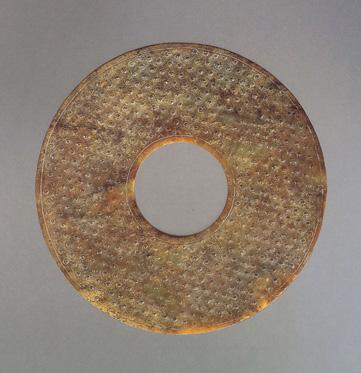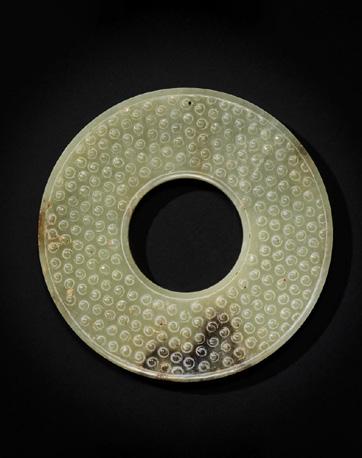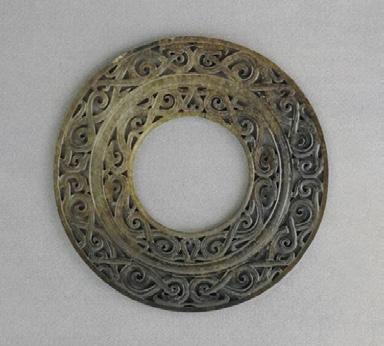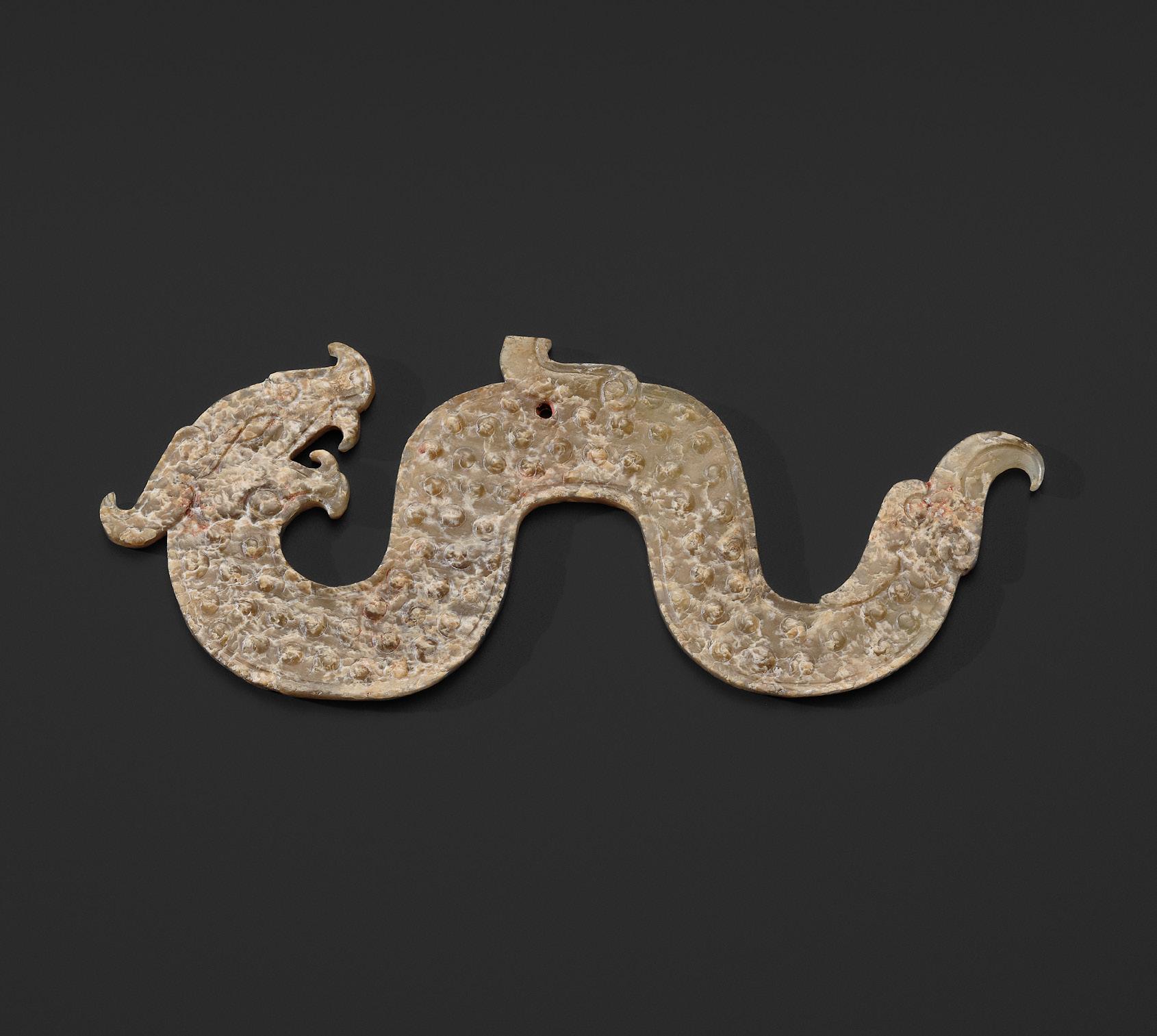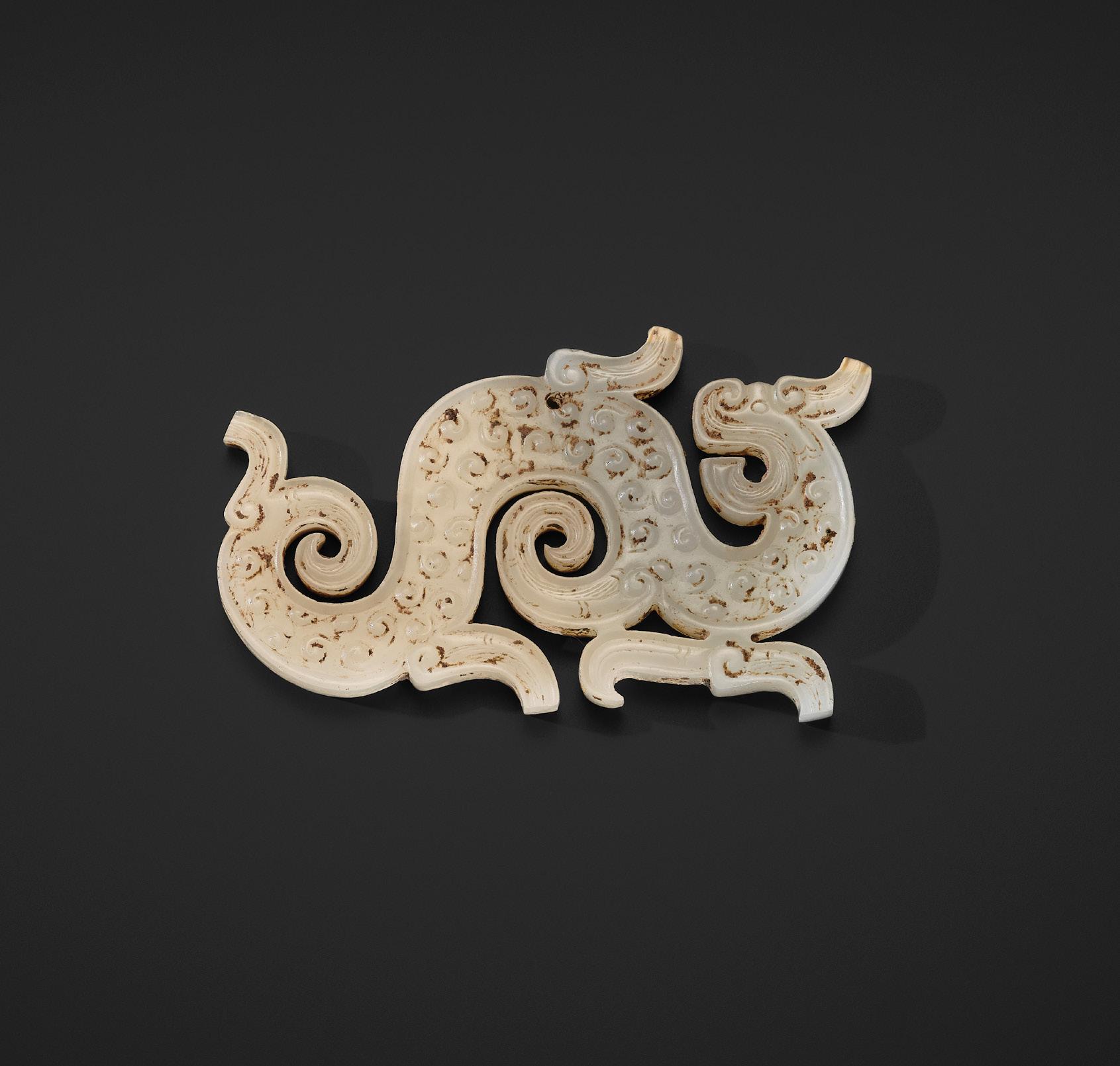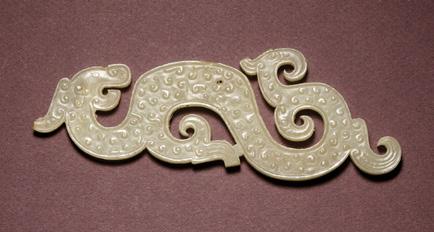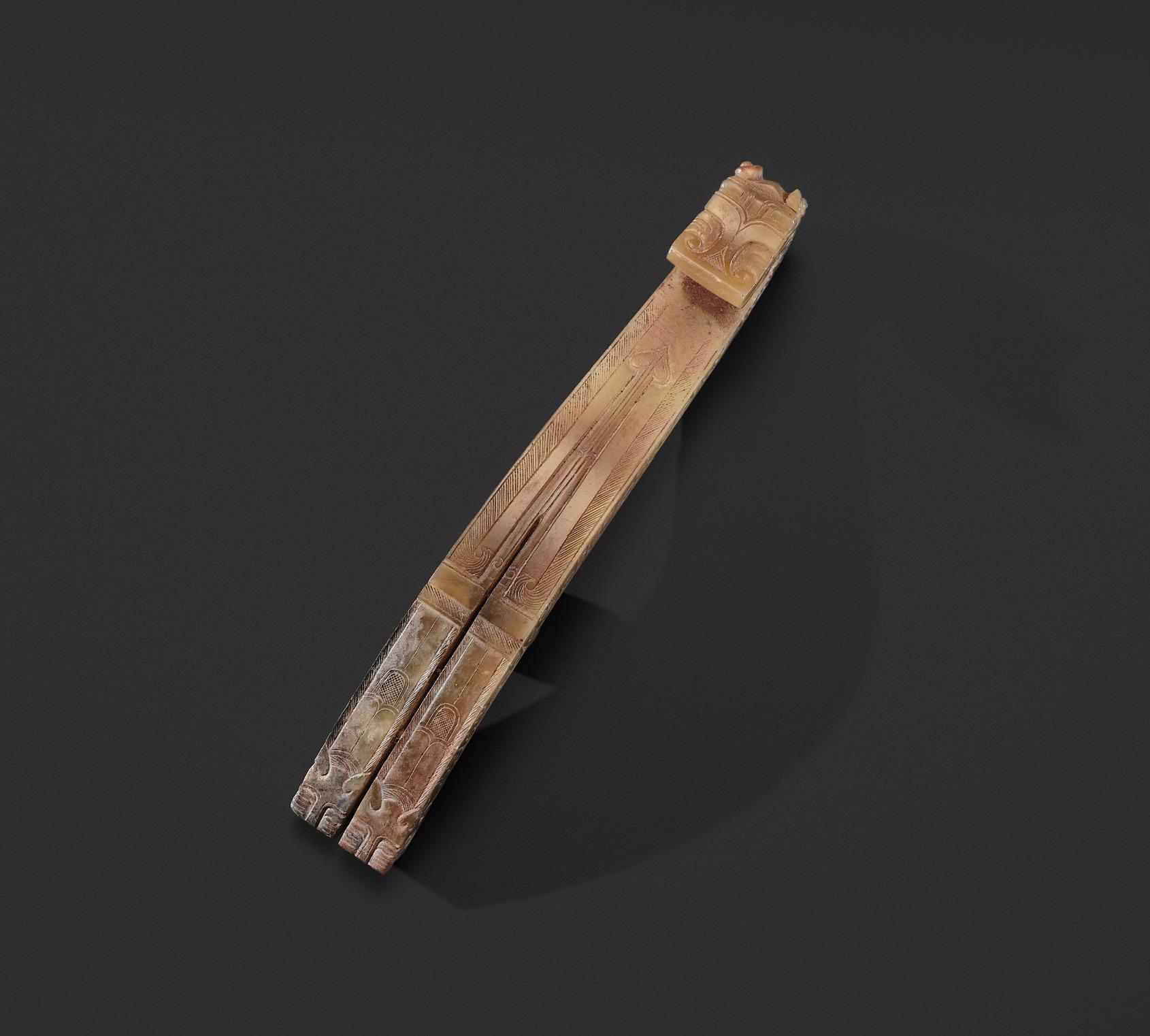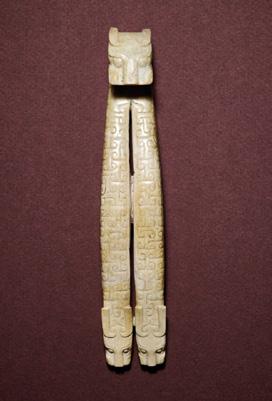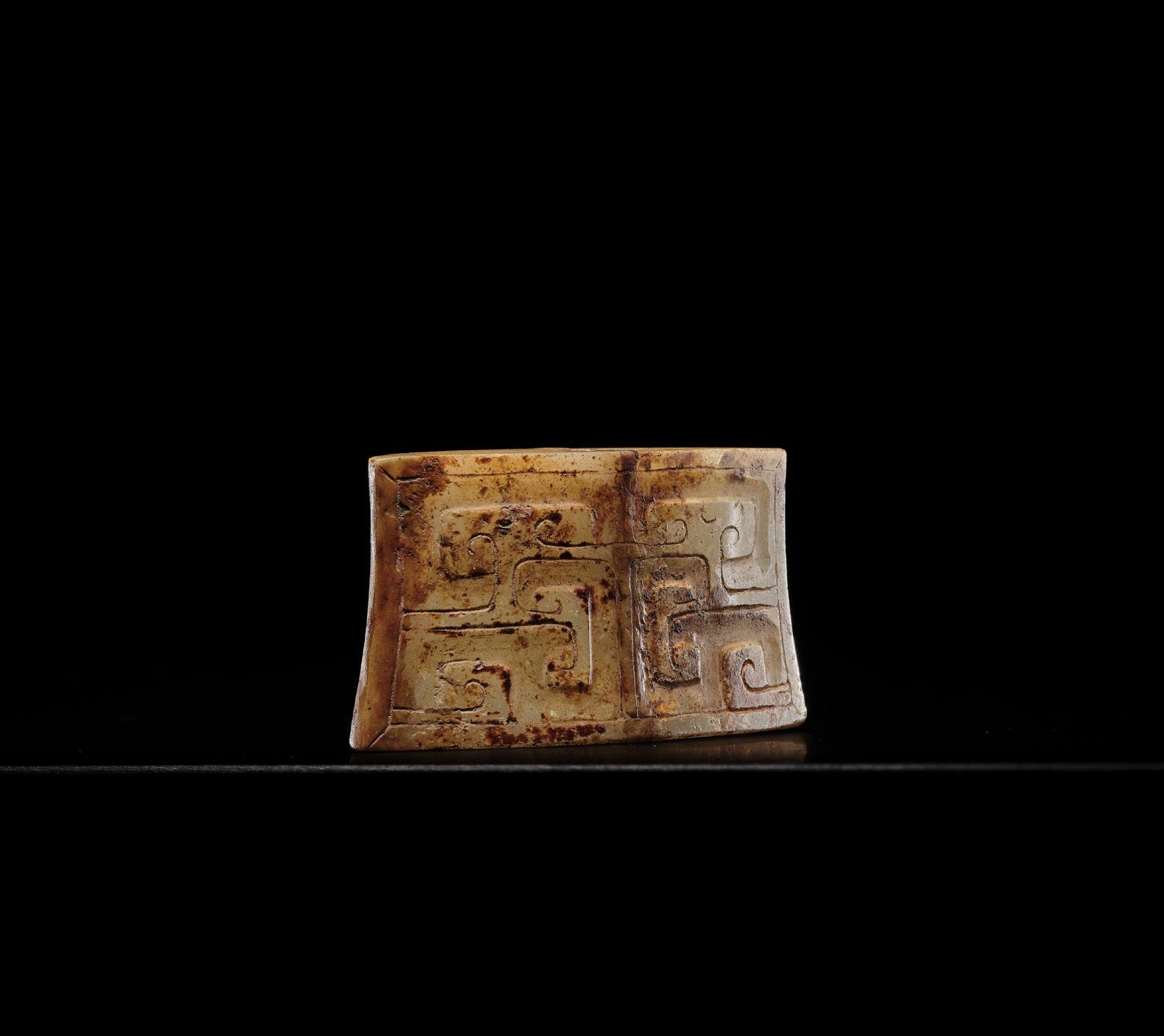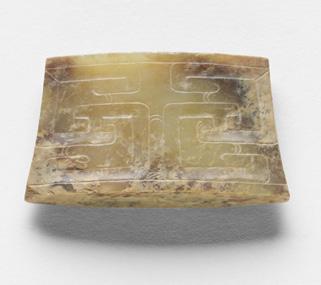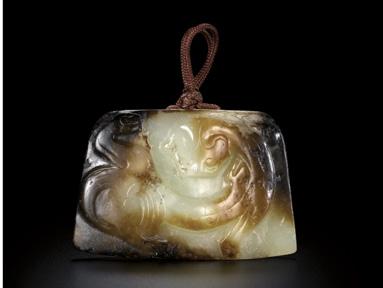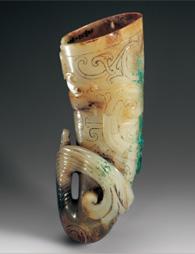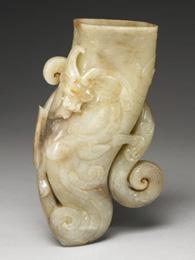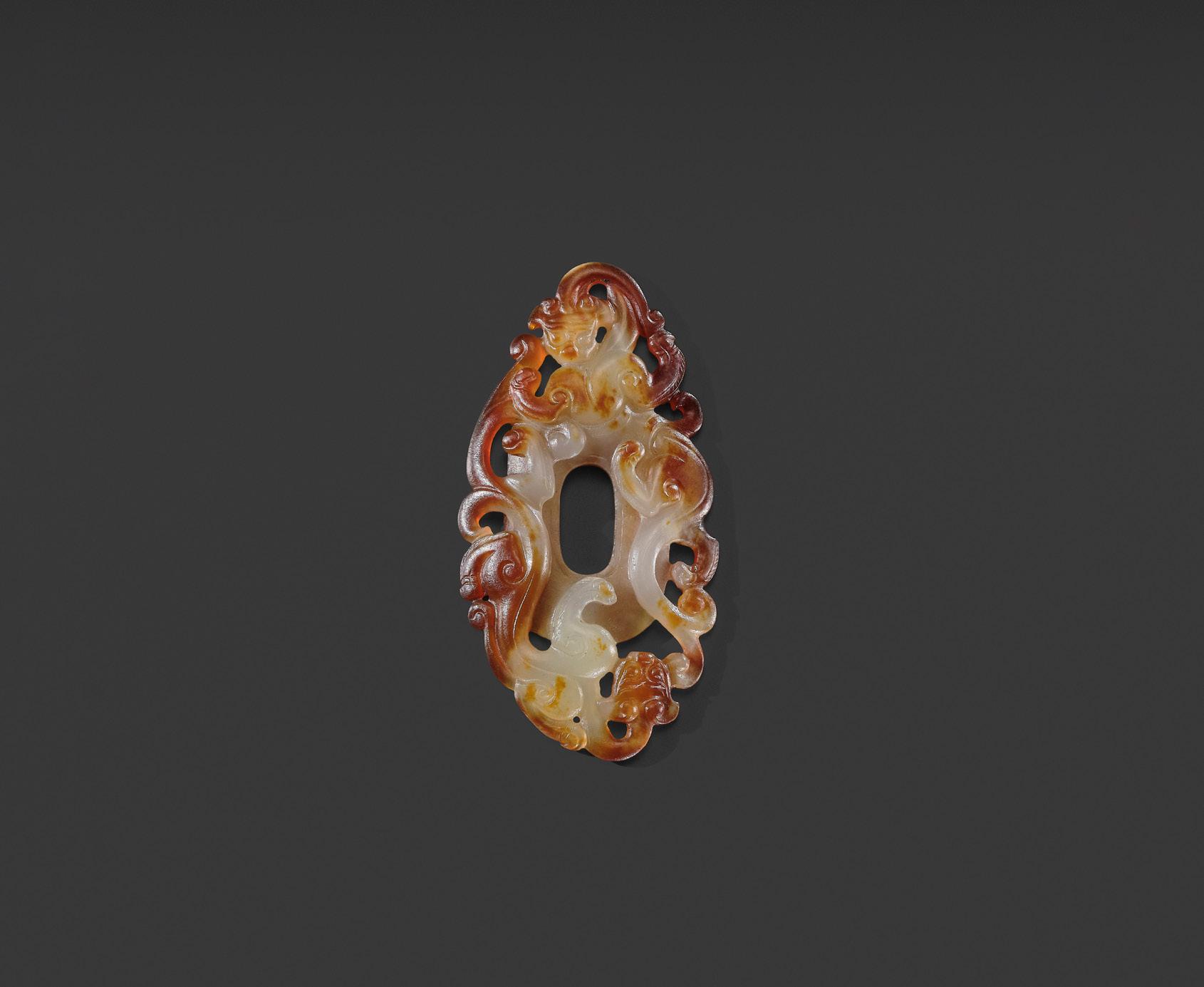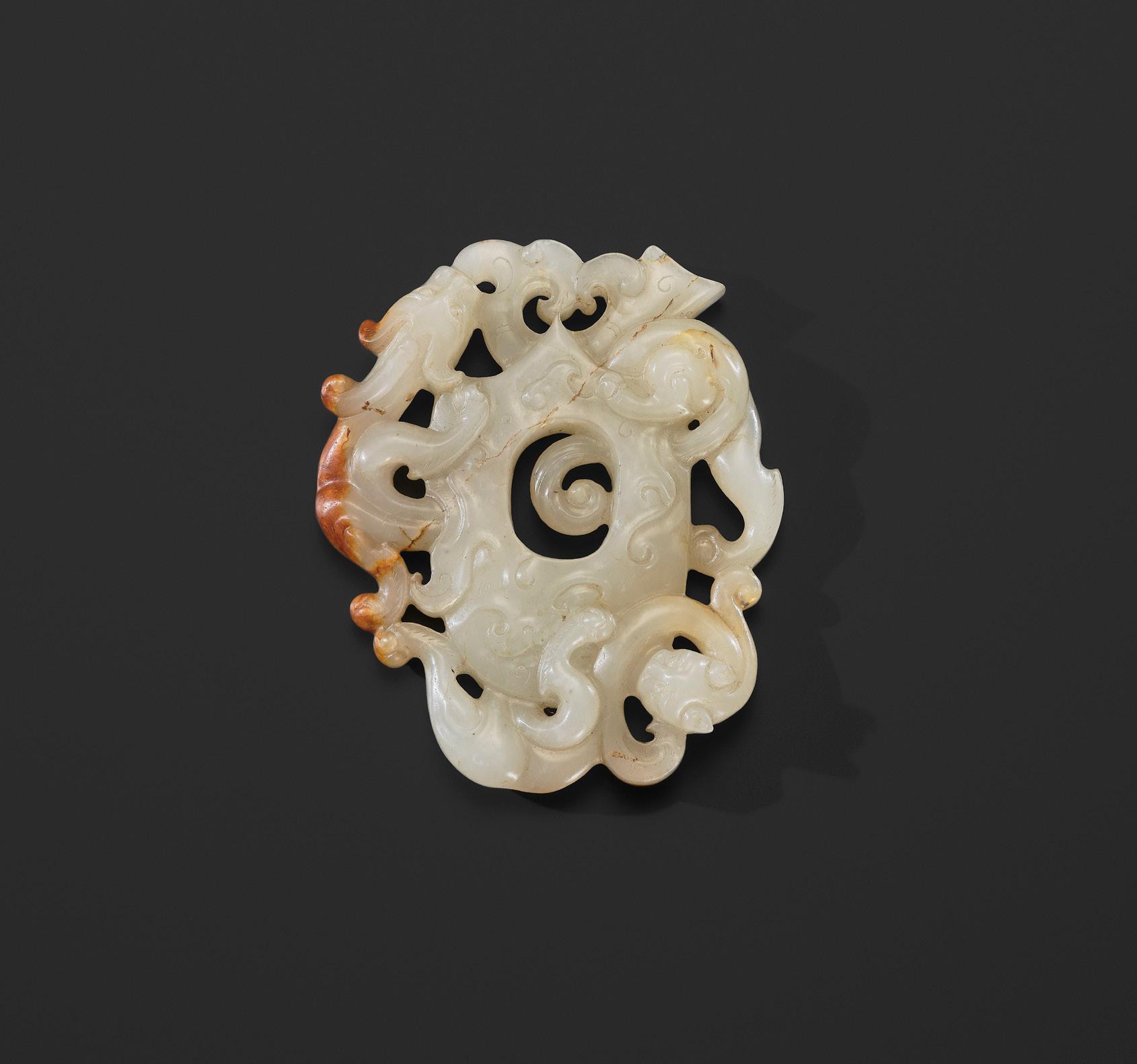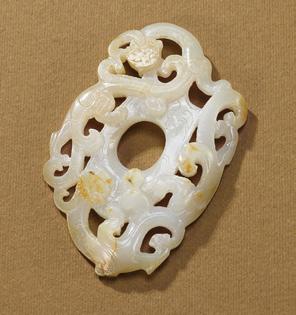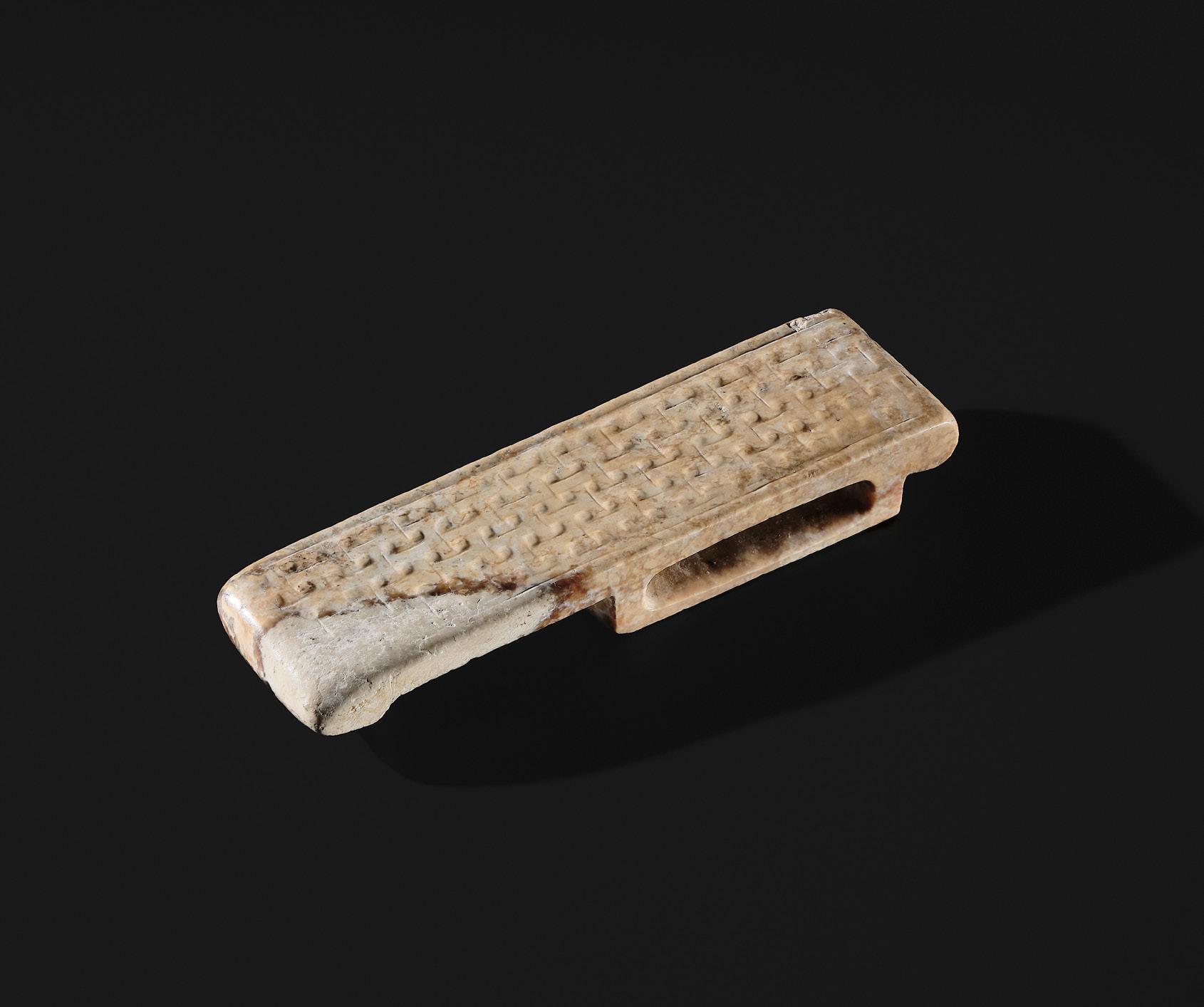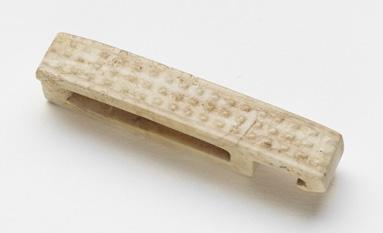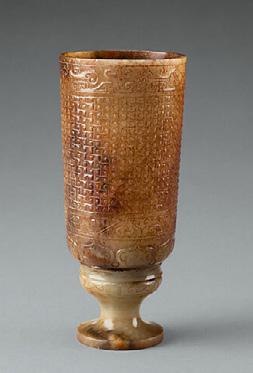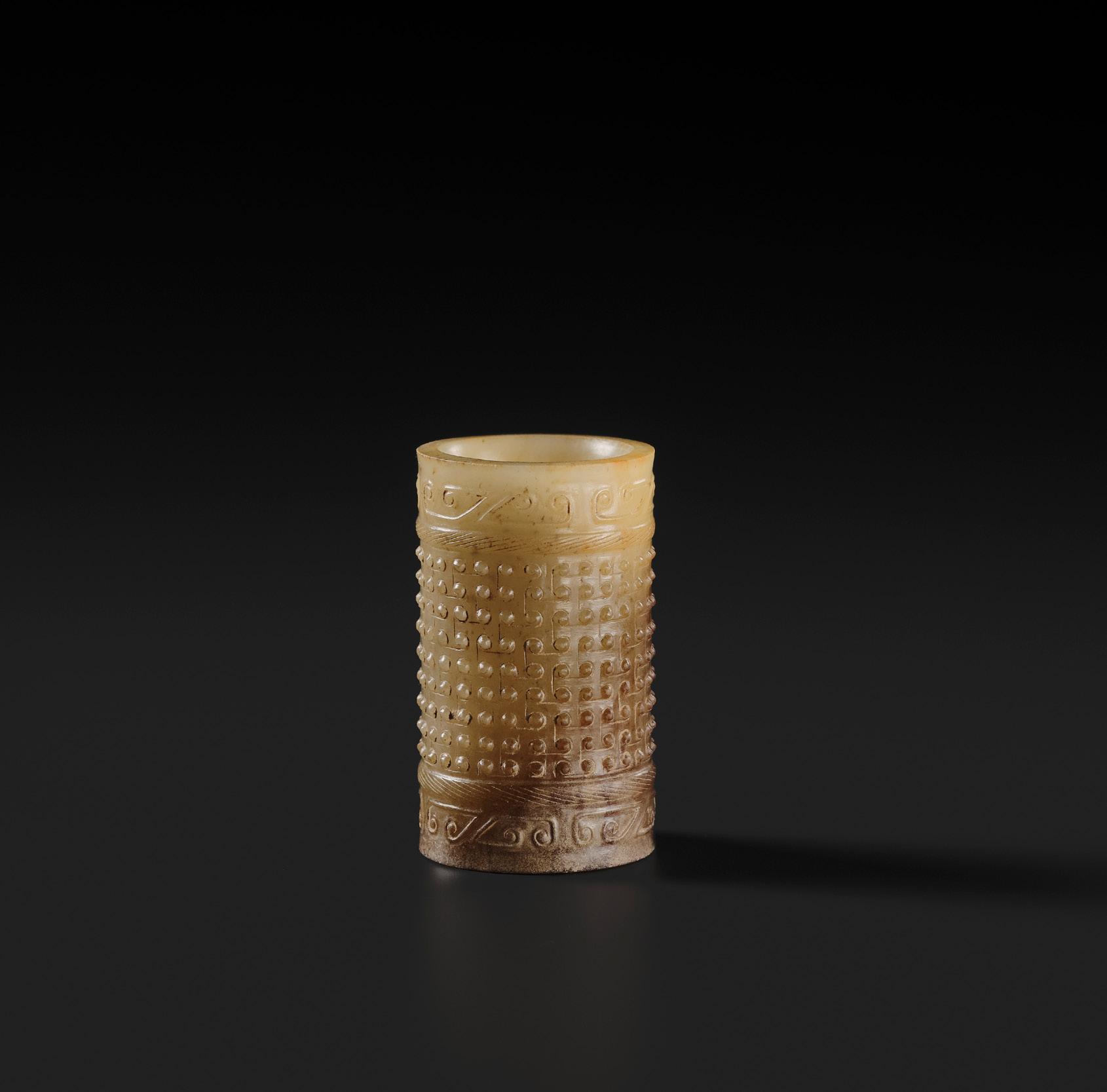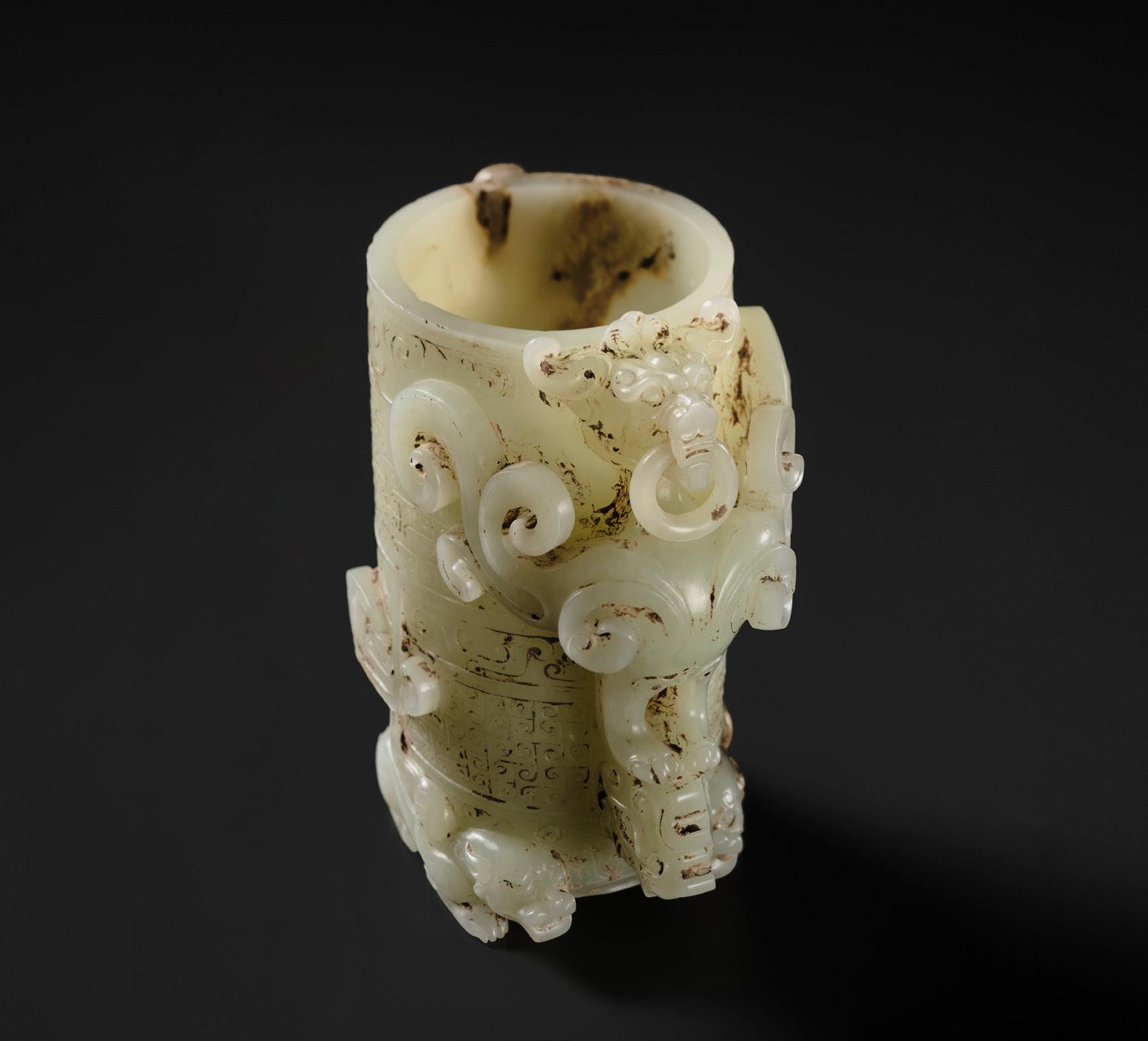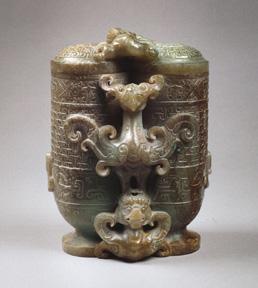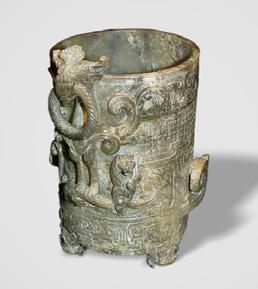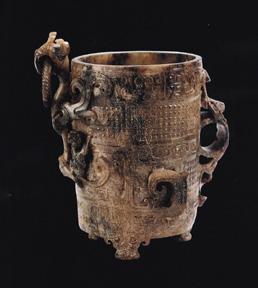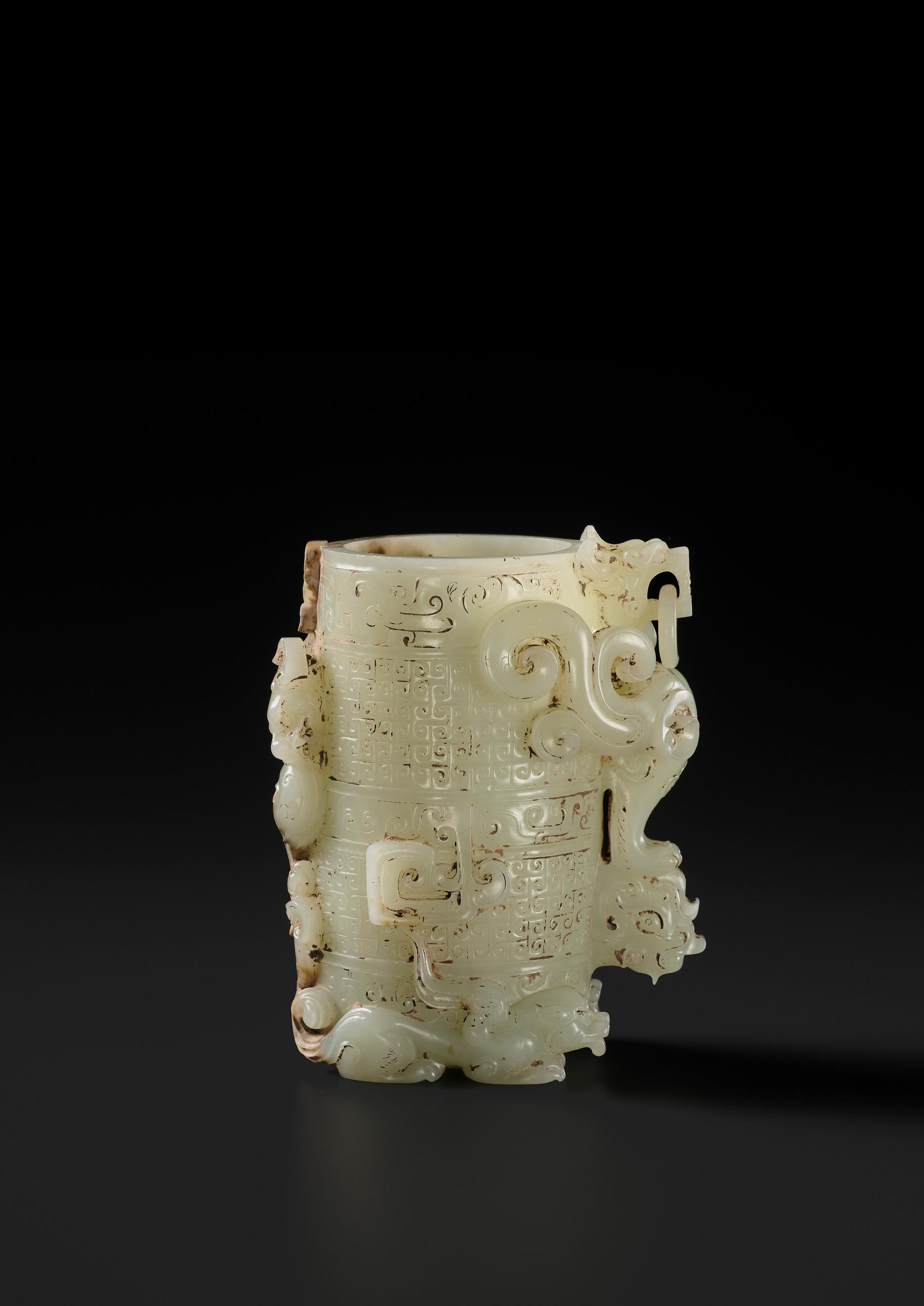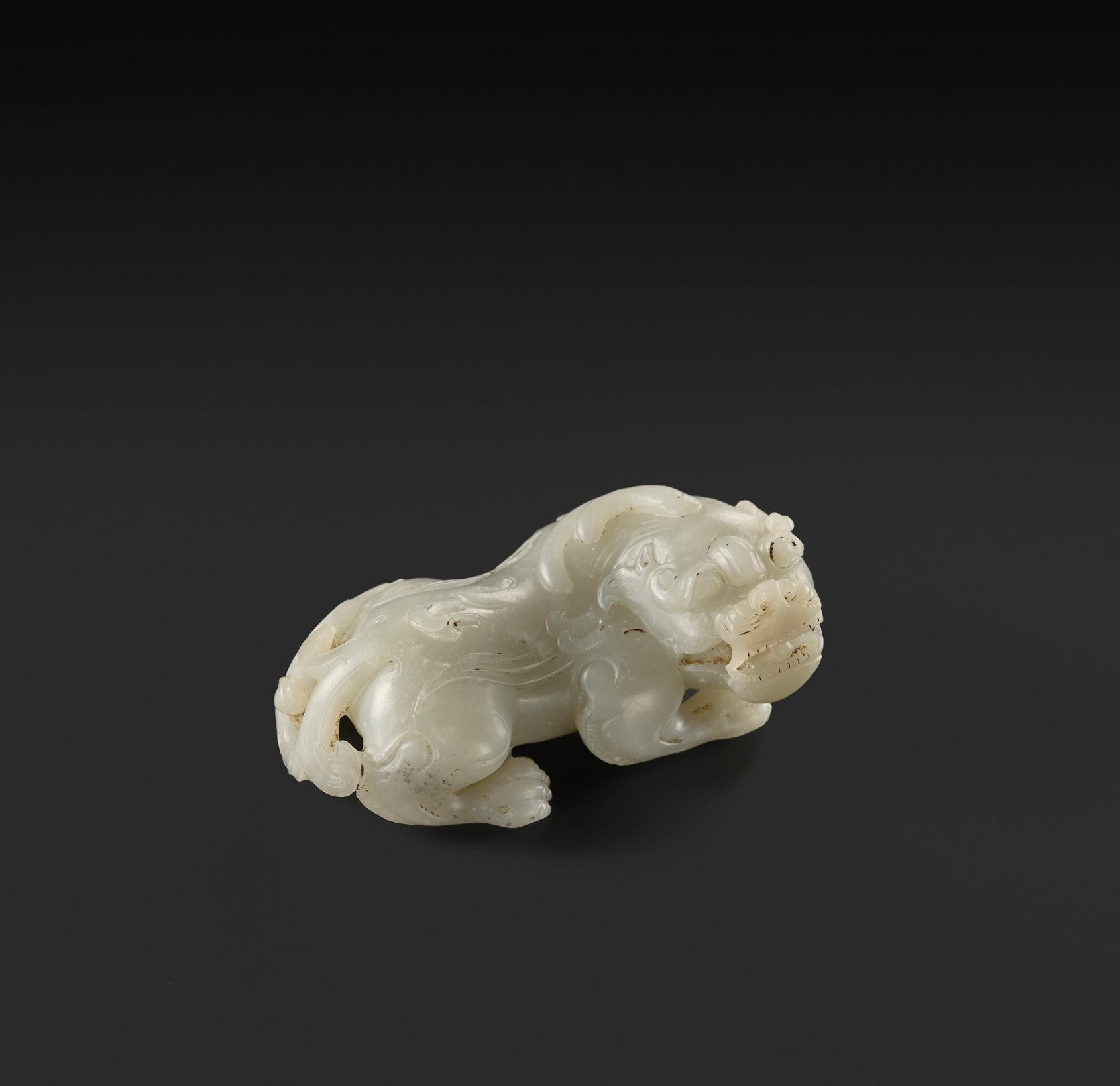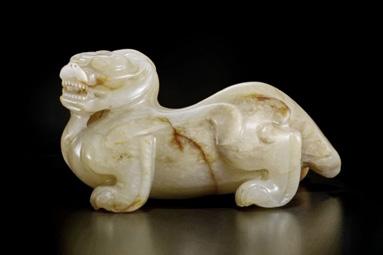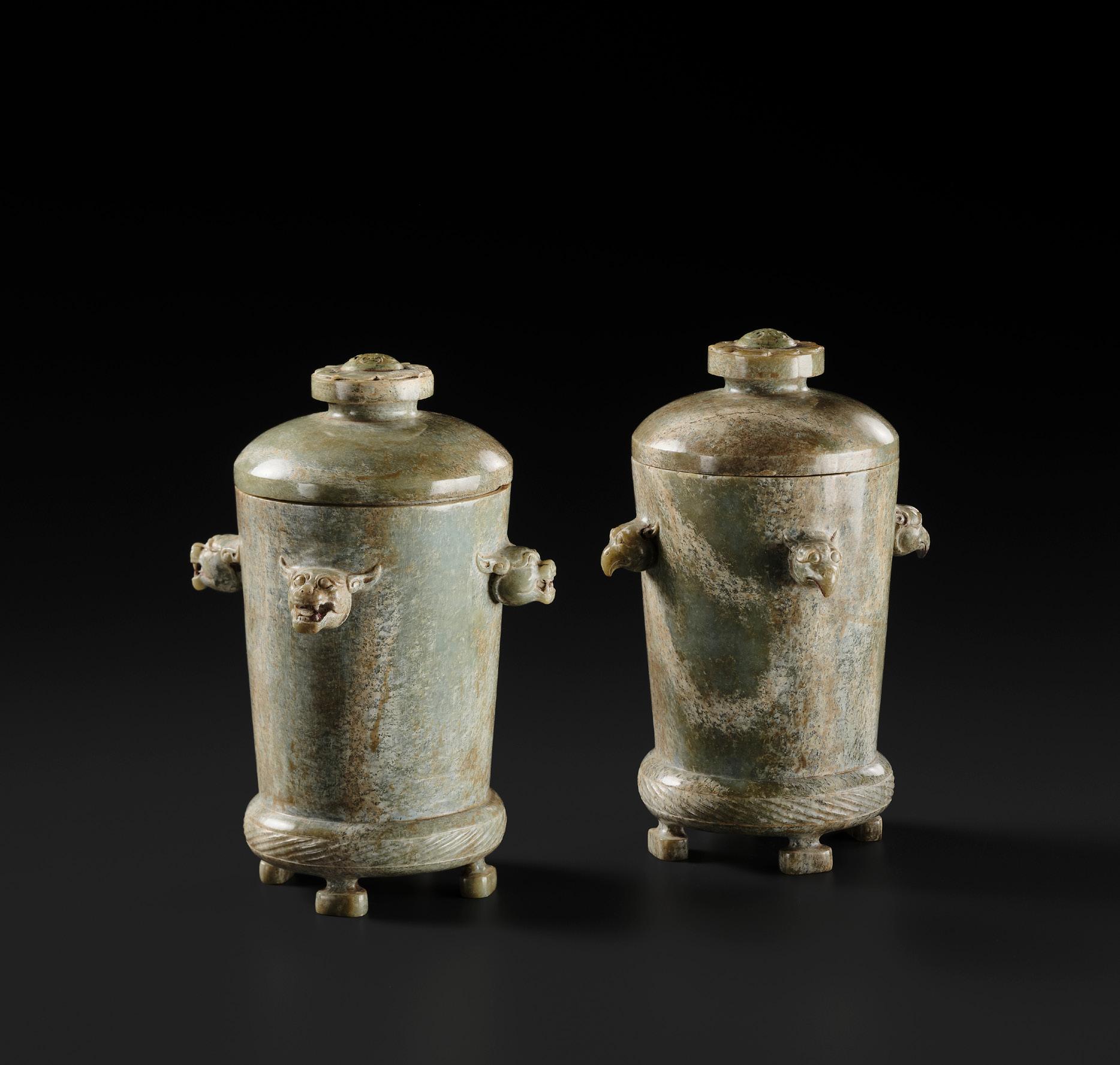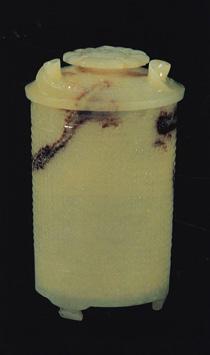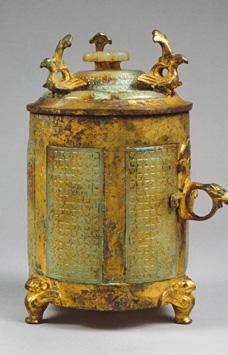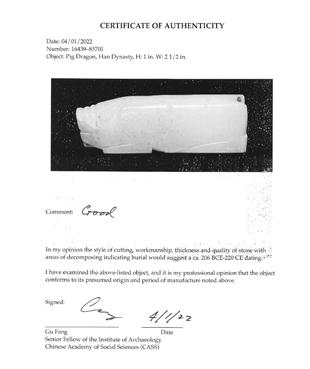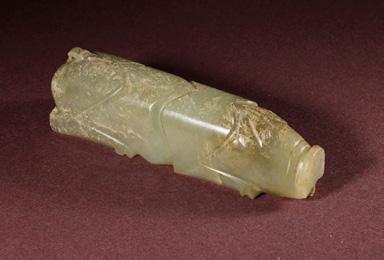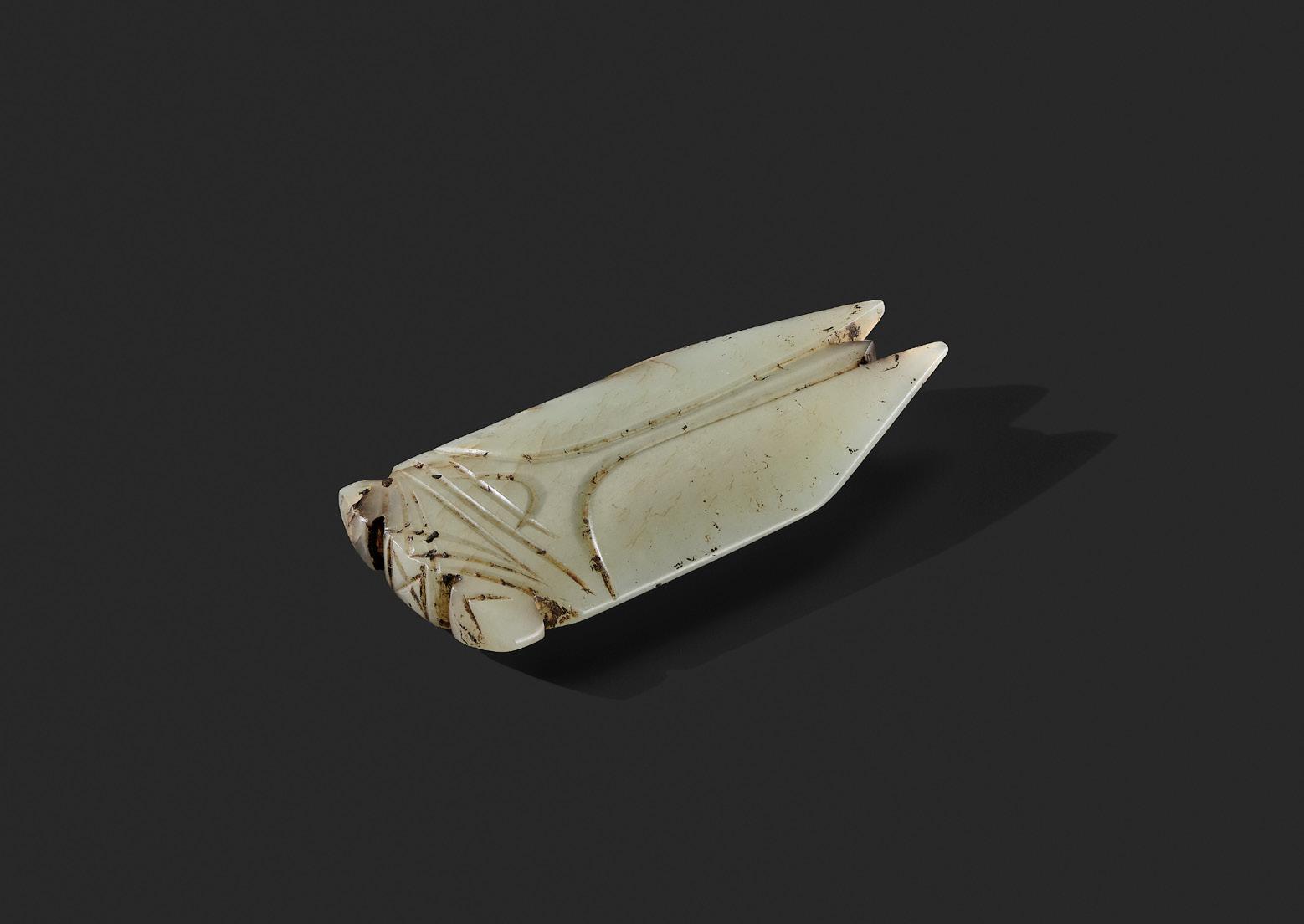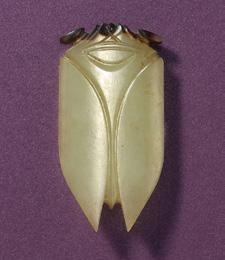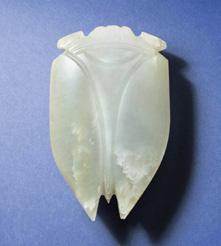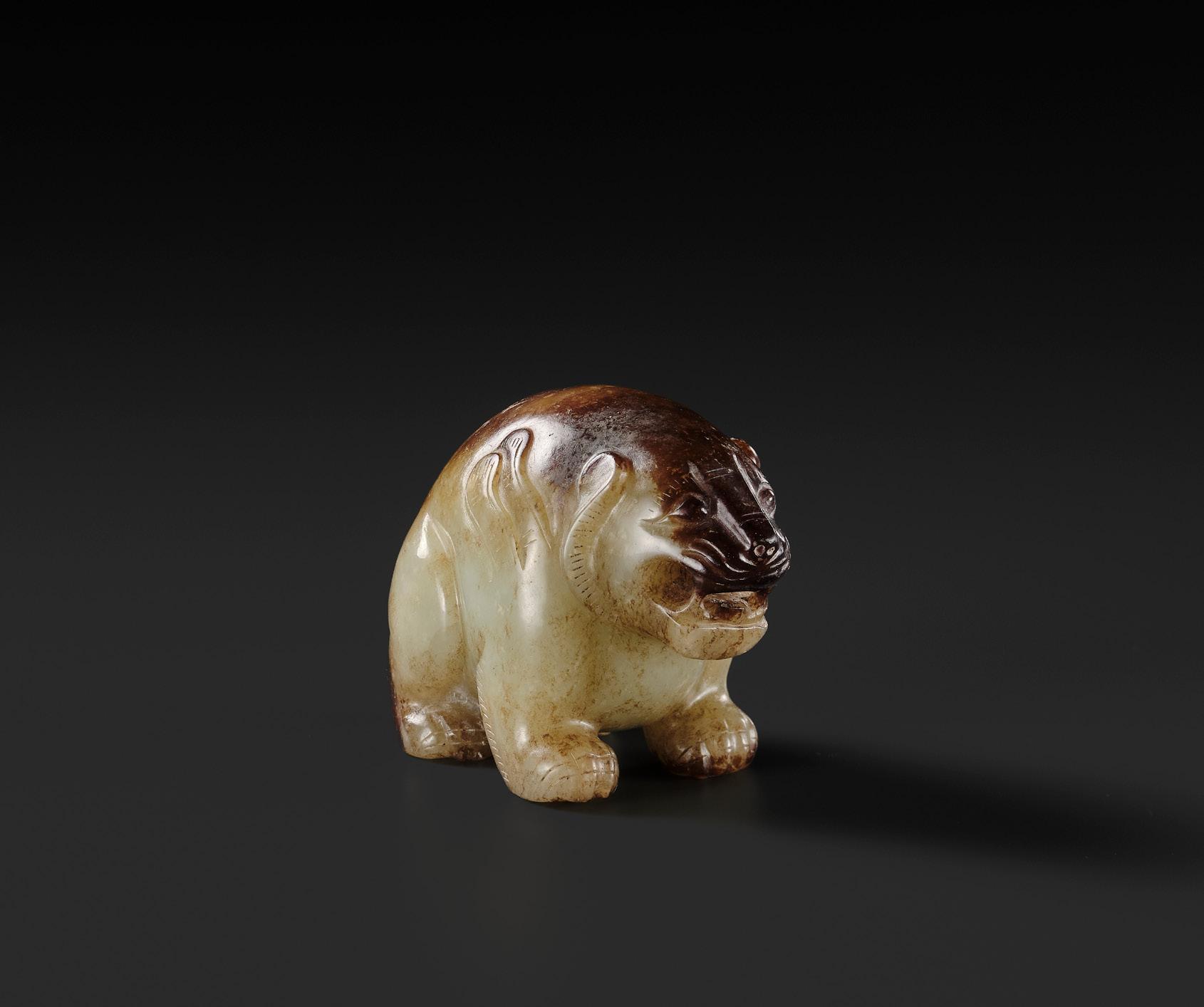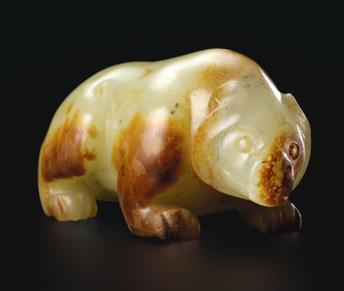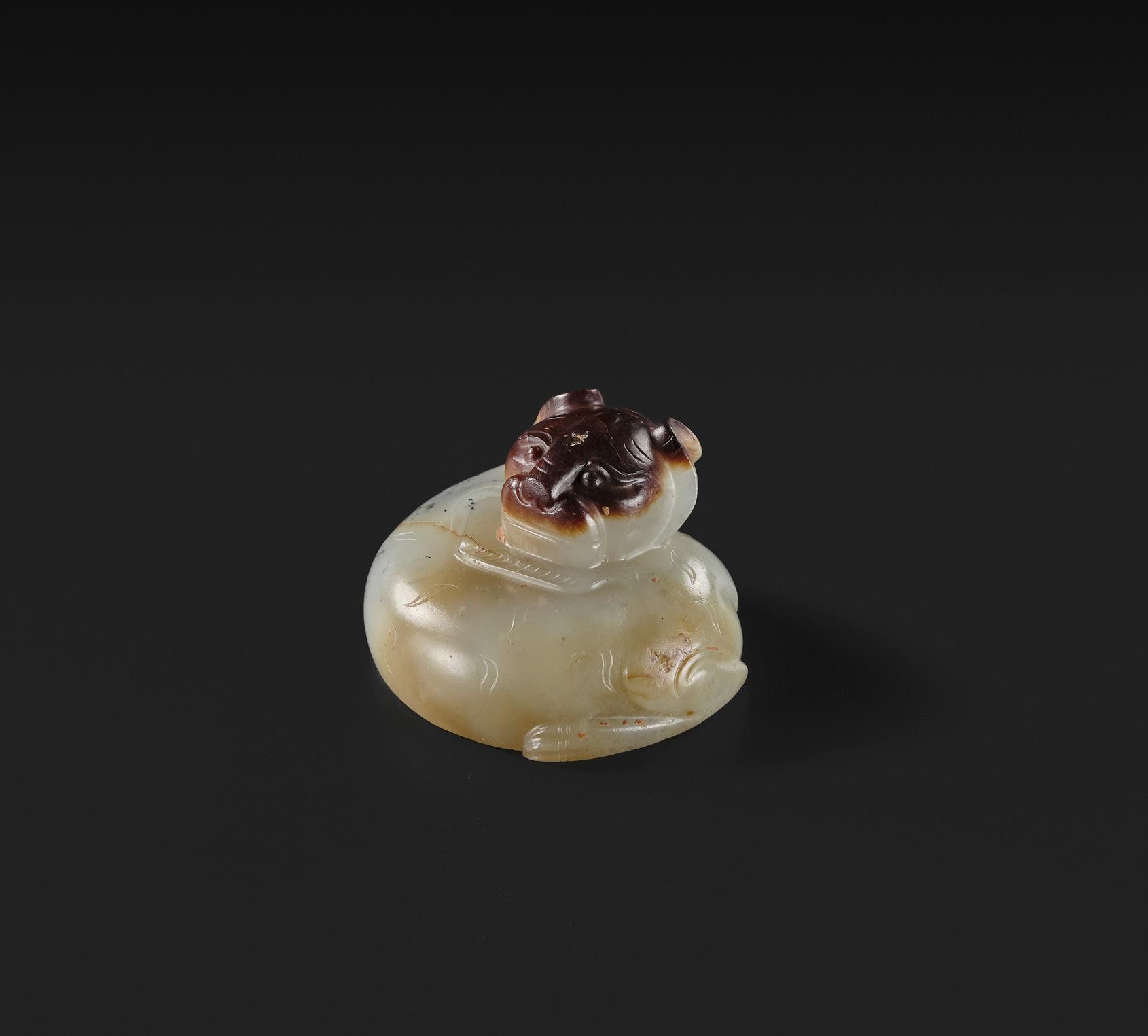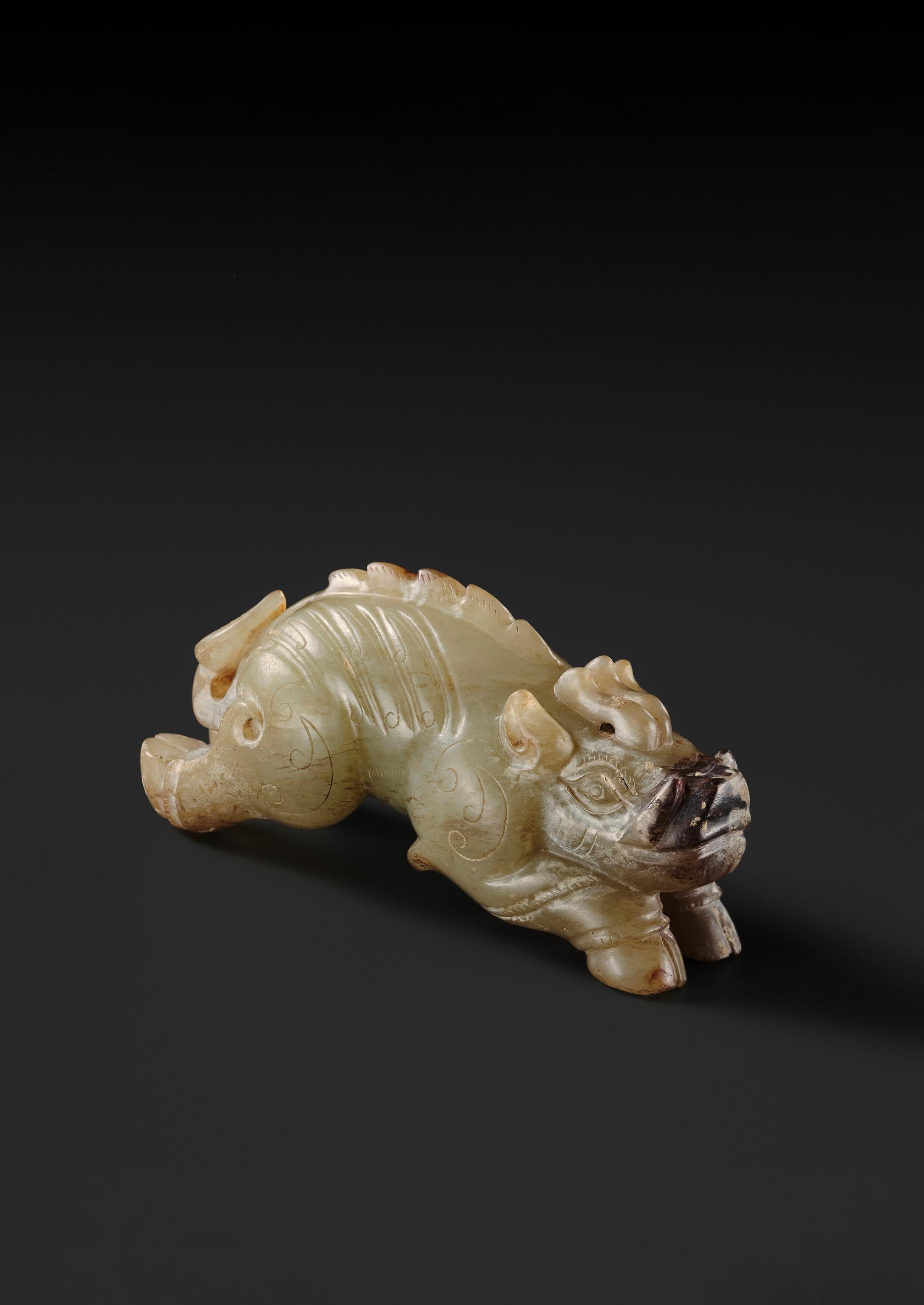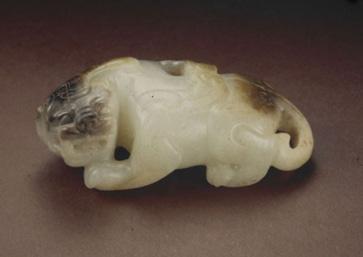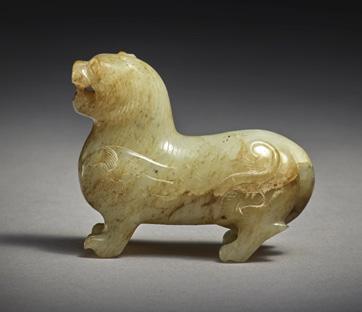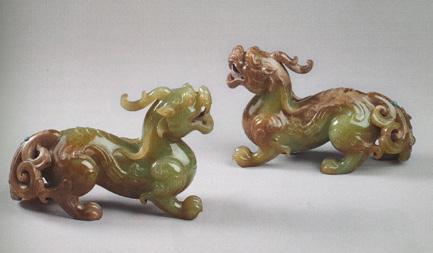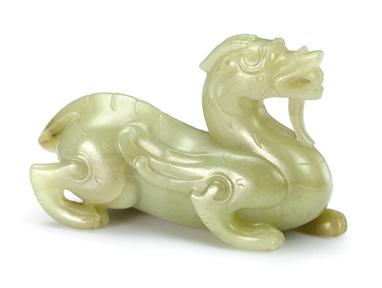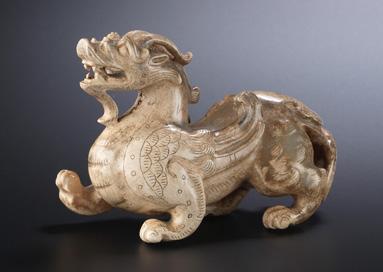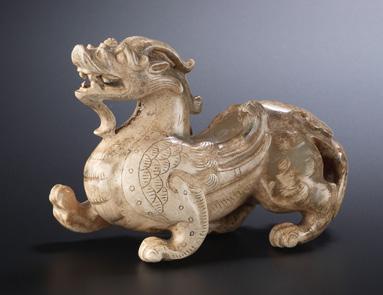The Sam and Myrna Myers Collection
We are immensely proud to have been entrusted by Sam Myers with the stewardship of his collection, one that has traveled across the globe and already inspired countless scholars, connoisseurs, and enthusiasts.
On 11 September 2025, the first part of the Sam and Myrna Myers Collection was auctioned in these rooms with great success.
Auction Highlights included:
Sold for €130,000
RARE TIERED
Sold for €104,000
Sold for €78,000
This private sale presents a rare opportunity to acquire a curated selection of jades from this important collection at fair market value.
A
MOTTLED JADE CONG, LIANGZHU CULTURE
A FINE AND LARGE GREEN JADE ‘RHINOCEROS’ PLAQUE, WARRING STATES PERIOD-WESTERN HAN DYNASTY
A RARE AND VERY LARGE (48 CM) DARK GREEN JADE CEREMONIAL BLADE, YAZHANG, SHIMAO CULTURE
Sam and Myrna Myers’ journey of collecting Antiques began by chance, when the couple travelled from Paris to Switzerland where they discovered the antique shop ‘Casa Serodine’ in Ascona. Fascinated by their find, the Myers returned to the Swiss town in the following years to introduce more objects to their collection.
The first acquisitions of the couple came from the Mediterranean region and Mesopotamia, but after a few years they got introduced to Chinese porcelains. As their collection of Chinese porcelains grew, Myrna suggested to venture out into other areas of Chinese art. On a trip to the United States, Sam bought a shoe box filled with unidentified jades which the couple had sent to Ascona and tried to study with the help of local antique dealers and jewellers, but to no avail. After many dead ends, Myrna and Sam still decided to keep the group, which was the start of more than 40 years of study and research and resulted in working with jade expert Filippo Salviati on several exhibitions and catalogues. The Chinese shoe box held Chinese and pre-Colombian jades ranging from the Han dynasty to the 19th century. After their find, the couple became more intrigued and started acquiring jades from renowned collections, including those assembled by Armand Trampitsch (1893-1970) and Charles Vignier (1863-1934).
Filippo Salviati praised the Jade collection assembled by Sam and Myrna Myers as outstanding for its breadth and the quality of the pieces and recognized it as one of the most important ever assembled in the Western world.
After Myrna’s passing in 2012, Sam Myers continued this work with extraordinary dedication. He spearheaded a project of grand scale: the traveling exhibition and comprehensive publication of their collection, realized under the direction of Jean-Paul Desroches, general curator at the Musée Guimet, and Myrna’s professor at the Ecole du Louvre. This exhibition, which included objects now offered in this private sale, brought the collection to the Kimbell Art Museum in Fort Worth, the Musée Pointe-à-Callière in Montréal, the Fondation Baur in Geneva, and the Musée des Arts Asiatiques, and was accompanied by two stateof-the-art catalogs, Two Americans in Paris and The Beginning of the World. Now 90 years old, Sam remains committed to safeguarding and sharing the collection that defined both his and Myrna’s life. Their mutual passion for Asian art, deepened by their devotion to each other, not only enriched their own lives but also left a lasting impact on countless museums, exhibitions, and scholarly publications, along with their visitors and readers.
Sam and Myrna Myers
Publications
Jean-Paul Desroches, Two Americans in Paris: A Quest for Asian Art. Lienart, Paris, 2016
Jean-Paul Desroches, The Beginning of the World Dragons, Phoenix and Other Chimera, Lienart, Paris, 2020
Filippo Salviati, The Language of Adornment: Chinese Ornaments of Jade, Crystal, Amber and Glass from the Neolithic Period to the Qing Dynasty, Myrna Myers, 2002
Filippo Salviati, Radiant Stones: Archaic Chinese Jades, Myrna Myers, Paris, 2000
Exhibitions
Foundation Baur
Kimbell Art Museum
Musée Départemental des Arts Asiatiques
Pointe-à-Callière Museum
ORDER FORM
Private Sale: 48 Archaic Jades
PSJAD1125
TE RMS OF PAYMENT, S HI PPING AND COLLECTION:
ADDRE S S
CITY, COUNTRY
POSTCODE
PHO NE N UMBER
GALERIE ZACKE NA ME
CREDIT C AR D PAYMENT
PLEASE CHECK THE DESIRED CARD
COLLECTION BY CLI ENT W IT H PAYMENT ON THE PREMISES IN CASH, BY CERTIFIED CHEQUE OR CREDIT CARD
INVOICE PAYMENT
VIA BANK WIRE AFTER RECEIPT OF INVOIC E SHIPPING AFTER RECEIPT OF PAYMENT
EXPRESS PARCEL SERVICE
REQUIRED (ACCOR DING TO TERMS AND CONDITIONS OF GALERIE ZACKE)
SHIPPING INSURANCE
REQUIRED (ACCOR DING TO TERMS AND CONDITIONS OF GALERIE ZACKE)
Zelinkagasse 6, 1010 Vienna, Austria
Email: office@zacke.at
Tel: +43-1-532 04 52
Fax: +43-1-532 04 52 20
DATE & SIGNATURE IMPORTANT NOTICE:
At its sales, Galerie Zacke sells consigned lots on behalf of third-party consignors. For t his reason, any complain ts related to purchase d lots must be reported to Galerie Zacke within 6 weeks after the receipt of such lot.
All sales are according to the general terms and conditions of business of Galerie Zacke Vienna, Founded 1968, SZA Versteigerungen & Vertriebs GmbH, 1010 Wien, online at www zacke.at
1
A RARE BRIGHT GREEN JADE ‘EAGLE HEAD’ SCEPTER FINIAL, LATE NEOLITHIC PERIOD, HONGSHAN CULTURE
China, 4700-2500 BC. Finely carved, the flattened shaft gently tapering toward a pointed, beveled blade and surmounted by the stylized head of an eagle. Marked by a prominent hooked beak, a wrinkled brow, a circular drilled aperture to depict the eyes of the animal, and pronounced rounded crests, the head of the animal set above a subtly carved ridge encircling its base. The semi-translucent stone of varying shades of green on both sides, with moss-green shadings and patches as well as cloudy white inclusions.
Provenance: From a private collection in New York.
Condition: With obvious loss to lower end, otherwise, very good condition, commensurate with age, with only minor wear, and signs of weathering and erosion.
Weight: 100.0 g
Dimensions: Length 12.9 cm
EXPERT AUTHENTICATION
Dr. Gu Fang has examined the present lot and confirms its authenticity and the dating above, noting the style of cutting, workmanship, thickness and quality of stone with decomposed areas indicating burial all suggest a 4700-2500 BC dating. He assessed it as a piece of notably good quality. A signed and notarized copy of Dr. Gu’s expertise, dated 23 March 2023, accompanies this lot.
AUCTION RESULT COMPARISON
Type: Related
Auction: Christie’s Hong Kong, 27 November 2019, lot 2710
Price: HKD 275,000 or approx. EUR 33,000 converted and adjusted for inflation at the time of writing
Description: A jade eagle head handled staff, Neolithic period, Hongshan culture, c. 3500 BC
Expert remark: Compare the related form and stylized manner of carving of the bird’s beak and incised ridge around the neck. Note the larger size (17.5 cm).
AUCTION RESULT COMPARISON
Type: Related
Auction: Sotheby’s Hong Kong, 19 September 2023, lot 235
Price: HKD 57,150 or approx. EUR 6,500 converted and adjusted for inflation at the time of writing
Description: An archaic green jade scepter, Neolithic period, Hongshan culture
Expert remark: Compare the related form and stylized manner of carving of the bird’s head. Note the larger size (20.2 cm).
Purchase for EUR 3,000
2
A LARGE SPINACH GREEN JADE ‘CLOUD-SCROLL’ PENDANT, NEOLITHIC PERIOD, HONGSHAN CULTURE
China, c. 4700-2900 BC. The flat plaque carved in openwork in the form of a stylized scrolling cloud with a half-crescent shaped opening. Subtly detailed with four curved ridges and grooves on each side. Pierced to the top for suspension, drilled from both sides. The semi-translucent stone of a deep spinach green tone with opaque dark inclusions, pale clouds, and small patches of creamy calcification.
Provenance: From a private collection in New York.
Condition: Very good condition, commensurate with age, with minor signs of weathering and erosion, expected nibbling and very few small chips to edges, and natural fissures.
Weight: 329.3 g
Dimensions: Length 21.6 cm
With a padded storage box. (2)
Expert’s note: This distinctive type of jade with arcs surrounding a central whorl has been found among Hongshan excavations and is known as a ‘hooked cloud’. When properly oriented the similarity of form to the more commonly seen pig dragon and known oracle script characters for Qiu- and Long-Dragon become strikingly visible.
EXPERT AUTHENTICATION
Dr. Gu Fang has examined the present lot and confirms its authenticity and the dating above, noting the style of cutting, workmanship, thickness and quality of stone with decomposed areas indicating burial all suggest a dating to the Hongshan period. He assessed it as a piece of notably good quality. A signed and notarized copy of Dr. Gu’s expertise, dated 18 December 2020, accompanies this lot.
Literature comparison:
Compare two closely related jade ‘cloud hook’ pendants, dated to the Neolithic period, 23.5 cm and 22.5 cm long, in the Liaoning Provincial Museum. Compare a related ‘cloud hook’ pendant, dated to the Hongshan culture, 13.7 cm long, in the Palace Museum, Beijing, accession number 00200400.
AUCTION RESULT COMPARISON
Type: Closely related
Auction: Sotheby’s Paris, 10 June 2021, lot 82
Price: EUR 17,640 or approx.
EUR 20,000 adjusted for inflation at the time of writing
Description: A pale green jade ‘cloud-shaped’ pendant, Neolithic period, Hongshan culture
Expert remark: Compare the closely related form, manner of carving, and color of the stone. Note the smaller size (11.3 cm).
AUCTION RESULT COMPARISON
Type: Closely related
Auction: Christie’s Hong Kong, 27 November 2019, lot 2711
Price: HKD 175,000 or approx.
EUR 24,000 converted and adjusted for inflation at the time of writing
Description: A green jade ‘cloud-scroll’ ornament, Hongshan culture, c. 4000-3000 BC
Expert remark: Compare the closely related form, manner of carving, and color of the stone. Note the smaller size (12.3 cm).
Purchase for EUR 6,750
A MOTTLED GREEN JADE ORNAMENTAL ARM GUARD, NEOLITHIC PERIOD, HONGSHAN CULTURE
China, c. 4700-2900 BC. Of arched trapezoidal section, the exterior finely carved with broad grooves separated by raised ridges. The narrow end of the curling ornament pierced with three small apertures, drilled from both sides for attachment, while the wide end is finished with two crescents with rounded tips. The stone of green tone with russet patches, dark specks, and scattered icy-white inclusions.
Provenance: From a private collection in New York.
Condition: Excellent condition with only minor wear, natural imperfections, and sparse minuscule nicks.
Weight: 126.6 g (excl. stand)
Dimensions: Length 9.0 cm, Height 9.7 cm (incl. stand)
Mounted on an associated metal stand. (2)
EXPERT AUTHENTICATION
Dr. Gu Fang has examined the present lot and confirms its authenticity and the dating above, noting the style of cutting, workmanship, thickness and quality of stone with decomposed areas indicating burial all suggest a dating to the Hongshan period. He assessed it as a piece of notably good quality. A signed and notarized copy of Dr. Gu’s expertise, dated 9 August 2020, accompanies this lot.
AUCTION RESULT COMPARISON
Type: Closely related
Auction: Sotheby’s Hong Kong, 20 May 2025, lot 3480
Price: HKD 60,000 or approx.
EUR 6,500 converted and adjusted for inflation at the time of writing
Description: A yellowish-celadon jade ornament, Neolithic period, Hongshan culture
Expert remark: Compare the closely related form, with similarly carved ribs, and color of the stone. Note the slightly larger size (10.8 cm).
AUCTION RESULT COMPARISON
Type: Closely related
Auction: Bonhams New York, 20 March 2023, lot 116
Price: USD 40,695 or approx.
EUR 37,000 converted and adjusted for inflation at the time of writing
Description: A rare neolithic pale green jade curved and ribbed ornament, Hongshan culture, c. 35003000 BC
Expert remark: Compare the closely related form, with similarly carved ribs, and color of the stone. Note the slightly larger size (10.8 cm).
Purchase for EUR 6,750
4
A PALE CELADON JADE FRAGMENT OF A C-SHAPED ‘DRAGON’ PENDANT, LATE NEOLITHIC PERIOD, HONGSHAN CULTURE
China, 4700-2500 BC. Boldly carved in the form of a dragon, with an arched body, elongated tear-shaped eyes, a snout-like nose, and an upwardly curved horn. The top of the head exquisitely incised with a lozenge pattern. The stone of a pale celadon tone with icy-white veining and cloudy inclusions.
Provenance: From a private collection in New York.
Condition: With obvious losses, otherwise, very good condition, commensurate with age, with minor wear, signs of weathering and erosion, minuscule nicks and natural inclusions.
Weight: 95.5 g
Dimensions: Length 9.1 cm
EXPERT AUTHENTICATION
Dr. Gu Fang has examined the present lot and confirms its authenticity and the dating above, noting the style of cutting, workmanship, thickness and quality of stone with decomposed areas indicating burial all suggest a 4700-2500 BC dating. He assessed it as a piece of notably good quality. A signed and notarized copy of Dr. Gu’s expertise, dated 4 August 2022, accompanies this lot.
AUCTION RESULT COMPARISON
Type: Closely related
Auction: Sotheby’s Hong Kong, 20 May 2025, lot 3481
Price: HKD 101,600 or approx. EUR 11,000 converted and adjusted for inflation at the time of writing
Description: A celadon jade ‘pig-dragon’ pendant, Neolithic period, Hongshan culture
Expert remark: Compare the closely related form, manner of carving, and color of the stone. Note the size (14.3 cm).
AUCTION RESULT COMPARISON
Type: Near identical
Auction: Bonhams Hong Kong, 29 May 2024, lot 346
Price: HKD 23,040 or approx. EUR 2,500 converted and adjusted for inflation at the time of writing
Description: A pale green jade fragment of a ‘c-scroll dragon’, Neolithic period, Hongshan culture
Expert remark: Compare the closely related form, manner of carving, and color of the stone. Note the size (14 cm).
Purchase for EUR 2,700
5
A RARE CELADON JADE TRIPLE RING PENDANT, LATE NEOLITHIC PERIOD, HONGSHAN CULTURE
China, 4700-2500 BC. Of triple-she (thumb ring) form, flanked by mythical beast heads, each marked by a pointed snout, bulging eyes, and pronounced ears, and pierced below the circular apertures with three suspension holes. The smoothly polished, translucent stone of a celadon tone with brownish inclusions, interspersed with dark specks and icy-white shadings.
Provenance: From a private collection in New York.
Condition: Very good condition, commensurate with age, with ancient wear, signs of weathering and erosion, minuscule nicks, smaller calcified areas, and soil encrustation. The stone with natural inclusions.
Weight: 195.8 g
Dimensions: Length 13.1 cm
EXPERT AUTHENTICATION
Dr. Gu Fang has examined the present lot and confirms its authenticity and the dating above, noting the style of cutting, workmanship, thickness and quality of stone with decomposed areas indicating burial all suggest a 4700-2500 BC dating. He assessed it as a piece of notably good quality. A signed and notarized copy of Dr. Gu’s expertise, dated 1 April 2022, accompanies this lot.
LITERATURE COMPARISON
Compare a closely related celadon jade triple ring pendant, late Neolithic period, Hongshan culture, dated c. 4500-3000 BC, 11.9 cm long, excavated from Nasitai site, Balinyouqi, Inner Mongolian Autonomous region, held by the Balinyouqi Museum, and illustrated in: Gu Fang, The Complete Collection of Jades Unearthed in China, vol. 2, Beijing, 2010, p. 40. Compare a closely related white jade triple ring pendant, late Neolithic period, Hongshan culture, dated c. 4500-3000 BC, 9.2 cm long, excavated from the 16th location within Niuheliang site, Chaoyang, Liaoning Province, held by the Lianing Provincial Museum, and illustrated in: Gu Fang, The Complete Collection of Jades Unearthed in China, vol. 2, Beijing, 2010, p. 126.
AUCTION RESULT COMPARISON
Type: Related
Auction: Sotheby’s Hong Kong, 9 October 2020, lot 35
Price: HKD 226,800 or approx. EUR 26,500 converted and adjusted for inflation at the time of writing
Description: A celadon jade threehole plaque, Neolithic period, Hongshan culture
Expert remark: Compare the related form, manner of carving, and color of the stone. Note the smaller size (10.7 cm).
Purchase for EUR 5,100
6 A MOTTLED DARK GREY AND BROWN JADE AXE HEAD, FU, SONGZE OR LIANGZHU CULTURE
China, Neolithic period, c. 3500-2500 BC. The broad axe flaring towards the slightly beveled and rounded cutting edge with the butt end pierced with a large central aperture drilled from both sides. The finely polished opaque stone of dark gray tone with beige and brown clouding.
Provenance: From the Sam and Myrna Myers Collection.
Condition: Obvious losses, restored breakages at the lower part, expected traces of age such as notches, encrustations, weathering, and fissures, some of which have developed into hairline cracks.
Weight: 456.5 g
Dimensions: Length 15.6 cm
PUBLISHED
Filippo Salviati, Radiant Stones: Archaic Chinese Jades, Myrna Myers, Paris, 2000, no. 25.
LITERATURE COMPARISON
Compare a closely related axe head, fu, Liangzhu culture, dated c. 3300-2250 BC, 15.1 cm long, in the Smithsonian National Museum of Art, accession number S2012.9.126.
AUCTION RESULT COMPARISON
Type: Closely related
Auction: Sotheby’s London, 8 December 2022, lot 152
Price: GBP 1,764 or approx. EUR 2,500 converted and adjusted for inflation at the time of writing
Description: A mottled stone axe, Neolithic period, Songze-Liangzhu culture
Expert remark: Compare the closely related form with similarly large central aperture and mottled opaque stone of greyish beige color. Note the similar size (14.2 cm).
Purchase for EUR 3,250
A CELADON JADE CEREMONIAL AXE, YUE, LATE NEOLITHIC PERIOD, LIANGZHU CULTURE
China, 3200-2300 BC. The broad axe flaring towards the slightly beveled and rounded cutting edge with the butt end pierced with a large circular aperture drilled from both sides. The smoothly polished stone of a celadon tone with darker cloudy inclusions, russet specks, and some areas with encrustation.
Provenance: From a private collection in New York.
Condition: Very good condition, commensurate with age, with ancient wear, minor signs of weathering, encrustation and erosion, and natural imperfections, such as fissures, some of which have developed into small hairlines.
Weight: 596.9 g
Dimensions: Height 17.6 cm
EXPERT AUTHENTICATION
Dr. Gu Fang has examined the present lot and confirms its authenticity and the dating above, noting the style of cutting, workmanship, thickness and quality of stone with decomposed areas indicating burial all suggest a 3200-2300 BC dating. He assessed it as a piece of notably good quality. A signed and notarized copy of Dr. Gu’s expertise, dated 25 August 2021, accompanies this lot.
LITERATURE COMPARISON
Compare a closely related mottled greyish jade axe, yue, Liangzhu culture, 3300-2200 BC, 11.6 cm, in the British Museum, museum number 2022,3034.248.
AUCTION RESULT COMPARISON
Type: Closely related
Auction: Bonhams London, 12 May 2022, lot 5
Price: GBP 7,650 or approx. EUR 10,500 converted and adjusted for inflation at the time of writing
Description: A greenish-yellow jade axe blade, yue, Neolithic period, Liangzhu culture
Expert remark: Compare the closely form and pale greenish color of the stone. Note the slightly smaller size (16.1 cm).
Purchase for EUR 6,750
A LARGE GREEN JADE BLADE, ZHANG, LATE NEOLITHIC PERIOD, QIJIA CULTURE
China, 2100-1600 BC. The blade spreading and tapering in thickness towards the straight, asymmetrical end that is gently beveled. The tang, with a slightly concave side, flanked by a pair of small flanges and pierced with a small central aperture, drilled from one side. The semitranslucent stone of a light green tone with icy-white mottles, cloudy inclusions, and one russet patch to the back.
Provenance: From a private collection in New York.
Condition: Very good condition, commensurate with minor wear, signs of weathering and erosion, natural fissures, some of which may have developed into hairlines, and expected nibbling and minuscule chips to edges.
Weight: 148.1 g
Dimensions: Length 25.8 cm
EXPERT AUTHENTICATION
Dr. Gu Fang has examined the present lot and confirms its authenticity and the dating above, noting the style of cutting, workmanship, thickness and quality of stone with decomposed areas indicating burial all suggest a 2100-1600 BC dating. He assessed it as a piece of notably good quality. A signed and notarized copy of Dr. Gu’s expertise, dated 22 December 2020, accompanies this lot.
LITERATURE COMPARISON
Compare a related brownish green jade forked blade, zhang, late Neolithic period, Longshan culture, dated c. 2000-1700 BC, 29 cm long, in the Smithsonian National Museum of Asian Art, accession number F1916.494. Compare a related dark green jade forked blade, zhang, late Neolithic period or early Shang dynasty, dated c. 1600-1400 BC, 33.7 cm long, in the Smithsonian National Museum of Asian Art, accession number F1916.369.
AUCTION RESULT COMPARISON
Type: Related
Auction: Christie’s New York, 18 March 2009, lot 276
Price: USD 25,000 or approx. EUR 32,000 converted and adjusted for inflation at the time of writing
Description: A rare brownish-olive jade ceremonial blade, yazhang, possibly Qijia culture, c. 2000-1700 BC
Expert remark: Compare the related form and manner of carving. Note the similar size (27.3 cm).
Purchase for 3,750
LITERATURE COMPARISON
A MOTTLED PALE CELADON AND RUSSET JADE
BLADE, YUE, EARLY BRONZE AGE, QIJIA CULTURE
China, c. 2200-1600 BC. The slender, rectangular slab exquisitely polished, with gently rounded sides and one edge inclined at an angle, perforated near the top with a small hole, drilled from one side. The cutting edge subtly beveled. The translucent stone of a pale celadon tone, with russet veining and dark brown shadings, alongside greyish inclusions, beautifully merging in the lower half of the blade.
Provenance: From the Sam and Myrna Myers Collection. Condition: Excellent condition, commensurate with age, with only minor wear.
Weight: 44.0 g
Dimensions: Length 11.5 cm
Compare a related white and pale celadon jade blade, fu, with dark shadings, Early Bronze Age, Qijia culture, dated c. 2200-1600 BC, 18.1 cm long, illustrated in: Filippo Salviati, 400 Years of Chinese Archaic Jades, Zacke, Vienna, 2017, p. 108, no. 129. Compare a related celadon and russet jade blade, yue, Early Bronye Age, Qijia culture, dated c. 25002000 BC, 19.5 cm long, illustrated in: Filippo Salviati, Radiant Stones: Archaic Chinese Jades, Myrna Myers, Paris, 2000, no. 39.
Purchase for EUR 6,500
EXPERT AUTHENTICATION
AN EXCEEDINGLY RARE BLUE CALCITE DISC, BI, LATE NEOLITHIC PERIOD, QIJIA CULTURE
China, 2100-1600 BC. Of circular form, finely carved to both sides around a central aperture and meticulously polished to reveal the crystalline structure of the mineral across the surface. The semitranslucent stone of an intense turquoise blue tone with icy-white inclusions.
Provenance: From a private collection in New York.
Condition: Very good condition with minor wear, natural imperfections, few small chips around the central aperture, and minuscule nibbling to edges. A small circular metal inset to one side.
Weight: 607 g (excl. stand)
Dimensions: Diameter 18.4 cm, Height 22.0 cm (incl. stand)
Mounted on an associated metal stand. (2)
Dr. Gu Fang has examined the present lot and confirms its authenticity and the dating above, noting the style of cutting, workmanship, thickness and quality of stone with decomposed areas indicating burial all suggest a 2100-1600 BC dating. He assessed it as a piece of notably good quality. A signed and notarized copy of Dr. Gu’s expertise, dated 7 January 2014, accompanies this lot.
LITERATURE COMPARISON
Compare a related turquoise jade tube, Qijia culture, dated c. 22001600 BC, 3.7 cm long, excavated from tomb no. 17 at Lajia site, Minhe, Qinghai Province, held by the Qinghai Provincial Institute of Cultural Relics and Archaeology, and illustrated in: Gu Fang, The Complete Collection of Jades Unearthed in China, vol. 15, Beijing, 2010, p. 179.
Purchase for EUR 5,250
EXPERT AUTHENTICATION
A LARGE AND EXCEPTIONALLY RARE RUSSET
JADE DISC, BI, LATE SHANG DYNASTY
China, 1600-1100 BC. Of circular form, finely carved to both sides around a central aperture, with subtle concentric undulations radiating across the surface. The opaque stone of a lustrous caramel tone with russet veining and mottles, as well as occasional whitish specks.
Provenance: From a private collection in New York.
Condition: Good condition with minor wear, tiny nicks, and broader natural veins in the material with calcification.
Weight: 1,553 g (excl. stand)
Dimensions: Diameter 27.1 cm, Height 32.5 cm (incl. stand)
Mounted on an associated metal stand. (2)
Dr. Gu Fang has examined the present lot and confirms its authenticity and the dating above, noting the style of cutting, workmanship, thickness and quality of stone with decomposed areas indicating burial all suggest a 1600-1100 BC dating. He assessed it as a piece of notably good quality. A signed and notarized copy of Dr. Gu’s expertise, dated 4 August 2023, accompanies this lot.
LITERATURE COMPARISON
Compare a related russet jade disc, bi, late Shang dynasty, dated c. 13001050 BC, 13.2 cm diameter, in the Smithsonian National Museum of Asian Art, accession number S2012.9.225.
Purchase for EUR 7,500
AN IVORY-WHITE JADE COLLARED RING, LATE SHANG DYNASTY
China, c. 1600-1100 BC. Of circular section, finely carved with a central protruding aperture issuing radial sides, tapering toward a sharp edge. The opaque stone of a creamy-ivory beige tone with faint white and greyish shadings.
Provenance: From a private collection in New York Condition: Excellent condition, commensurate with age, with only minor wear, and minuscule nibbling to edges.
Weight: 70.0 g
Dimensions: Diameter 10.4 cm
EXPERT AUTHENTICATION
Dr. Gu Fang has examined the present lot and confirms its authenticity and the dating above, noting the style of cutting, workmanship, thickness and quality of stone with decomposed areas indicating burial all suggest a dating to the Late Shang dynasty. He assessed it as a piece of notably good quality. A signed and notarized copy of Dr. Gu’s expertise, dated 27 August 2012, accompanies this lot.
AUCTION RESULT COMPARISON
Type: Closely related
Auction: Christie’s Hong Kong, 30 May 2022, lot 2801
Price: HKD 100,800 or approx. EUR 11,500 converted and adjusted for inflation at the time of writing
Description: An opaque calcified stone collared disc, Shang to early Western Zhou dynasty, c. 12th-10th century BC
Expert remark: Compare the closely related form, manner of carving, and calcified stone. Note the slightly larger size (11.5 cm).
AUCTION RESULT COMPARISON
Type: Closely related
Auction: Sotheby’s New York, 23 September 2020, lot 573
Price: USD 15,120 or approx. EUR 16,000 converted and adjusted for inflation at the time of writing
Description: A jade disc, Shang dynasty
Expert remark: Compare the closely related form, manner of carving, and color of the stone. Note the similar size (10.7 cm).
Purchase for EUR 2,400
A RARE CELADON AND RUSSET JADE ‘BUFFALO’ PENDANT, LATE SHANG DYNASTY
China, 1600-1100 BC. Finely carved in the round as a recumbent buffalo resting on its tucked legs, with the head turned to the side and surmounted by a powerful pair of curved horns. The upper section of the figure recessed with two broad circular apertures, one carved between the horns of the animal and the other on its lower back. The underside of the head drilled at an angle with two holes connecting to each other. The semi-translucent stone of a celadon tone, accented with areas of russet and scattered dark brown specks.
Provenance: From a private collection in New York.
Condition: Very good condition, commensurate with age, with only minor wear, few minute chips, and small areas of soil encrustation.
Weight: 57.3 g
Dimensions: Length 4.9 cm
EXPERT AUTHENTICATION
Dr. Gu Fang has examined the present lot and confirms its authenticity and the dating above, noting the style of cutting, workmanship, thickness and quality of stone with decomposed areas indicating burial all suggest a 1600-1100 BC dating. He assessed it as a piece of notably good quality. A signed and notarized copy of Dr. Gu’s expertise, dated 17 April 2023, accompanies this lot.
AUCTION RESULT COMPARISON
Type: Related
Auction: Christie’s Hong Kong, 30 November 2020, lot 2731
Price: HKD 525,000 or approx.
EUR 57,000 converted and adjusted for inflation at the time of writing
Description: A celadon jade carving of a buffalo, Shang dynasty, c. 16001046 BC
Expert remark: Compare the related form and manner of carving. Note the larger size (6.2 cm).
AUCTION RESULT COMPARISON
Type: Related
Auction: Sotheby’s Hong Kong, 20 May 2025, lot 3494
Price: HKD 82,550 or approx.
EUR 9,000 converted and adjusted for inflation at the time of writing
Description: A yellowish-celadon jade ‘buffalo’ pendant, Neolithic period, Shang dynasty
Expert remark: Compare the related subject and color of the stone. Note the smaller size (3.9 cm).
Purchase for EUR 5,250
A LARGE AND RARE GREEN JADE CEREMONIAL AXE, JUE, SHANG DYNASTY
China, c. 1600-1046 BC. The slender axe with a square top and long sides, each notched with four small flanges, flaring towards the slightly beveled and faceted cutting edge with the butt end pierced with a central aperture drilled from both sides. The semi-translucent stone of a dark green tone with dark patches, beige shadings, and small icy-white inclusions.
Provenance: From a private collection in New York. Condition: Minor losses to shoulder and one flange, otherwise, very good condition with minor wear, light surface scratches, natural imperfections, such as fissures, and nibbling to edges, some of which have smoothened over time.
Weight: 233.8 g
Dimensions: Height 21.5 cm
EXPERT AUTHENTICATION
Dr. Gu Fang has examined the present lot and confirms its authenticity and the dating above, noting the style of cutting, workmanship, thickness and quality of stone with decomposed areas indicating burial all suggest a Shang period dating. He assessed it as a piece of notably good quality. A signed and notarized copy of Dr. Gu’s expertise, dated 10 August 2020, accompanies this lot.
LITERATURE COMPARISON
Compare a closely related mottled green jade axe, yue, Anyang period, late Shang dynasty, dated c. 1300-1050 BC, 15.6 cm high, in the Smithsonian National Museum of Asian Art, accession number S2012.9.263. Compare a related green jade axe with notches, Shang dynasty, dated 12th-11th century BC, 10.5 cm, in the Harvard Art Museums, object number 1943.50.94.
Purchase for EUR 4,500
15
AN IVORY COLORED JADE AXE HEAD, FU, EARLY BRONZE AGE, ERLITOU CULTURE
PUBLISHED
1. Filippo Salviati, Radiant Stones: Archaic Chinese Jades, Myrna Myers, Paris, 2000, no. 45.
2. Jean-Paul Desroches, Two Americans in Paris: A Quest for Asian Art, Lienart, Paris, 2016, p. 51, no. 98.
Exhibited:
1. Pointe-à-Callière Museum, From the Lands of Asia. The Sam and Myrna Myers Collection, Montréal, 17 November 2016-19 March 2017.
2. Kimbell Art Museum, From the Lands of Asia. The Sam and Myrna Myers Collection, Fort Worth, Texas, 4 March-19 August 2018.
China, 1500-1000 BC. The slender axe flaring towards the slightly beveled and rounded cutting edge, with the butt end pierced with a small central aperture drilled from both sides and a finely incised lozenge pattern decorating the tang of the blade on both faces. The upper and lateral edges carved with continuous ridges extending along their entire length. The finely polished opaque stone of an ivory-white tone with greyish and russet veins.
Provenance: From the Sam and Myrna Myers Collection.
Condition: Good condition, commensurate with age, with ancient wear, signs of weathering and erosion, few small natural fissures, and minor losses to edges.
Weight: 159.3 g
Dimensions: Length 14.8 cm
LITERATURE COMPARISON
Compare a creamy-white jade dagger incised with a related decorative lozenge pattern, Shang dynasty, dated 1500-1000 BC, 39.6 cm long, in the British Museum, museum number 2022,3034.91. Compare a related trapezoidal greyish-green jade axe, fu, Shang dynasty, dated 1600-1050 BC, 14.8 cm long, in the Smithsonian National Museum of Asian Art, accession number F1917.52 (fig. 1).
AUCTION RESULT COMPARISON
Type: Related
Auction: Christie’s New York, 19 March 2015, lot 550
Price: USD 23,750 or approx. EUR 27,500 converted and adjusted for inflation at the time of writing
Description: An opaque creamy caramel-toned jade blade, late Shang to Western Zhou dynasty, late 2nd1st millennium BC
Expert remark: Compare the related form with incised decoration to the tang of the blade and creamy-white color of the stone. Note the smaller size (12.2 cm).
Purchase for EUR 3,900
AUCTION RESULT
COMPARISON
Type: Closely related
A PAIR OF YELLOWISH GREEN JADE ‘DRAGONS AND PHOENIX’ PLAQUES, WESTERN ZHOU DYNASTY
China, c. 1050-770 BC. The slender plaques nearly identically carved, each decorated on both sides with double-line incisions depicting two stylized dragons and a phoenix, their coiling bodies intertwined across the surface. The outer edges of the plaques irregularly notched. A small aperture for suspension discreetly drilled at the top. The transparent stone of a yellowish green tone with brownish-beige shadings and creamy-white inclusions.
Provenance: From the Sam and Myrna Myers Collection.
Condition: Very good condition with minor wear, natural imperfections, minuscule nibbling to edges, and scattered areas of soil encrustation.
Weight: 18.3 g (each)
Dimensions: Length 11.0 cm (each)
Literature comparison:
Compare a related leaf-green jade human-form pendant, Western Zhou dynasty, dated 11th-8th century BC, 5.7 cm long, in the British Museum, museum number 2022,3034.128.
Auction: Sotheby’s Hong Kong, 9 October 2022, lot 180
Price: HKD 352,800 or approx. EUR 40,500 converted and adjusted for inflation at the time of writing
Description: A white jade ‘dragon and mask’ plaque, Western Zhou dynasty
Expert remark: Compare the related form, manner of carving, and decorative style. Note the smaller size (8.5 cm).
AUCTION RESULT
COMPARISON
Type: Closely related
Auction: Sotheby’s Hong Kong, 20 May 2025, lot 3496
Price: HKD 152,400 or approx. EUR 16,500 converted and adjusted for inflation at the time of writing
Description: A white jade ‘dragon and human’ pendant, Western Zhou dynasty
Expert remark: Compare the related form, manner of carving, decorative style, and color of the stone. Note the smaller size (9.2 cm).
Purchase for EUR 16,900
17
A RARE PALE CELADON AND RUSSET JADE DAGGER PENDANT, XI, WESTERN ZHOU DYNASTY
China, 1046-771 BC. The flat, arched pendant finely carved and incised in the form of a stylized dragon, with gaping jaws issuing a large, flame-like triangular blade, a scaly body, and a tightly coiled tail. A small aperture for suspension discreetly drilled within the curl. The translucent stone of a pale celadon tone with a large russet patch along the edge of the blade and dark mottling across the body of the creature.
Provenance: From a private collection in New York.
Condition: Very good condition, commensurate with age, with ancient wear, minor signs of weathering and erosion, minuscule nicks, and one small chip to the blade with associated touchup.
Weight: 22.5 g
Dimensions: Length 8.5 cm
EXPERT AUTHENTICATION
Dr. Gu Fang has examined the present lot and confirms its authenticity and the dating above, noting the style of cutting, workmanship, thickness and quality of stone with decomposed areas indicating burial all suggest a dating to the Western Zhou dynasty. He assessed it as a piece of notably good quality. A signed and notarized copy of Dr. Gu’s expertise, dated 13 March 2006, accompanies this lot.
LITERATURE COMPARISON
Compare a closely related celadon jade dagger pendant with similar incised decoration, Shang dynasty, dated 15th-10th century BC, 8.3 cm long, in the British Museum, museum number 2022,3034.106.
AUCTION RESULT
COMPARISON
Type: Related
Auction: Sotheby’s New York, 22 March 2023, lot 643
Price: USD 25,400 or approx. EUR 23,000 converted and adjusted for inflation at the time of writing
Description: An archaic jade ‘mythical beast’ pendant, xi, Western Zhou dynasty or later
Expert remark: Compare the related form, manner of carving, and color of the stone. Note the slightly smaller size (7.2 cm).
Purchase for EUR 3,750
18
A CALCIFIED CELADON JADE ‘DRAGON’ PENDANT, WARRING STATES PERIOD
China, 475-221 BC. Carved in the form of a sinuous dragon, with an elongated body forming a slender S-curve and detailed on both sides with two neatly arranged ridges that follow the contour of the creature, each finely incised with bands of parallel diagonal lines. The head with a slit mouth, rounded snout, and a pointed laid-back ear. The bifurcated tail curling inwards above the body, while the lower body issues a pair of legs adorned with hairline incisions. The translucent stone of a celadon tone with extensive calcification and small areas of encrustation.
Provenance: From the Sam and Myrna Myers Collection.
Condition: With ancient wear, expected signs of weathering and erosion, natural imperfections, nibbling to edges, small areas with soil encrustation, and extensive calcification.
Weight: 13.5 g
Dimensions: Length 11.5 cm
LITERATURE COMPARISON
Compare a related jade pendant in the form of a dragon with similar head and coiling body, Eastern Zhou dynasty, Warring States period, dated 475-221 BC, 14.9 cm long, in the Smithsonian National Museum of Asian Art, accession number S1987.875.
AUCTION RESULT COMPARISON
Type: Closely related
Auction: Sotheby’s Hong Kong, 9 October 2022, lot 136
Price: HKD 201,600 or approx. EUR 23,000 converted and adjusted for inflation at the time of writing
Description: A calcified jade ‘dragon’ pendant, Eastern Zhou dynasty, Warring States period
Expert remark: Compare the closely related form of the dragon and similarly carved ridges following the contour of its body. Note the similar size (12.3 cm).
AUCTION RESULT COMPARISON
Type: Closely related
Auction: Zacke Vienna, 29 September 2022, lot 36
Price: EUR 9,750 or approx. EUR 10,500 converted and adjusted for inflation at the time of writing
Description: A large celadon jade ‘dragon’ pendant, Eastern Zhou dynasty
Expert remark: Compare the nearly identical form of the dragon body and head. Note the larger size (23.0 cm).
Purchase for EUR 7,150
A PALE CELADON JADE ‘DRAGON’ PLAQUE, LATE WESTERN ZHOU DYNASTY
PUBLISHED
China, c. 9th century BC. Of rectangular form, the flat pendant finely carved in openwork to depict a stylized dragon shown in profile with its head turned backward, its coiling body decorated with double lines, and with a curling tail. The short sides drilled with a pair of small holes for suspension. The translucent stone of a pale celadon tone with icy-white inclusions.
Provenance: From the Sam and Myrna Myers Collection. Condition: Very good condition with minor wear, small areas with soil encrustation, and minuscule nibbling to edges.
Weight: 16.7 cm
Dimensions: Length 6.1 cm
LITERATURE COMPARISON
Compare a related pale celadon and russet jade ‘dragon’ plaque, China, held at the Freer Study Collection and acquired under the guidance of the Carl Whiting Bishop expedition, in the Smithsonian National Museum of Asian Art, accession number FSC-S-64.
AUCTION RESULT COMPARISON
Type: Closely related
Auction: Bonhams London, 18 May 2023, lot 25
Price: GBP 22,950 or approx. EUR 29,000 converted and adjusted for inflation at the time of writing
Description: An archaic pale green jade ‘dragon’ plaque, Spring and Autumn period
Expert remark: Compare the closely related form of the dragon with the head similarly turned back and body decorated with carved double lines. Note the slightly smaller size (5.7 cm).
Purchase for EUR 3,900
Filippo Salviati, The Language of Adornment. Chinese Ornaments of Jade, Crystal, Amber and Glass, Myrna Myers, Paris, 2002, no. 21.
20 A PALE CELADON AND DARK RUSSET JADE ‘DOUBLE DRAGON’ PENDANT, HUANG, LATE EASTERN ZHOU
PUBLISHED
Jean-Paul Desroches, Two Americans in Paris: A Quest for Asian Art, Lienart, Paris, 2016, p. 59, no. 127.
Exhibited:
1. Pointe-à-Callière Museum, From the Lands of Asia. The Sam and Myrna Myers Collection, Montréal, 17 November 2016-19 March 2017.
2. Kimbell Art Museum, From the Lands of Asia. The Sam and Myrna Myers Collection, Fort Worth, Texas, 4 March-19 August 2018.
China, 4th-3rd century BC. The arc-shaped pendant finely carved with the head of a dragon at either end, each with a split mouth and merging into a conjoined body, embellished with raised nodes on both sides and drilled with a suspension hole to the center. The semi-translucent stone of pale celadon tone with dark russet shading, beautifully blending over the surface, and with cloudy inclusions.
Provenance: From the Sam and Myrna Myers Collection. Condition: Very good condition with wear, expected signs of weathering, and minuscule nibbling to edges.
Weight: 23.3 g
Dimensions: Length 9.8 cm
AUCTION RESULT COMPARISON
Type: Closely related
Auction: Christie’s Hong Kong, 3 December 2021, lot 2737
Price: HKD 212,500 or approx. EUR 25,000 converted and adjusted for inflation at the time of writing
Description: A jade ‘double dragon’ pendant, Huang, mid-Warring States period, c. 400-300 BC
Expert remark: Compare the closely related form, similarly carved dragonheads and raised lattice decoration. Note the slightly larger size (12 cm).
AUCTION RESULT COMPARISON
Type: Closely related
Auction: Christie’s Hong Kong, 3 December 2021, lot 2736
Price: HKD 137,500 or approx. EUR 16,000 converted and adjusted for inflation at the time of writing
Description: A jade ‘double dragon’ pendant, Huang, mid-Warring States period, c. 400-300 BC
Expert remark: Compare the closely related form, similarly carved dragonheads and raised lattice decoration. Note the slightly larger size (11.2 cm).
Purchase for EUR 5,850
A RARE PAIR OF SMALL PALE GREEN JADE ‘PHOENIX’ PLAQUES, EASTERN ZHOU DYNASTY
PUBLISHED
Filippo Salviati, The Language of Adornment. Chinese Ornaments of Jade, Crystal, Amber and Glass, Myrna Myers, Paris, 2002, no. 49 (one of the pair).
China, 4th-3rd century BC. Of rectangular form, each minutely carved in openwork and incised to depict a pair of phoenixes with scroll-like tails, striated crests and hooked beaks, positioned back-to-back and their heads turned facing toward one another, within a plain border that frames the composition. The translucent stone of a pale green tone with beige to russet inclusions and small dark specks.
Provenance: From the Sam and Myrna Myers Collection.
Condition: Good condition, commensurate with age, with ancient wear, signs of weathering and erosion, nibbles to edges, some of which have smoothened over time, and small areas of calcification and encrustation. Remnants of red pigment.
Weight: 18.8 g (each)
Dimensions: Length 5.7 cm
LITERATURE COMPARISON
Compare two related jade plaques carved in openwork with the dragons in profile facing opposite directions, illustrated in: Eskenazi Ltd., Early Chinese Art: 8th century BC to 9th century AD, London, 1995, no. 23. Compare a related jade plaque carved in openwork with dragons in profile confronting each other, Zhou dynasty to Warring States period, dated 475-221 BC, 6.1 cm long, in the Harvard Art Museums, object number 1943.50.452 (fig. 1).
AUCTION RESULT COMPARISON
Type: Related
Auction: Christie’s New York, 18 March 2009, lot 306
Price: USD 7,500 or approx. EUR 10,000 converted and adjusted for inflation at the time of writing
Description: A rare pair of translucent whitish jade rectangular plaques, Eastern Zhou dynasty, 6th century BC
Expert remark: Compare the related form and carved decoration with stylized confronted phoenixes. Note the slightly smaller size (4.8 cm).
Purchase for EUR 5,850
fig. 1
A GREYISH-WHITE JADE PENDANT WITH ‘SWARMING SNAKES’ (PANHUI) AND CLOUD-SHAPED CURLS (JUANYUN), SPRING AND AUTUMN PERIOD
China, c. 770-481 BC. Oval in shape, the flat surface skillfully carved with C-shaped scrolls and cloud-like curls on both sides, divided into three sections by two narrow bands incised with parallel diagonal lines, while the borders are crenellated. The pendant perforated at its four corners with small holes for suspension. The opaque stone of a greyish-white tone with dark shadings.
Provenance: From the Sam and Myrna Myers Collection.
Condition: Good condition, commensurate with age, with ancient wear, signs of weathering and erosion, small chips and nibbles to edges, natural fissures, some of which have developed into hairline cracks, and some areas of soil encrustation.
Weight: 21.0 g
Dimensions: Length 7.0 cm
The type of decoration known as panhui was current during the Spring and Autumn period in the 6th and 5th century BC. The design consists of small, fat scrolls and stylized dragon heads in low relief which cover the entire surface of the jades. Jades adorned with this pattern have been found in sites that are spread over a very large area which stretches from Shanxi in the north to Henan in central China and to Hubei and Jiangsu in the south.
Purchase for EUR 8,450
LITERATURE COMPARISON
Compare a closely related greyish-white jade pendant with similar scrollwork, Eastern Zhou dynasty, Spring and Autumn period, in the Shanxi Provincial Museum, Taiyuan.
AUCTION RESULT
COMPARISON
Type: Related
Auction: Sotheby’s Hong Kong, 18 December 2024, lot 6860
Price: HKD 66,000 or approx. EUR 7,000 converted and adjusted for inflation at the time of writing
Description: A white jade ‘dragon’ pendant, huang, Eastern Zhou dynasty, Spring and Autumn period
Expert remark: Compare the related manner of carving and decorative style. Note the larger size (11.2 cm).
A VERY FINE PAIR OF PALE CELADON AND RUSSET JADE HINGED ‘DRAGONS AND PHOENIXES’ PLAQUES, WARRING STATES PERIOD
China, 475-221 BC. Each of trapezoidal form, one plaque slightly larger than the other, both finely carved in openwork to depict several writhing dragons flanked by coiling phoenixes. Their sinuous bodies intertwine and confront each other, forming the irregular outline of the plaques, and are minutely incised to render their scaly texture. The top of each plaque surmounted by a rectangular framed loop and joined by an oval ring. The translucent stone of a pale celadon tone with russet areas, cloudy inclusions, sparse dark specks, and extensive calcification.
Provenance: From the Sam and Myrna Myers Collection. Condition: Excellent condition with only minor wear, natural imperfections, tiny nicks, and opaque calcification.
Weight: 138.3 g (total)
Dimensions: Length 13.3 cm (together attached)
LITERATURE COMPARISON
Compare a related celadon and russet jade hinged amulets depicting the animal of the four cardinal points, including dragon and phoenix, Han dynasty, dated 207 BC-220 AD, illustrated in: Jean-Paul Desroches, The Beginning of the World. Dragons, Phoenix and Other Chimera, Lienart, Paris, 2020, p. 132, no. 73. Compare a related celadon jade pendant in the form of a plaque with interlaced dragons, Eastern Zhou dynasty, Spring and Autumn period, dated c. 600-475 BC, 5.4 cm long, in the Smithsonian National Museum of Asian Art, accession number S1987.653. Compare a related russet jade openwork pendant with snakes and birds, Eastern Zhou dynasty, Warring States period, dated 5th-4th century BC, 10.5 cm long, illustrated in: Filippo Salviati, 400 Years of Chinese Archaic Jades, Zacke, Vienna, 2017, p. 205, no. 218.
AUCTION RESULT COMPARISON
Type: Related
Auction: Christie’s Hong Kong, 31 May 2017, lot 2727
Price: HKD 500,000 or approx. EUR 62,500 converted and adjusted for inflation at the time of writing
Description: A rare white jade reticulated ‘dragon and phoenix’ plaque, Warring States period, 475-221 BC
Expert remark: Compare the related manner of carving and decorative style, with open-worked coiling dragons, and the color of the stone. Note the smaller size (7 cm).
AUCTION RESULT COMPARISON
Type: Related
Auction: Christie’s Hong Kong, 3 December 2021, lot 2740
Price: HKD 3,500,000 or approx. EUR 406,500 converted and adjusted for inflation at the time of writing
Description: An important jade openwork ‘dragon and phoenix’ pendant, huang, mid to late Warring States period, c. 400-220 BC
Expert remark: Compare the related manner of carving and decorative style, with open-worked coiling dragons, and the color of the stone.
Purchase for EUR 19,500
A DEEP CELADON JADE DISC, BI, WARRING STATES PERIOD
China, 4th-3rd century BC. Of circular form with a central aperture drilled from both sides to form an encircling ridge. Boldly carved on both sides in shallow relief with a tightly spaced ‘grain pattern’ of comma spiral framed within inner and outer raised borders. The translucent stone of a deep celadon tone with scattered dark specks and creamy inclusions.
Provenance: From the Sam and Myrna Myers Collection.
Condition: Overall good condition, commensurate with age, with old wear, signs of weathering and erosion, natural fissures, small chips, and nibbling to edges, some of which have smoothened over time. A medium sized area with extensive hairlines and cracks also reflecting strongly under UV-light examination.
Weight: 230.0 g
Dimensions: Diameter 16.8 cm
The patterns of small spirals or bosses, often referred to as ‘grain pattern’, were made by incising intersecting lines to create minuscule protuberances on the surface which were then worked to form the desired decor. The bosses and spirals enhance the aesthetic effect of light on the surface of the discs. The sense of movement and dynamism is increased by the fact that the spirals turn in different directions.
Purchase for EUR 9,100
LITERATURE COMPARISON
Compare a closely related yellowgreen and brown jade disc, bi, Eastern Zhou dynasty, dated 4th century BC, 19.8 cm diameter, illustrated in: Filippo Salviati, Radiant Stones: Archaic Chinese Jades, Myrna Myers, Paris, 2000, no. 87.
AUCTION RESULT COMPARISON
Type: Closely related
Auction: Christie’s Paris, 16 December 2022, lot 133
Price: EUR 21,420 or approx. EUR 23,500 adjusted for inflation at the time of writing
Description: A pale celadon and russet jade disc, bi, Warring States period, 475-221 BC
Expert remark: Compare the nearly identical form, manner of carving with raised comma-style decoration, and color of the stone. Note the smaller size (12.3 cm).
VERY RARE GROUP OF THREE INTERLOCKING PALE CELADON JADE DISCS, LATE EASTERN ZHOU DYNASTY
PUBLISHED
1. Filippo Salviati, The Language of Adornment. Chinese Ornaments of Jade, Crystal, Amber and Glass, Myrna Myers, Paris, 2002, no. 37.
2. Jean-Paul Desroches, Two Americans in Paris: A Quest for Asian Art, Lienart, Paris, 2016, p. 59, no. 117.
Exhibited:
1. Pointe-à-Callière Museum, From the Lands of Asia. The Sam and Myrna Myers Collection, Montréal, 17 November 2016-19 March 2017.
2. Kimbell Art Museum, From the Lands of Asia. The Sam and Myrna Myers Collection, Fort Worth, Texas, 4 March-19 August 2018.
China, 4th-3rd century BC. The three identical rings carved from one single block of jade and finely decorated with raised rims and skillfully carved curls on both sides. The translucent stone of a pale celadon tone with icy white inclusions, dark specks, and minor areas of creamy-white calcification.
Provenance: From the Sam and Myrna Myers Collection. Condition: Very good condition, commensurate with age, with minor wear, signs of weathering and erosion, minor nibbling and chips to edges, some of which have smoothened over time.
Weight: 38.4 g
Dimensions: Diameter 5.0 cm, Length 10.5 cm (overall)
Literature comparison: Compare a related pair of interlocking rings that were part of one of the large pectorals discovered in the early Western Han tomb of the King of Nanyue, Guangdong, illustrated in: Sun Ji, Zhou dai de zu yupei (Jade pectorals of the Zhou period), Wenwu, 1998, p. 11, fig. 7; and, Jessica Rawson, Chinese Jade. From the Neolithic to the Qing, London, 1995, p. 72, no. 65. For another example of interlocking rings, see: Na Zhiliang, Yuqi cidian (Dictionary of Chinese Jade), Wenwen, Taipei, 1982, no. 2431.
EXPERT’S NOTE
Interlocking rings possibly represent a development of concentric rings carved in openwork decoration, such as those in the Nelson Gallery of Art, Kansas City, object number 50-43, and illustrated in: Howard Hansford, Chinese Carved Jades, Faber, London, 1968, no. 41a.
Purchase for EUR 5,200
A PALE CELADON AND RUSSET JADE ‘DRAGON’ PENDANT, WARRING STATES PERIOD
China, 4th-3rd century BC. The plaque finely carved in the form of a writhing dragon with an upturned, single-horned head. Its coiling body decorated on both sides with small comma spirals (guwen) in high relief, terminating in a curling tail. The back of the dragon drilled with a suspension hole. The translucent stone of a greenish celadon tone with russet patches and areas of calcification and encrustation.
Provenance: From the Sam and Myrna Myers Collection.
Condition: With ancient wear, extensive signs of weathering and erosion, small nicks, nibbling to edges, areas with calcification and soil encrustation, and old remnants of red pigment.
Weight: 11.2 g
Dimensions: Length 9.4 cm
Literature comparison:
Compare a closely related jade pendant shaped as a dragon and a phoenix, Eastern Zhou dynasty, dated 4th-3rd century, 11.8 cm long, illustrated in:
Filippo Salviati, 400 Years of Chinese Archaic Jades, Zacke, Vienna, 2017, p. 241, no. 257. Compare a closely related yellowish-white jade ‘dragon’ pendant, Eastern Zhou dynasty, Warring States period, dated 475-221 BC, 8.7 cm long, in the Smithsonian National Museum of Asian Art, accession number S2012.9.1053.
AUCTION RESULT
COMPARISON
Type: Closely related
Auction: Christie’s Hong Kong, 3 December 2021, lot 2716
Price: HKD 750,000 or approx.
EUR 87,000 converted and adjusted for inflation at the time of writing
Description: A jade ‘dragon and phoenix’ pendant, late Warring States period, c. 300-221 BC
Expert remark: Compare the closely related form of the coiling dragon body, raised comma-style decoration, and color of the stone. Note the larger size (16.3 cm).
AUCTION RESULT
COMPARISON
Type: Closely related Auction: Christie’s Hong Kong, 31 May 2017, lot 2719
Price: HKD 1,860,000 or approx. EUR 232,000 converted and adjusted for inflation at the time of writing
Description: A white jade dragon-form pendant, Warring States period, 475-221 BC
Expert remark: Compare the closely related form of the coiling dragon body, raised comma-style decoration, and color of the stone with russet patches. Note the larger size (13 cm).
Purchase for EUR 7,800
A SMALL WHITE JADE ‘DRAGON’ PENDANT, WARRING STATES PERIOD
China, 4th-3rd century BC. The plaque finely carved in the form of a writhing dragon with an upturned, single-horned head. Its coiling body decorated on both sides with small comma spirals (guwen) in high relief, terminating in a bifurcated, curling tail. The back of the dragon drilled from both sides with a suspension hole. The translucent stone of a white tone with extensive areas of calcification.
Provenance: From the Sam and Myrna Myers Collection.
Condition: Good condition with ancient wear, signs of weathering and erosion, nibbling to the edges, soil encrustations, and calcification.
Weight: 15.7 g
Dimensions: Length 6.5 cm
LITERATURE COMPARISON
Compare a closely related white jade ‘dragon’ pendant, Warring States period, dated 475-221 BC, 8.7 cm long, in the Smithsonian National Museum of Asian Art, accession number S2012.9.1053.
AUCTION RESULT
COMPARISON
Type: Closely related
Auction: Christie’s Hong Kong, 3 December 2021, lot 2707
Price: HKD 350,000 or approx. EUR 40,500 converted and adjusted for inflation at the time of writing
Description: A pale celadon jade dragon-form pendant, mid-Warring States period, 400-300 BC
Expert remark: Compare the closely related contorted body of the dragon, the scrollwork decoration, and the color of the stone. Note the larger size (13.1 cm).
Purchase for EUR 5,850
AUCTION RESULT COMPARISON
Type: Closely related
Auction: Christie’s Hong Kong, 29 November 2022, lot 2737
Price: HKD 302,400 or approx. EUR 34,500 converted and adjusted for inflation at the time of writing
Description: A jade ‘twin dragon’ belt hook, early Western Han dynasty, c. 3rd century BC
A YELLOW AND RUSSET JADE ‘TWIN DRAGON’ BELT HOOK, WARRING STATES PERIOD TO EARLY WESTERN HAN DYNASTY
China, c. 3rd century BC. Skillfully carved with two conjoined, elegantly curved shafts, each finely incised with bands of parallel diagonal lines, and surmounted by a spear-shaped arrow point, terminating in two dragon heads at the base and a single upturned dragon head at the top. The lateral sides meticulously decorated with continuous C-shaped curls along their entire length. The translucent stone of a yellow tone with varying russet hues that blend harmoniously across the surface.
Provenance: From the Sam and Myrna Myers Collection.
Condition: Good condition, commensurate with age, with ancient wear, signs of weathering and erosion, small areas with soil encrustation, and remnants of old pigments.
Weight: 37.9 g
Dimensions: Length 10.9 cm
Expert remark: Compare the closely related form, conjoined shafts with dragon heads, and decorative style with scrollwork design. Note the larger size (16.8 cm).
AUCTION RESULT COMPARISON
Type: Closely related
Auction: Christie’s Hong Kong, 29 November 2017, lot 2770
Price: HKD 1,500,000 or approx. EUR 187,000 converted and adjusted for inflation at the time of writing
Description: A jade ‘double dragon’ belt hook, Warring States period, 475221 BC
Expert remark: Compare the closely related form, conjoined shafts with dragon heads, and decorative style with scrollwork design. Note the slightly larger size (12.5 cm).
Purchase for EUR 5,850
A WHITE AND RUSSET JADE ‘DRAGON’ SCABBARD CHAPE, WESTERN HAN DYNASTY
PUBLISHED
Filippo Salviati, Radiant Stones: Archaic Chinese Jades, Myrna Myers, Paris, 2000, no. 133.
China, 3rd-2nd century BC. Of compressed trapezoidal form, the sword fitting finely carved in openwork and incised to depict a lively, striding dragon on both sides, the underside drilled with a set of three small holes to protect the point of the sword and prevent perforation of the scabbard. The translucent stone of white tone with a celadon tint with blending russet patches, greenish shadings, and cloudy inclusions.
Provenance: From the Sam and Myrna Myers Collection. Condition: Very good condition, commensurate with age, with minor wear, few small nicks, and minuscule nibbling to edges.
Weight: 35.3 g
Dimensions: Length 5.1 cm
Literature comparison:
Compare a similar jade scabbard chape carved in openwork excavated in 1986 from a Western Han tomb at Yongchenxian (Mangshan, Henan province), illustrated in: Mou Yonghang et al., Zhongguo Yuqi Quanji (Compendium of Chinese Jades), Hebei, 1993, vol. 4, no. 195.
AUCTION RESULT COMPARISON
Type: Related
Auction: Christie’s Hong Kong, 31 May 2017, lot 2710
Price: HKD 375,000 or approx.
EUR 47,500 converted and adjusted for inflation at the time of writing
Description: A white jade ‘dragon’ scabbard chape, Han dynasty, 206 BC220 AD
Expert remark: Compare the related trapezoidal form and the coiling dragon carved in openwork. Note the slightly larger size (6.0 cm).
Purchase for EUR 7,800
A WHITE AND RUSSET JADE ‘CLOUD-SCROLL’ SCABBARD CHAPE, WARRING STATES PERIOD TO WESTERN HAN DYNASTY
China, 475 BC-9 AD. Of trapezoidal form with gently curved sides, finely carved in shallow relief on both faces with stylized scrolls forming a ‘continuous hook’ motif, framed within raised borders. The translucent stone of a pale yellowish tinted white color with russet patches and extensive areas of calcification and encrustation.
Provenance: From the Sam and Myrna Myers Collection.
Condition: Good condition with ancient wear, signs of weathering and erosion, minor nibbling, few small chips along the edges, and some areas with calcification and encrustation.
Weight: 50.3 g
Dimensions: Length 6.0 cm
LITERATURE COMPARISON
Compare a closely related celadon and russet jade scabbard chape, Warring States period to Western Han dynasty, dated 475 BC-9 AD, 5.8 cm long, in the Smithsonian National Museum of Asian Art, accession number S1987.554.
AUCTION RESULT COMPARISON
Type: Closely related
Auction: Christie’s New York, 26 September 2024, lot 197
Price: USD 6,930 or approx. EUR 6,000 converted and adjusted for inflation at the time of writing
Description: A jade sword chape, Han dynasty, 206 BC-220 AD
Expert remark: Compare the closely related form, scrollwork decoration, and color of the stone with calcification. Note the similar size (5.5 cm).
AUCTION RESULT COMPARISON
Type: Closely related
Auction: Sotheby’s Hong Kong, 1 June 2017, lot 335
Price: HKD 93,750 or approx. EUR 11,500 converted and adjusted for inflation at the time of writing
Description: A brown and russet jade scabbard chape, probably Western Han dynasty
Expert remark: Compare the closely related form, scrollwork decoration, and color of the stone with extensive calcification.
Purchase for EUR 5,200
AUCTION RESULT
COMPARISON
Type: Related
A DEEP CELADON AND RUSSET JADE ‘DRAGON’ SCABBARD CHAPE, WESTERN HAN DYNASTY
China, 207 BC-9 AD. Of trapezoidal form with gently curving sides, masterfully carved in varying degrees of high relief, depicting a sinuous dragon, its body twisting around itself, the reverse finely incised with the mask of a bovine amid C-shaped scrolls. The upper surface adorned with further scrollwork, while the underside pierced with a set of three small holes to protect the point of the sword and prevent perforation of the scabbard. The semi-translucent stone of a deep celadon tone, highlighted by russet patches, and cloudy inclusions.
Provenance: From the Sam and Myrna Myers Collection.
Condition: Excellent condition with only minor wear, small nicks, and natural imperfections such as fissures.
Weight: 54.8 g
Dimensions: Length 4.8 cm
Literature comparison:
Compare a closely related deep celadon and russet jade ‘dragon’ scabbard chape, Han dynasty, dated 206 BC-220 AD, 5.9 cm long, in the Smithsonian National Museum of Asian Art, accession number S1987.854. Compare a related celadon and russet jade ‘dragon’ scabbard chape, Han dynasty, dated 2nd century BC-2nd century AD, 5.9 cm long, in the British Museum, number 2022,3034.174.
Auction: Sotheby’s Hong Kong, 7 April 2010, lot 2071
Price: HKD 118,750 or approx. EUR 19,000 converted and adjusted for inflation at the time of writing
Description: A jade scabbard chape, Western Han dynasty
Expert remark: Compare the related form, coiling dragon, and manner of carving
AUCTION RESULT
COMPARISON
Type: Related
Auction: Bonhams Hong Kong, 5 April 2016, lot 15
Price: HKD 1,600,000 or approx. EUR 204,000 converted and adjusted for inflation at the time of writing
Description: A pale green jade ‘dragon’ sword chape, Western Han dynasty
Expert remark: Compare the related form and coiling dragons, similarly carved in high relief. Note the larger size (8 cm)
Purchase for EUR 5,850
32
A MAGNIFICENT CELADON AND RUSSET JADE ‘DRAGONS AND PHOENIX’ RHYTON, WESTERN HAN DYNASTY
China, 206 BC-8 AD. The vessel shaped like a horn, rising from a twisted, bifurcated tail-form handle at the base to an oval mouth. The sides exquisitely carved in varying degrees of high relief, depicting a pair of writhing dragons spiraling toward the mouth against a finely incised scroll ground that culminates in the head of a majestic phoenix. The semi-translucent stone of a celadon tone with russet patches gracefully blending across the surface, icy white inclusions as well as areas of encrustation.
Provenance: From the Sam and Myrna Myers Collection. Condition: Very good condition with expected ancient wear, signs of weathering and erosion, natural imperfection, such as fissures, some of which have developed into hairlines, and some areas with soil encrustation.
Weight: 745.1 g
Dimensions: Height 17.8 cm
After the expansion of the empire pursued by Emperor Wu in the late 2nd century BC, China experienced increased contacts with foreign countries, cultures and artistic traditions through the network of routes collectively known as the Silk Road. These contacts intensified with the establishment of the Qin empire and increased further with its expansion under the Han, particularly after the Chinese had established political and military control of large sections of the Silk Road, following Wudi’s conquests in Central Asia. It was through these roads that artistic contributions of various origins entered China and were adapted and included in the repertory of Han art, especially when the new forms were considered exotic, evocative of remote lands and rare and difficult to obtain: such is the case of the jade vessels and cups carved in the shape of rhytons, that open new perspectives of research on a virtually unknown category of objects.
The carving of jade cups and rhytons was both a labor-intensive and resource-demanding process. These intricate works not only required substantial amounts of material but also produced considerable waste during the hollowing out of the vessel, what reflected both the high status and significant means of their owner.
LITERATURE COMPARISON
Compare a closely related russet jade rhyton, Han dynasty, 8.8 cm high, illustrated in: Jean-Paul Desroches, The Beginning of the World. Dragons, Phoenix and Other Chimera, Lienart, Paris, 2020, p. 83, no. 44. Compare a related white jade and golden leaf rhyton, Han dynasty, 12.4 cm high, illustrated in: Jean-Paul Desroches, The Beginning of the World. Dragons, Phoenix and Other Chimera, Lienart, Paris, 2020, p. 223, no. 150. Compare a related pale celadon jade rhyton cup, dated to the Han dynasty, 18.4 cm tall, in the Nanyue Tomb & Museum, Guangzhou, accession number 3768. Compare a related pale celadon jade rhyton cup with dragon and phoenix design, dated to the Western Han dynasty, 10.1 cm tall, in the National Palace Museum, Taipei, accession number 故玉002790N000000000.
Purchase for EUR 33,800
A WHITE AND RUSSET SHIELD JADE PENDANT, WESTERN HAN DYNASTY
PUBLISHED
1. Filippo Salviati, Radiant Stones: Archaic Chinese Jades, Myrna Myers, Paris, 2000, no. 144.
2. Jean-Paul Desroches, Two Americans in Paris: A Quest for Asian Art, Lienart, Paris, 2016, p. 78, no. 173.
Exhibited:
1. Pointe-à-Callière Museum, From the Lands of Asia. The Sam and Myrna Myers Collection, Montréal, 17 November 2016-19 March 2017.
2. Kimbell Art Museum, From the Lands of Asia. The Sam and Myrna Myers Collection, Fort Worth, Texas, 4 March-19 August 2018.
China, 2nd-1st century BC. The central ring of oval form, with a central aperture drilled from both sides, superbly carved in openwork with two coiling dragons entwined around it. The flattened reverse further embellished with engraved fine lines and curls. The two sections of the pendant enhanced by the changing color of the stone, with translucent white with a celadon tint, and rich russet areas, which blend and diffuse over the surface.
Provenance: From the Sam and Myrna Myers Collection.
Condition: Excellent condition, commensurate with age, with only minor wear.
Weight: 5.5 g
Dimensions: Length 2.6 cm
Expert’s note: The oval shape of this pendant is derived from an archer’s ring worn to protect the thumb of the archer when drawing the string of a bow. Such rings were documented in the late Shang period (13th-11th centuries BC), but it was during the Han dynasty that the typical oblong ring was transformed, as if flattened, becoming the shield-shape central element of small elaborate pendants richly decorated with dragons.
AUCTION RESULT COMPARISON
Type: Closely related
Auction: Christie’s Hong Kong, 29 November 2022, lot 2706
Price: HKD 1,386,000 or approx. EUR 160,000 converted and adjusted for inflation at the time of writing
Description: A white jade ‘chi dragon and phoenix’ reticulated pendant, late Western Han to Early Han dynasty, c. 1st century BC-1st century AD
Expert remark: Compare the related form with encircling dragons and similarly incised decoration with the semi-translucent stone of tinted white color and russet patches. Note the larger size (10.7 cm).
Purchase for EUR 8,450
AUCTION RESULT COMPARISON
Type: Closely related
Auction: Christie’s Hong Kong, 4 October 2016, lot 22
Price: HKD 812,500 or approx.
EUR 103,500 converted and adjusted for inflation at the time of writing
A WHITE AND RUSSET JADE SHE-SHAPED ‘DRAGON’ PLAQUE, HAN DYNASTY
China, 206 BC-220 AD. Finely carved in the form of an archer’s ring (she), with an oval central aperture, embellished with two sinuous dragons masterfully rendered in openwork encircling the shield-shaped plaque. The reverse delicately incised with S-shaped scrolls and curling motifs.
The translucent stone of a white color accented by russet veins and shadings, as well as icy white inclusions. The surface exhibiting a fine polish.
Provenance: From the Sam and Myrna Myers Collection.
Condition: Excellent condition with only minor wear and natural imperfections, such as fissures, some of which have developed into hairlines.
Weight: 55.6 g
Dimensions: Length 7.2 cm
Purchase for EUR 9,100
Description: A white and russet jade ‘dragon’ pendant, Han dynasty, 206 BC220 AD
Expert remark: Compare the related form, with similarly carved dragons coiling around the shield, and color of the stone. Note the larger size (9.0 cm).
AUCTION RESULT COMPARISON
Type: Related
Auction: Christie’s Hong Kong, 4 December 2024, lot 9454
Price: HKD 216,000 or approx.
EUR 23,500 converted and adjusted for inflation at the time of writing
Description: A celadon jade ‘chilong’ ‘archer’s ring’ pendant, Western Han dynasty
Expert remark: Compare the related form, with writhing dragons flanking the shield. Note the smaller size (4.2 cm).
A YELLOW AND RUSSET JADE ‘DRAGON AND PHOENIX’ DISC, BI, WESTERN HAN DYNASTY
China, 206 BC- 9 AD. The circular form of the disc with a central aperture finely carved in openwork to depict a writhing dragon, subtly traced with fine incisions along its sinuous body. The surface elegantly decorated on both sides with C-shaped curls in high relief, enclosed within inner and outer raised borders, and flanked at the edges by a pair of stylized phoenixes with coiling tails. The translucent stone of a greenish yellow color with areas of russet inclusions and opaque whitish calcification.
Provenance: From the Sam and Myrna Myers Collection.
Condition: Good condition, commensurate with age, with ancient wear, expected signs of weathering and erosion, natural inclusions, minor nibbling to edges, some of which have smoothened over time, and some areas of calcification.
Weight: 122.6 g
Dimensions: Length 10.6 cm
AUCTION RESULT COMPARISON
Type: Closely related
Auction: Christie’s Hong Kong, 31 May 2017, lot 2732
Price: HKD 5,460,000 or approx. EUR 680,500 converted and adjusted for inflation at the time of writing
Description: A rare jade ‘dragon’ disc, bi, Western Han dynasty, 206 BC-8 AD
Expert remark: Compare the closely related form, with the central aperture similarly carved in openwork to depict a dragon, incised scrollwork design, and color of the stone. Note the smaller size (8.5 cm).
AUCTION RESULT COMPARISON
Type: Closely related
Auction: Christie’s Hong Kong, 31 May 2017, lot 2715
Price: HKD 250,000 or approx. EUR 31,000 converted and adjusted for inflation at the time of writing
Description: A jade ‘phoenix’ disc, bi, Han dynasty, 206 BC-220 AD
Expert remark: Compare the closely related form, with phoenixes similarly carved in openwork flanking the disc, incised scrollwork design, and color of the stone. Note the smaller size (6 cm).
Purchase for 15,600
AN IVORY-WHITE JADE SWORD SCABBARD SLIDE, WESTERN HAN DYNASTY
China, 206 BC-9 AD. Of rectangular form, with two ends curved inwards, carved on top in low relief with five rows of circular bosses connected by incised lines and framed by a raised border, the reverse with a typical square loop. The opaque stone of a creamy-ivory beige tone with russet veining, and faint white and greyish shadings.
Provenance: From the Sam and Myrna Myers Collection, acquired in Paris in 1979. This lot was offered at Sotheby’s New York, 18 March 2014, lot 160, estimate price USD 5,000 or approx. EUR 6,000 converted and adjusted for inflation at the time of writing.
Condition: Good condition, commensurate with age, with ancient wear, signs of weathering and erosion, chips and notches to edges, and calcified areas. The stone with natural inclusions and fissures. As visible in the images the décor is very worn on a section of the scabbard.
Weight: 29.4 g
Dimensions: Length 7.8 cm
LITERATURE COMPARISON
Compare a closely related ivorywhite jade sword scabbard slide, China, dated 475 BC-9 AD, in the Smithsonian National Museum of Asian Art, accession number S2012.9.1172.
AUCTION RESULT COMPARISON
Type: Closely related
Auction: Christie’s Hong Kong, 29 November 2022, lot 2758
Price: HKD 75,600 or approx. EUR 8,500 converted and adjusted for inflation at the time of writing
Description: A jade ‘bosses’ sword slide, Western Han dynasty, 206 BC-8 AD
Expert remark: Compare the closely related form, similarly decorated with a bossed lattice, and color of the stone. Note the larger size (11.5 cm).
Purchase for EUR 2,600
A RARE YELLOW AND RUSSET JADE COLUMNAR PENDANT, WESTERN HAN DYNASTY
China, 206 BC-9 AD. Of cylindrical form, carved with a broad central band in low relief with circular bosses linked by incised lines, flanked above and below by narrow bands decorated with parallel diagonal lines and finely rendered scrollwork. The semi-translucent stone of varying shades of yellow and russet, with dark specks and greenish inclusions.
Provenance: From the Sam and Myrna Myers Collection. Condition: Very good condition with ancient wear, signs of weathering and erosion, natural fissures, and some areas with soil encrustation.
Weight: 60.0 g
Dimensions: Height 5.4 cm, Diameter 3.2 cm
Purchase for EUR 3,250
LITERATURE COMPARISON
Compare a closely related russet jade stem cup with nearly identical bossed and curled decoration, Qin to Western Han dynasty, dated 221 BC-9 AD, 14.5 cm high, in the Metropolitan Museum of Art, on loan from the Xi’an Museum. Compare a related barrel-shaped bead with similarly carved scrollwork design framed within rope-like bands, Eastern Zhou dynasty, dated 5th-3rd century BC, 5.1 cm long, illustrated in: Filippo Salviati, 400 Years of Chinese Archaic Jades, Zacke, Vienna, 2017, p. 223, no. 240.
AN EXCEEDINGLY RARE WHITE JADE ‘VERMILION BIRD’ VESSEL, WESTERN HAN DYNASTY
China, 206 BC-8 AD. Of cylindrical form, supported by two recumbent tigers resting on their tucked limbs, with a standing figure of the vermilion bird (zhuque) carved in high relief and openwork, with long scroll-like plumage issuing from its chest. The mythical bird bearing a fierce expression with open jaws that grasp a small loose ring. Alongside, a writhing dragon climbs up the surface of the vessel, all set against a ground of finely incised scroll bands of varying widths that encircle the piece entirely. The stone of a pale greenish tinted white tone with brownish-beige inclusions and areas of calcification and encrustation.
Provenance: From the Sam and Myrna Myers Collection.
Condition: Good condition, commensurate with age, with ancient wear, signs of weathering and erosion, natural imperfections, such as fissures, some of which have developed into hairlines, minuscule nibbling to edges, and some areas with calcification and soil encrustation.
Weight: 561.9 g
Dimensions: Height 11.3 cm
The Chinese quest for immortality has a long history, extending well into the Bronze Age. Long before Daoism was self-identified by its practitioners in the Six Dynasties period, there was a tradition in the Warring States and Han periods of adepts, known as fangshi (methodmasters), who pursued the arts of longevity through various means, including the preparation of alchemical elixirs and the collection and drinking of morning dew. Richly decorated jade vessels, such as the present example, served as instruments for the ingestion of these liquids during ritual libations, under the belief that the eternal virtues of jade would be also transferred to the liquid and thereby to the one who consumed it.
The Vermilion Bird (zhuque) is one of the Four Symbols of the Chinese constellations. According to Wu Xing, the Daoist system of five elements, it corresponds to the element of fire, the direction south, and the season of summer. It is therefore sometimes called the Vermilion Bird of the South (Nan Fang Zhu Que). Traditionally described as a red bird resembling a pheasant, it bears flame-colored plumage and is perpetually enveloped in fire.
LITERATURE COMPARISON
Compare a related celadon and russet jade footed cup, Han dynasty, 14.7 cm high, illustrated in: Jean-Paul Desroches, The Beginning of the World. Dragons, Phoenix and Other Chimera, Lienart, Paris, 2020, p. 227, no. 153. Compare a closely related spinach green jade cup, Western Han dynasty, dated 206 BC-24 AD, in the Shanghai Museum. Compare a closely related celadon and russet jade vessel, zhi, Western Han dynasty, dated 207 BC-9 AD, 13.1 cm high, excavated from the burial site at Beishantou, Chaohu, Anhui Province, held by the Chaohu Museum, and illustrated in: Gu Fang, The Complete Collection of Jades Unearthed in China, vol. 6, Beijing, 2010, p. 101.
Purchase for EUR 23,400
AUCTION RESULT COMPARISON
Type: Closely related
Auction: Christie’s Hong Kong, 9 July 2020, lot 2867
Price: HKD 1,000,000 or approx.
A MAGNIFICENT WHITE JADE CARVING OF A BIXIE, HAN DYNASTY
China, 206 BC-220 AD. The mythical beast superbly carved standing on its four haunches in threatening posture, poised to pounce. The finely incised muscular body extending into an openworked, bifurcated tail, and a mighty neck with the head sharply turned to the right. The creature bearing a fierce expression, marked by bulging eyes and gaping jaws that reveal sharp fangs and tongue, rendered in openwork. The translucent stone of a greyish-white tone, with scattered dark specks and icy-white inclusions.
Provenance: From the Sam and Myrna Myers Collection.
Condition: Excellent condition with only minor wear, natural imperfections, and small areas with soil encrustation.
Weight: 115.4 g
Dimensions: Length 7.4 cm
Purchase for EUR 15,600
EUR 117,000 converted and adjusted for inflation at the time of writing
Description: A rare jade bixie, Han dynasty, 206 BC-220 AD
Expert remark: Compare the related stance of the beast, manner of carving, and color of the stone. Note the slightly larger size (8.2 cm).
AUCTION RESULT COMPARISON
Type: Closely related
Auction: Sotheby’s New York, 22 September 2021, lot 46
Price: HKD 107,100 or approx. EUR 106,500 converted and adjusted for inflation at the time of writing
Description: A beige and russet jade bixie, Han to Six Dynasties
Expert remark: Compare the related stance of the beast, manner of carving, and color of the stone. Note the similar size (7 cm).
A RARE PAIR OF GREEN JADE CUPS AND COVER, HAN DYNASTY
China, 206 BC-220 AD. Cylindrical in form, the sides gently tapering toward a thick, smoothly contoured base, finely incised with parallel diagonal lines, and supported by four short oval feet. The exterior boldly carved with four heads of mythical beasts. The vase covered by a slightly domed lid, surmounted by a finial adorned with incised scrollwork and a raised knop. The opaque stone of a deep green tone, interspersed with dark specks and varying shades of brownish-beige inclusions and calcification.
Provenance: From the Sam and Myrna Myers Collection. Condition: Very good condition with expected ancient wear, signs of weathering, calcification and erosion, traces of use, few small chips and nibbles to edges, some areas with soil encrustations, and remnants of old pigments.
Weight: 1,060 g (together)
Dimensions: Height 14.2 cm (each)
LITERATURE COMPARISON
Compare a related pale celadon and russet jade cup, zhi, Western Han dynasty, dated 206 BC220 AD, 11.6 cm high, illustrated in: Gu Fang, The Complete Collection of Jades Unearthed in China, vol. 7, Beijing, 2010, p.144. Compare a related celadon jade covered cup with gilt decoration, Han dynasty, dated 207 BC-220 AD, 17.0 cm high, illustrated in: Jean-Paul Desroches, The Beginning of the World. Dragons, Phoenix and Other Chimera, Lienart, Paris, 2020, p. 80, no. 43.
Purchase for EUR 19,500
41
A SUPERB WHITE AND RUSSET JADE COMB, EASTERN HAN DYNASTY
China, 25-220 AD. Of crescent form, shaped as the sinuous body of a dragon with finely incised scales, with two coiling phoenixes perched on its surface, each oriented in opposing directions. The large head of the dragon turned backward with jaws open, while the distal end is finished with a further stylized dragon head. The comb with thick, squaresectioned teeth ending in truncated conical points. The translucent stone of white color, with russet inclusions gracefully blending across the surface, and areas of opaque calcification.
Provenance: From the Sam and Myrna Myers Collection. Condition: One tooth of the comb reattached, otherwise, very good condition, commensurate with age, with only minor wear, expected signs of weathering and erosion, tiny nicks, and small areas of opaque calcification.
Weight: 125.9 g
Dimensions: Length 19.0 cm
LITERATURE COMPARISON
Compare a related jade ‘animal mask’ comb, late Eastern Zhou dynasty, Spring and Autumn period, dated c. 570-476 BC, 5.7 cm long, sold at Christie’s Hong Kong, 29 November 2017, lot 2752. Compare a related white jade comb, Eastern Han dynasty, dated 25-220 AD, 7.6 cm long, in the Metropolitan Museum of Art, object number 2004.322.
Purchase for EUR 19,500
A WHITE JADE CARVING OF A PIG, HAN DYNASTY
China, 206 BC-220. Of elongated form, finely carved with a wrinkled snout, pointed ears and sloping grooves that delineate the limbs of the animal, which are tucked beneath its elongated body. Small perforations for suspension through below the snout. The semi-translucent stone of an icy-white tone with dark specks and small cloudy inclusions.
Provenance: From a private collection in New York.
Condition: Very good condition with minor wear, minuscule nicks, and small areas of soil encrustation, because of an extended period of burial.
Weight: 47.3 g
Dimensions: Length 6.1 cm
EXPERT AUTHENTICATION
Dr. Gu Fang has examined the present lot and confirms its authenticity and the dating above, noting the style of cutting, workmanship, thickness and quality of stone with decomposed areas indicating burial all suggest a 206 BC-220 dating. He assessed it as a piece of notably good quality. A signed and notarized copy of Dr. Gu’s expertise, dated 1 April 2022, accompanies this lot.
AUCTION RESULT
COMPARISON
Type: Closely related
Auction: Christie’s Hong Kong, 29 November 2022, lot 2769
Price: HKD 504,000 or approx.
EUR 58,000 converted and adjusted for inflation at the time of writing
Description: A jade pig, Eastern Han dynasty, 25-200
Expert remark: Compare the nearly identical form of the animal and carving style. Note the larger size (9.8 cm).
AUCTION RESULT
COMPARISON
Type: Closely related
Auction: Sotheby’s Hong Kong, 14 September 2019, lot 1337
Price: USD 10,000 or approx.
EUR 10,500 converted and adjusted for inflation at the time of writing
Description: A beige jade carving of a pig, Han dynasty
Expert remark: Compare the nearly identical form of the animal and carving style. Note the larger size (11.4 cm).
Purchase for EUR 6,000
A PALE CELADON JADE CICADA, HAN DYNASTY
PUBLISHED
Jean-Paul Desroches, The Beginning of the World. Dragons, Phoenix and Other Chimera, Lienart, Paris, 2020, p. 209, no. 136.
Exhibited:
1. Fondation Baur, The Beginning of the World – According to the Chinese. Dragons, Phoenix and Other Chimera, Geneva, 11 November 2020-23 May 2021.
2. Musée Départemental des Arts Asiatiques, The Beginning of the World – According to the Chinese. Dragons, Phoenix and Other Chimera, Nice, Summer 2021.
China, 25-220 AD. Biconvex in form, the highly stylized cicada with crisply carved grooves to the top to outline the head, pronounced eyes and pointed wings, while the underside is decorated with fine lines to depict the ribbed abdomen. The semi-translucent stone of a pale celadon tone with russet veins and shadings as well as icy white inclusions.
Provenance: From the Sam and Myrna Myers Collection. Condition: Excellent condition with only minor wear and signs of weathering and erosion. The stone with natural inclusions.
Weight: 31.2 g
Dimensions: Length 6.5 cm
AUCTION RESULT COMPARISON
Type: Closely related
Auction: Christie’s Hong Kong, 31 May 2017, lot 2721
Price: HKD 118,750 or approx. EUR 15,000 converted and adjusted for inflation at the time of writing
Description: A jade cicada, Han dynasty, 206 BC220 AD
Expert remark: Compare the nearly identical form with similarly incised decoration and related semi-translucent stone of greenish hues with russet incisions. Note the similar size (7 cm).
AUCTION RESULT COMPARISON
Type: Closely related
Auction: Christie’s New York, 17 March 2016, lot 930
Price: USD 4,375 or approx. EUR 5,000 converted and adjusted for inflation at the time of writing
Description: A pale greyish-green jade cicada, Han dynasty, 2nd-1st century BC
Expert remark: Compare the nearly identical form with similarly incised decoration and closely related semitranslucent stone of greyish-green color. Note the smaller size (5.5 cm).
Purchase for EUR 6,500
AN EXCEEDINGLY RARE CELADON AND RUSSET
JADE CARVING OF A BEAR, HAN DYNASTY
PUBLISHED
Jean-Paul Desroches, The Beginning of the World. Dragons, Phoenix and Other Chimera, Lienart, Paris, 2020, p. 179, no. 106.
Exhibited:
1. Fondation Baur, The Beginning of the World – According to the Chinese. Dragons, Phoenix and Other Chimera, Geneva, 11 November 2020-23 May 2021.
2. Musée Départemental des Arts Asiatiques, The Beginning of the World – According to the Chinese. Dragons, Phoenix and Other Chimera, Nice, Summer 2021.
China, 206 BC-220 AD. Magnificently carved in the round, the animal standing foursquare on muscular legs and clawed paws. Its plump body with a hanging abdomen nearly grazing the ground, extending into a thick neck that supports a head slightly tilted to the right. The face marked by round eyes gazing forward and flanking the prominent nose, with ears pricked back, and open jaws revealing sharp fangs boldly
carved in openwork. The surface meticulously polished throughout, with short, finely incised lines suggesting the fur of the animal. The semitranslucent stone of a pale celadon tone with shadings in varying hues of russet to dark brown, beautifully blending over the surface.
Provenance: From the Sam and Myrna Myers Collection. Condition: Very good condition with ancient wear, minor signs of weathering and erosion, and minuscule nicks.
Weight: 255.1 g
Dimensions: Length 7.7 cm
AUCTION RESULT COMPARISON
Type: Related
Auction: Sotheby’s Hong Kong, 4 April 2017, lot 3317
Price: HKD 5,000,000 or approx. EUR 627,000 converted and adjusted for inflation at the time of writing
Description: A superbly carved and extremely rare white and russet jade figure of a bear, Western Han dynasty Expert remark: Compare the related crouched pose of the animal, carving style and merging hues of the stone. Note the similar size (8.0 cm).
Purchase for EUR 15,600
A WHITE AND RUSSET JADE TIGER MAT WEIGHT, HAN DYNASTY
China, 206 BC-220 AD. Boldly carved as a recumbent tiger, comfortably resting on its rounded, coiled body, with its legs neatly tucked beneath and gently emerging to the side. The head of the animal turned back with its face holding a serene expression, marked by curled ears, a broad nose, small protruding eyes, and a flat snout with closed jaws. The mane subtly suggested through fine incisions curling over the body. The translucent stone of a yellowish tinted white color highlighted by a prominent russet patch accentuating the head of the animal, with scattered veining and occasional dark specks.
Provenance: From the Sam and Myrna Myers Collection.
Condition: Excellent condition with only minor wear, small nicks, and natural fissures.
Weight: 84.1 g
Dimensions: Length 4.6 cm
The tiger has long been one of the oldest symbols for protection in China and is considered as one of the most powerful beasts for warding off evil. The tiger motif inspires both awe and admiration, embodying the spirit
and drive for success. According to Handai jiuyi (The Old Rites of the Han Dynasty), jade seals with a tiger-shaped knob were made for the use of the emperor and empress, indicating the importance of the tiger.
AUCTION RESULT COMPARISON
Type: Related
Auction: Bonhams Hong Kong, 30 May 2017, lot 53
Price: HKD 175,000 or approx.
EUR 22,000 converted and adjusted for inflation at the time of writing
Description: A very rare jade carving of a tiger, Han dynasty
Expert remark: Compare the closely related recumbent pose of the animal, with its head slightly raised, manner of carving, and the color of the stone. Note the similar size (4.5 cm)
Purchase for EUR 6,500
A DYNAMIC CELADON AND RUSSET JADE CARVING OF A WILD BOAR, HAN DYNASTY
China, 206 BC-220 AD. The charging animal depicted in dynamic motion, running with outstretched limbs and powerful hooves. Its finely carved body with a ridge of hair along the spine, rendered upright and incised with delicate scrollwork, extending into a tail that curves back upon itself and ends in a ruyi-like tip. The robust head marked by curled ears, two sinuous tendrils rising from the forehead, almond-shaped bulging eyes, and a prominent snout with closed jaws flanked by two projecting horns. The semi-translucent stone of a yellowish-green celadon tone with a distinctive russet patch at the snout and scattered shadings, as well as areas of calcification and traces of encrustation.
Provenance: From the Sam and Myrna Myers Collection. Condition: Very good condition, commensurate with age, with ancient wear, natural imperfections, such as fissures, some of which have developed into hairlines, minuscule nicks, and some areas with calcification and encrustation, because of an extended period of burial.
Weight: 203. 8 g
Dimensions: Length 9.8 cm
LITERATURE COMPARISON
Compare a related pale celadon and russet jade carving of a chimera, Han dynasty, dated 206 BC-220 AD, 8 cm long, in the British Museum, museum number 2022,3034.256.
AUCTION RESULT COMPARISON
Type: Related
Auction: Sotheby’s Ney York, 19 March 2019, lot 134
Price: USD 740,000 or approx. EUR 797,000 converted and adjusted for inflation at the time of writing
Description: An exceptionally rare beige jade carving of a mythical beast, Han dynasty to Six dynasties
Expert remark: Compare the related dynamic stance of the animal, carving style, and color of the stone. Note the smaller size (5.8 cm)
Purchase for EUR 19,500
AN IMPORTANT GREEN AND RUSSET JADE CARVING OF A BIXIE, EASTERN HAN DYNASTY
China, 25-220 AD. Magnificently carved in mid-stride with the right foreleg extended and a pair of wings issuing from both front limbs. The body vigorously rendered with incised details extending into a symmetrically bifurcated tail and a robust neck that supports the imposing head of the beast, whose fierce expression is marked by long, sweeping horns, deeply set brows, and an open mouth revealing sharp fangs, framed by a long beard. The semi-translucent stone of an olivegreen tone with russet inclusion, and calcified opaque buff areas.
Provenance: From the Sam and Myrna Myers Collection.
Condition: With ancient wear, expected signs of weathering and erosion, natural fissures, some of which have developed into small hairlines, few minute chips to exposed areas, some areas with extensive calcification and soil encrustation, because of an extended period of burial, and old remnants of red pigment.
Weight: 277.5 g
Dimensions: Length 10.2 cm
The Han dynasty saw a heightened interest in the representation of powerful mythical creatures in durable materials such as stone and jade. In distinct contrast to pottery figures of humans, animals and mythical beasts mass-produced for tombs to provide support in the afterlife, the function of these lifelike sculptures made from durable materials was to embody and pacify the elemental and supernatural forces of the living world.
Large stone figures of ferocious beasts including lions and tigers, and imaginary winged figures, were all placed on the tomb avenues of emperors and high-ranking officials and military commanders, a tradition that flourished and reached a peak during the Six Dynasties, when immense fabulous beasts drawn from the spiritual world were produced on a grand scale outside the tombs near Nanjing.
Simultaneously, an artistic tradition of creating jade animals of the highest quality flourished. In contrast to earlier two-dimensional jade carvings, made for the afterlife or to adorn the individual, these figural sculptures were created in the round as independent objects, not just as sumptuous display items for the appreciation of the elite, but also to provide the owner with a constant and concrete realization of the powerful supernatural forces latent in the world around.
Evidence of this rich tradition of craftsmanship has been transmitted down through a small number of high-quality carvings, of which the current bixie is a superb example, perfectly encapsulating this tradition. In its exquisite articulation from a lustrous green pebble in which the full contours have been so skillfully and compactly utilized, it is a truly outstanding sculpture, a tour-de-force of carving which so skillfully captures the dynamic movement and powerful ferocious expression of the beast.
Only a small number of jade mythical beasts of this quality are preserved in museums and private collections. The closest comparable example is a jade bixie in the National Palace Museum, Taipei, dated to the Eastern Han, included in the museum’s exhibition Splendid Treasures. A Hundred Masterpieces of the National Palace Museum on Parade, Taipei, 2012, no. 18.
LITERATURE COMPARISON
Compare a closely related pair of green jade and russet carvings of bixie, Han dynasty, dated 207 BC-220 AD, 14.1 cm long, illustrated in: Jean-Paul Desroches, The Beginning of the World. Dragons, Phoenix and Other Chimera, Lienart,
AUCTION RESULT COMPARISON
Type: Closely related
Auction: Sotheby’s Hong Kong, 3 April 2017, lot 3038
Price: HKD 3,000,000 or approx. EUR 375,000 converted and adjusted for inflation at the time of writing
Description: A superbly carved and rare yellow jade figure of a bixie, Eastern Han dynasty to Six dynasties
Expert remark: Compare the nearly identical stance of the creature, manner of carving, and color of the stone.
AUCTION RESULT COMPARISON
Type: Closely related
Auction: Bonhams Hong Kong, 5 April 2016, lot 32
Price: HKD 21,960,000 or approx. EUR 2,810,000 converted and adjusted for inflation at the time of writing
Description: A rare jade carving of a chimera, bixie, Han dynasty or later Expert remark: Compare the nearly identical stance of the creature and manner of carving. Note the smaller size (8.7 cm)
Purchase for EUR 19,500
Paris, 2020, p. 43, no. 19.
A JADE FIGURE OF A BIXIE, HAN DYNASTY
Han dynasty, 206 BC-220 AD. Powerfully carved standing foursquare, the neatly incised wings issuing from the chest, the body with muscular limbs and a furcated tail, the beast’s head with opened jaws depicting a ferocious facial expression framed by a long beard, funnel-shaped ears, and a curved horn. The semi-translucent stone of a pale celadon tone with extensive russet shading to the lower body. With a carved and fitted wood stand.
Provenance: Former collection of Professor Filippo Salviati.
Condition: Very good condition with expected ancient wear, traces of weathering, areas of calcification, and residual soil and encrustations. Minute nibbles here and there. One hairline crack to the right hind and a small repair near the left hindleg.
Weight: 651.1 g (excl. stand), 873.4 g (incl. stand)
Dimensions: Length 14.5 cm (excl. stand), 16.3 cm (incl. stand)
With an associated fitted wood stand. (2)
Jade animals carved in the round were comparatively more common in the Han dynasty than in previous periods and a great emphasis was placed on the depiction of wild animals in all their ferocity. Fighting tigers, intimidating bears, fierce eagles and mythical animals carved in menacing or aggressive postures were popular and were made in bronze and jade, depicted on textiles.
This animal, with the head of a dragon, but the body and claws of a lion with large feathery wings is inspired by prototypes from West Asia transmitted to China. Recent studies suggest that the motif of such winged mythical beasts derives from cross-cultural stimulation by way of continuous trade interaction and warfare with Western Asia
and in particular, the Steppe areas near China’s Northern borders. See J.Rawson, ‘The Han Empire and its Northern Neighbours: The Fascination of the Exotic’, The Search for Immortality, Tomb Treasures of Han China, Cambridge, 2012, p. 28. Images of these beasts were often placed in tombs, either as tomb guardians to protect the deceased against evil spirits, or as auspicious carvings and decoration on smaller luxury ornaments.
Literature comparison:
Compare with a jade bixie, Western Han dynasty, excavated from Zhouling County, Xianyang City, Shaanxi Province, currently in the Xianyang Museum, illustrated by Gu Fang, The Pictorial Handbook of Ancient Chinese Jades, Beijing, 2007, p.272. See also related jade bixie carvings with similarly elongated heads including: a grey and black jade bixie, Han dynasty, illustrated in Compendium of Collections in the Palace Museum: Jade 4, Beijing, 2011, p. 178, no. 236; another illustrated by Tsai Ching-Liang, Jades of Han Dynasty, Taipei, 2005, pl.126. Compare also a brown jade bixie, Han dynasty, Masterworks of Chinese Jade in the National Palace Museum, Taipei, 1969, pl. 20.
AUCTION RESULT
COMPARISON
Type: Closely related
Auction: Bonhams Hong Kong, 5 April 2016, lot 32
Price: HKD 21,960,000 or approx. EUR 2,887,000 converted and adjusted for inflation at the time of writing
Description: A rare jade carving of a chimera, bixie
Expert remark: Compare the closely related posture of the mythical creature and manner of carving. Note the smaller size (8.7 cm).
Purchase for EUR 15,600
